ARTISTS
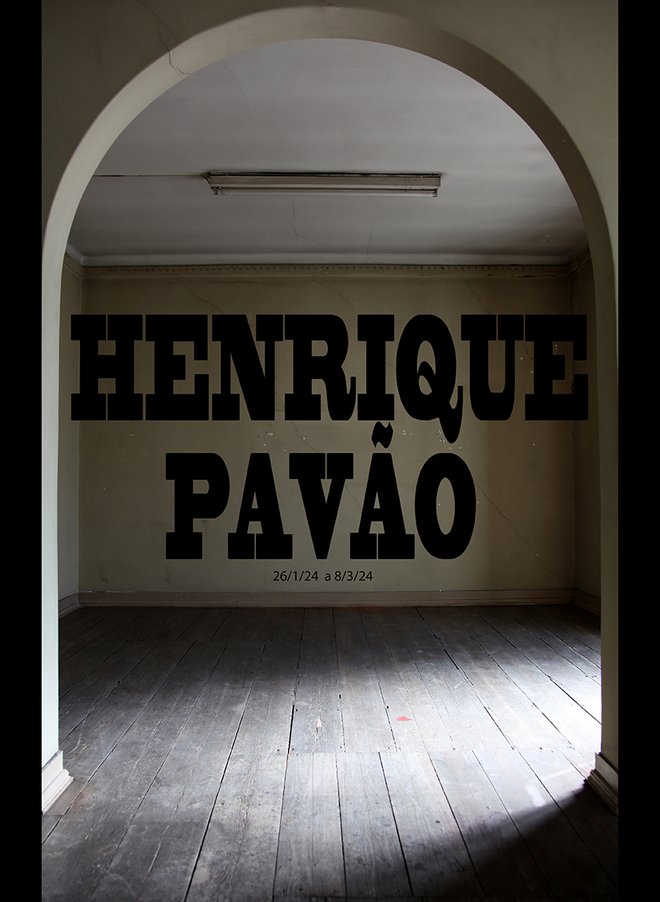
Henrique Pavão
Waiting Around to Die
From the 26th of January to
the 8th of March 2024
Opening: 26 January, from 3.30pm to 6.30pm
Waiting Around to Die
Henrique Pavão (1991) is the artist featured in the seventh and last exhibition of Part 2 of the Casa A. Molder Gallery project.
Waiting Around to Die is the title of this exhibition, which was conceived and created specifically for this space.
To wander around, left to our fate, waiting to die, or else killing time until the final moment arrives. We “kill time” as we destroy ourselves and wait for death, a plight that is conveyed to us through the voice of Townes Van Zandt in “Waiting Around to Die” (1968), a favourite song of Henrique Pavão, who took from it the title of his exhibition.
The artist is about to lose something.
In a sound installation akin to land art, Henrique Pavão prepares for a change. A film is being shot, photographs are being taken and a sound is heard: a D minor chord that is played on an electric guitar by the weather, by nature and by chance.
Out of this project, which is currently being developed in the sort of Portuguese landscape that, in the minds of some, is evocative of the Western film genre, the present exhibition at the
Casa A. Molder Gallery emerges.
Here we have an encounter, a discovery and a deception.
During one of his perambulations through the Alentejo landscape (a scenery with which he is familiar), Henrique Pavão found a cow skull. The remains of an animal that almost surely died of thirst. Pavão’s strolls do not take place across miles and miles of prairie or desert; however, in this small stretch of land, sometimes we find ourselves as much under the sway of nature’s impetuosity as in certain vast expanses somewhere else on the globe. Yet, that is not the case. We are only under the sway of the indifference and impotence of those who take care (or neglect to take care) of these lands.
The skull is no longer bone; now it is bronze, and the sign for the D minor chord that is part of Pavão’s other project has been etched into it. In western music (and elsewhere), this chord conveys sadness and anxiety.
As previously stated, the artist is preparing to lose something and, by doing so, he creates his work. Equally “waiting around to die” is the exhibition’s space, the Casa A. Molder Gallery. Both Henrique Pavão and the space that hosts these bronze pieces (a cow skull and a long cable that would connect an electric guitar to an amplifier) carry loss in themselves. Here we have the encounter. Pavão has placed his bronze pieces (which slowly oxidate, having been purposely left untreated against that process) in a space that is both desert and oasis.
What do we do while waiting around to die? The singer tells us of the sad path of someone who has always been neglected and eventually becomes an addict, which is always a way of waiting around to die. But the artist does not wait. The artist fights death through making, creating and finding: out of this struggle, the sculptures emerge. Henrique Pavão does not want to lose something, but loss is unavoidable, and is “crystallised” in this space lost in time, a hollow that reminds us of something that not so long ago was a part of our collective vision of a city, and is now slipping away from existence.
It is here, in this place of absolute loss, that we will find
Henrique Pavão’s sculptures, and here we will, attentive and committed, wait around to die.
The exhibition is open to the public on weekdays, during the shop’s afternoon schedule, i.e. from 3h30pm to 6h30pm; visits on weekends and holidays can be made by previous appointment. Access to the Gallery is through the shop.
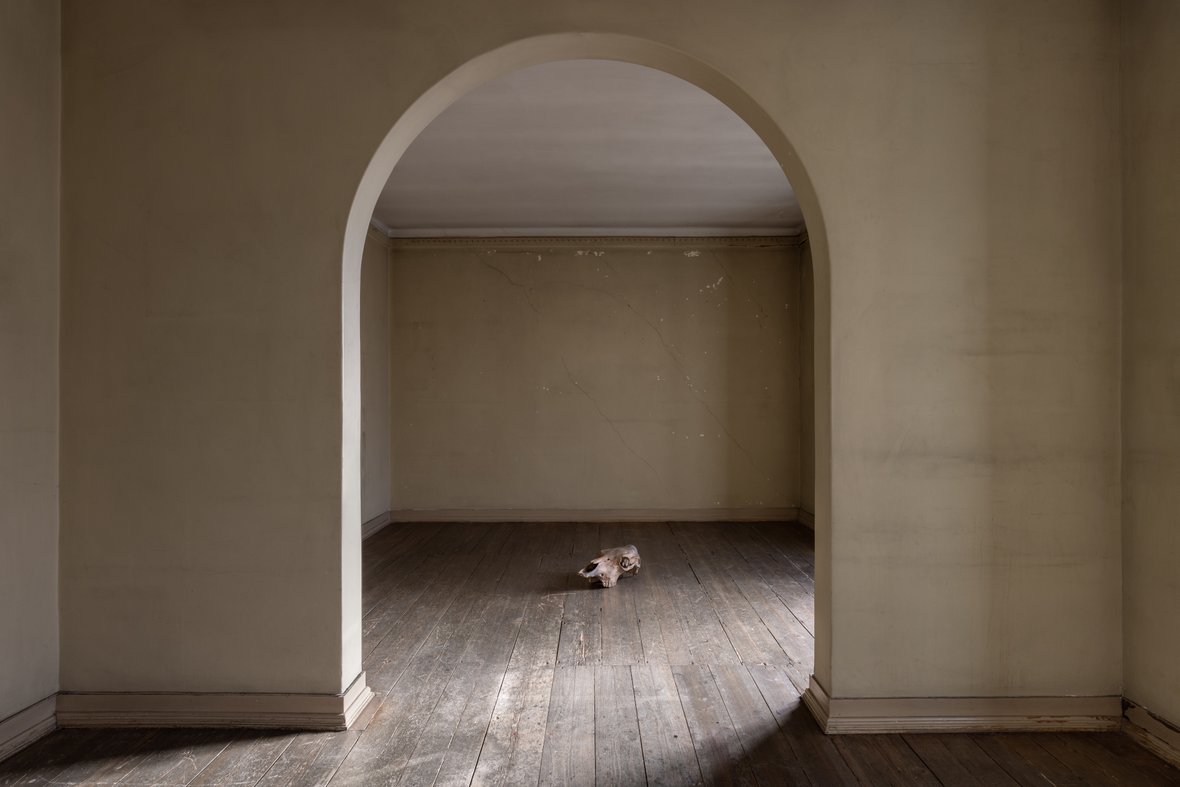
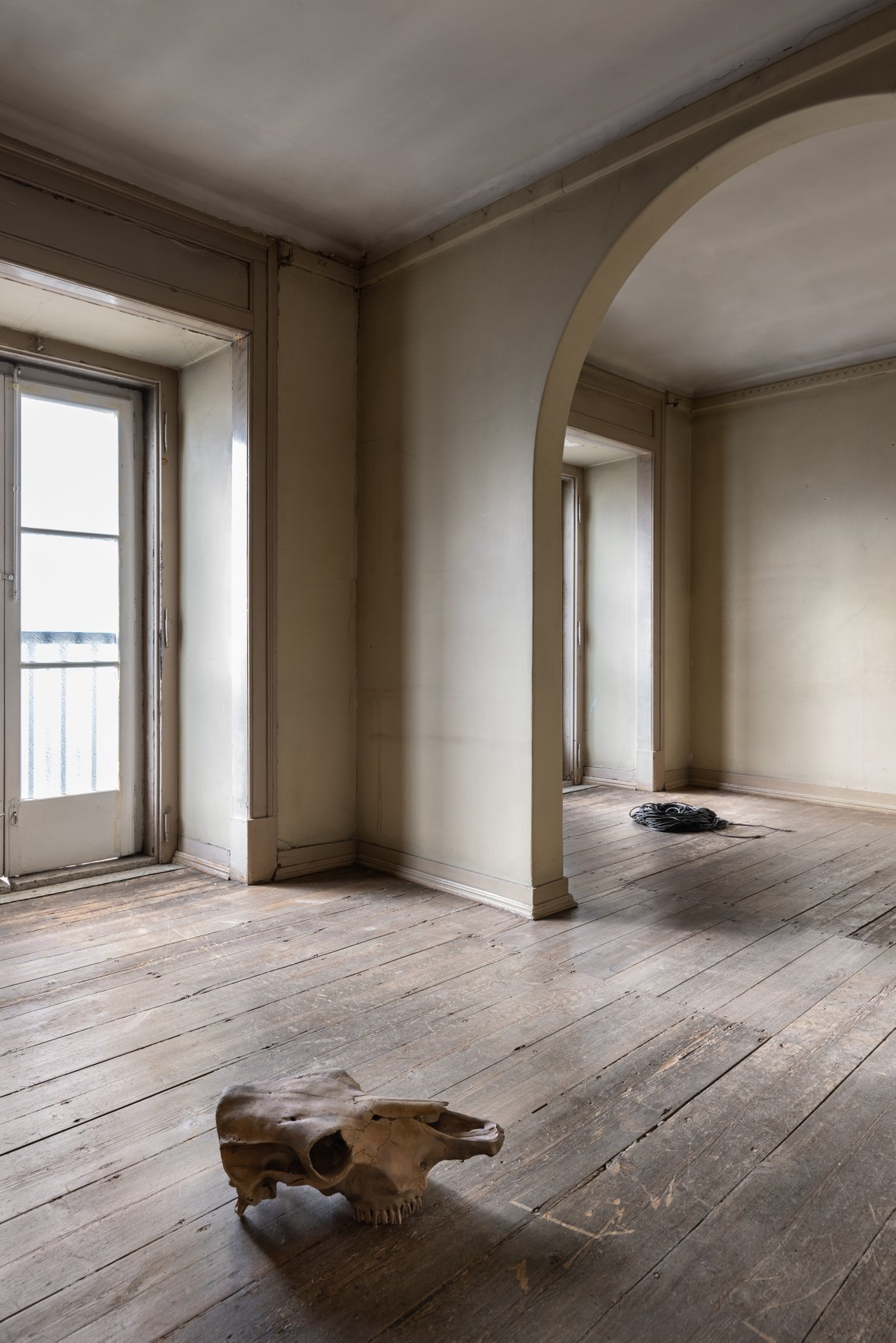
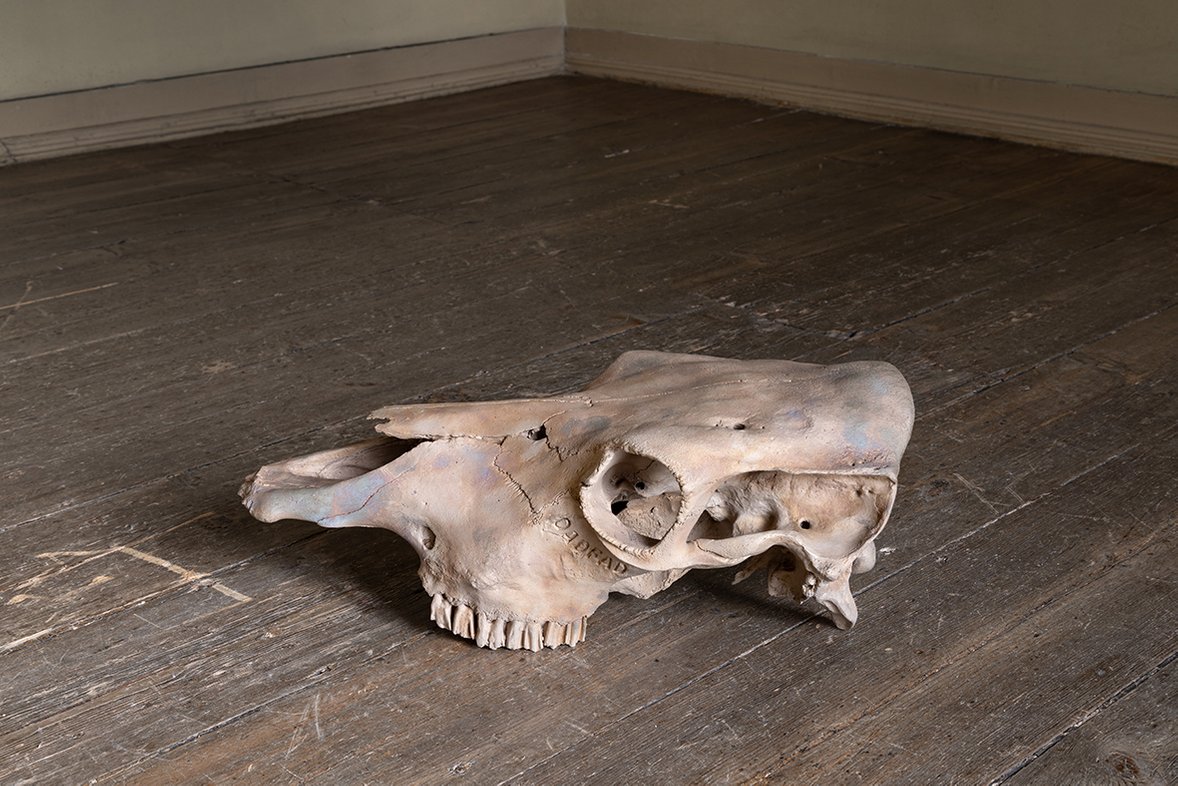
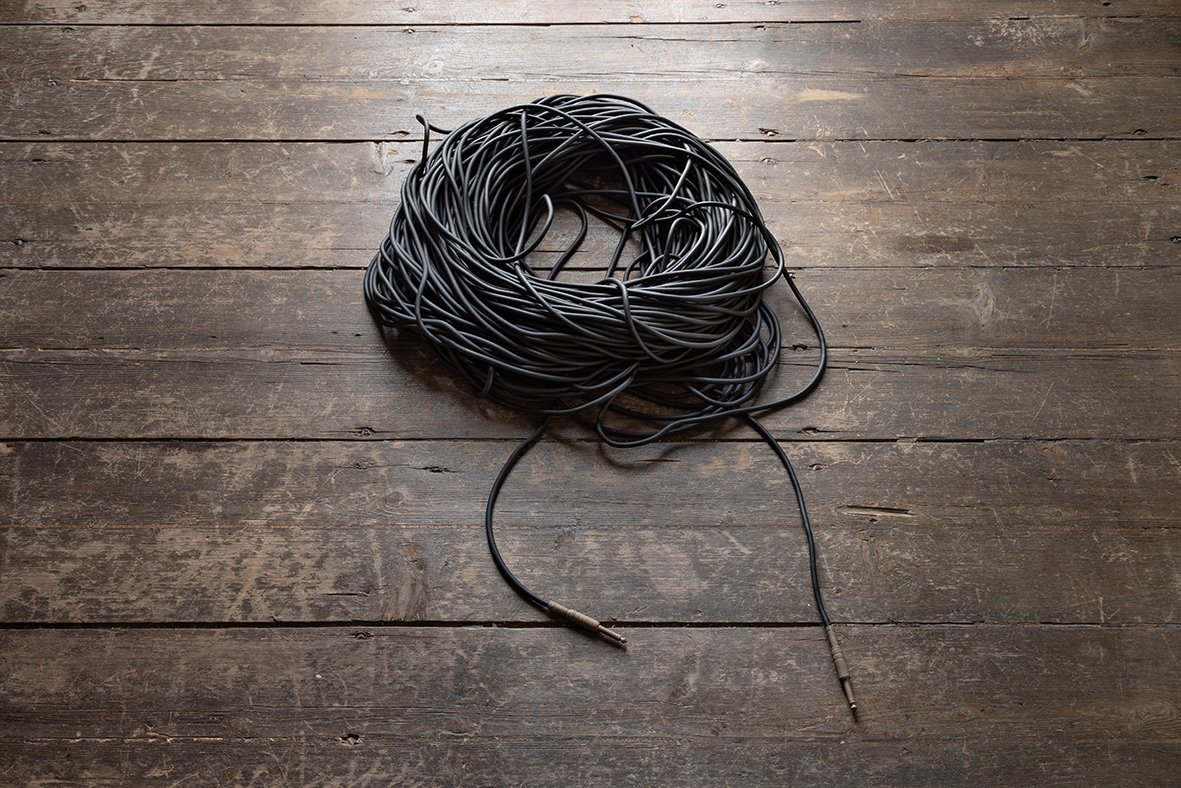
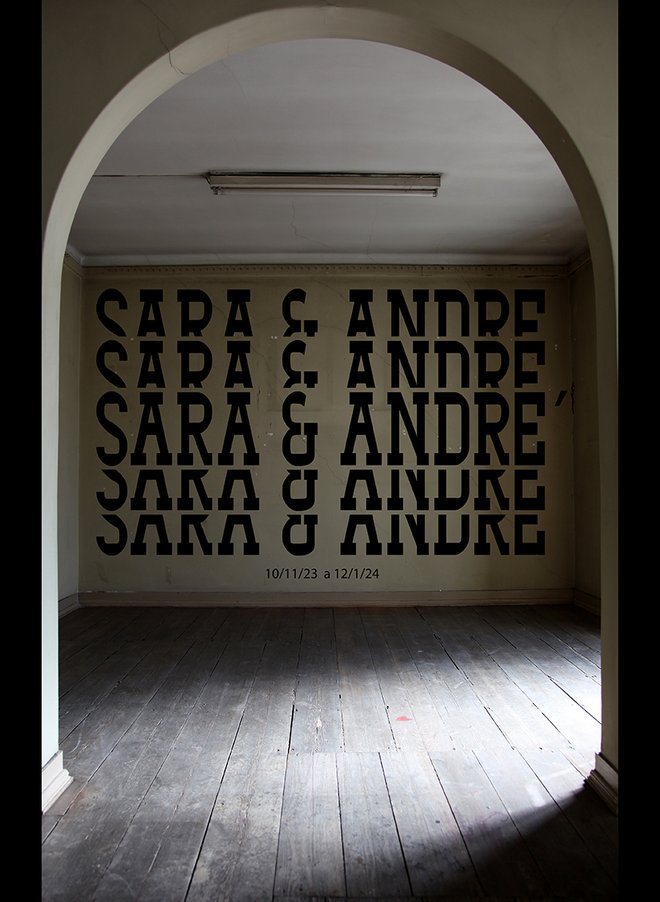
Sara & André
Philately
From the 10th of November 2023 to the 12th of January 2024
Opening: 10 November, from 3.30pm to 6.30pm
Sara & André (1980 and 1979) are the artists featured in the sixth exhibition of Part 2 of the Casa A. Molder Gallery project. Filatelia [Philately] is the title of the exhibition they conceived and created specifically of this space.
The two artists started their work in Philately as spectators. They thoughtfully visited every exhibition of the Casa A. Molder Gallery project, thus developing a very close relationship with this place out of time. The architecturally busy space is both present in and essential to this project, being directly featured in it as a scale model. Sara & André habitually make scale models of their future exhibitions; these are not architectural models, but near-sculptural objects made with simple, sustainable materials, which help them comprehend the spatial arrangement of the pieces they are going to display. The miniature versions of artworks which the two artists place within their scale models are, to them, attractive small objects they find it difficult to part with.
The scale model Sara & André created for this exhibition comprises not just the space of the Casa A. Molder Gallery, but also the shop front and many areas that are closed to the public. These former visitors have become the exhibition’s architects or “designers”. Now, however, the scale model is no longer an experiment in possibilities, but the exhibit itself. Not only that: the artists have in turn gone from architects to curators and collectors.
The “pieces” displayed in this scale model/artwork are stamps that were selected and purchased in the A. Molder Philately shop, the location in which the exhibitions are held. Over time, during their many visits to the shop, Sara & André, like proper stamp collectors, fine-tuned their selection of stamps, focused on reproductions of artworks, largely paintings, but also some sculptures. The stamps they selected and purchased in the shop come from a variety of countries, such as the Congo, Portugal, the Soviet Union, France and Poland, to name a few, and feature works by a wide range of artists, including Ghirlandaio, Paula Rego, Picasso, Jawlenski and others to be discovered here.
These stamps (displayed in philatelic mounts, suggestive of picture frames) are placed within the scale model as the artworks of a prospective exhibition, in light of the connections the artists found in these works by their peers.
But Philately is not intended for some future; Filatelia is the piece they have created for the Casa A. Molder Gallery, a piece that links an obsolete past – the past of stamps as a wondrous way to dream of foreign lands, of a presently almost non-existent value and of a means of exchanging information that strikes us as immensely distant – with the exhibition they bring to the present of this space. We are Gulliver peeking into Lilliput, we are children wondering who may live in that miniature space and we are wanderers, who love art so dearly that we find in this scale model a whole imaginary museum, the product of the imaginations of Sara & André.
Philately can be described as a ‘total work of art’.
The exhibition is open to the public on weekdays, during the shop’s afternoon schedule, i.e. from 3h30pm to 6h30pm; visits on weekends and holidays can be made by previous appointment. Access to the Gallery is through the shop.
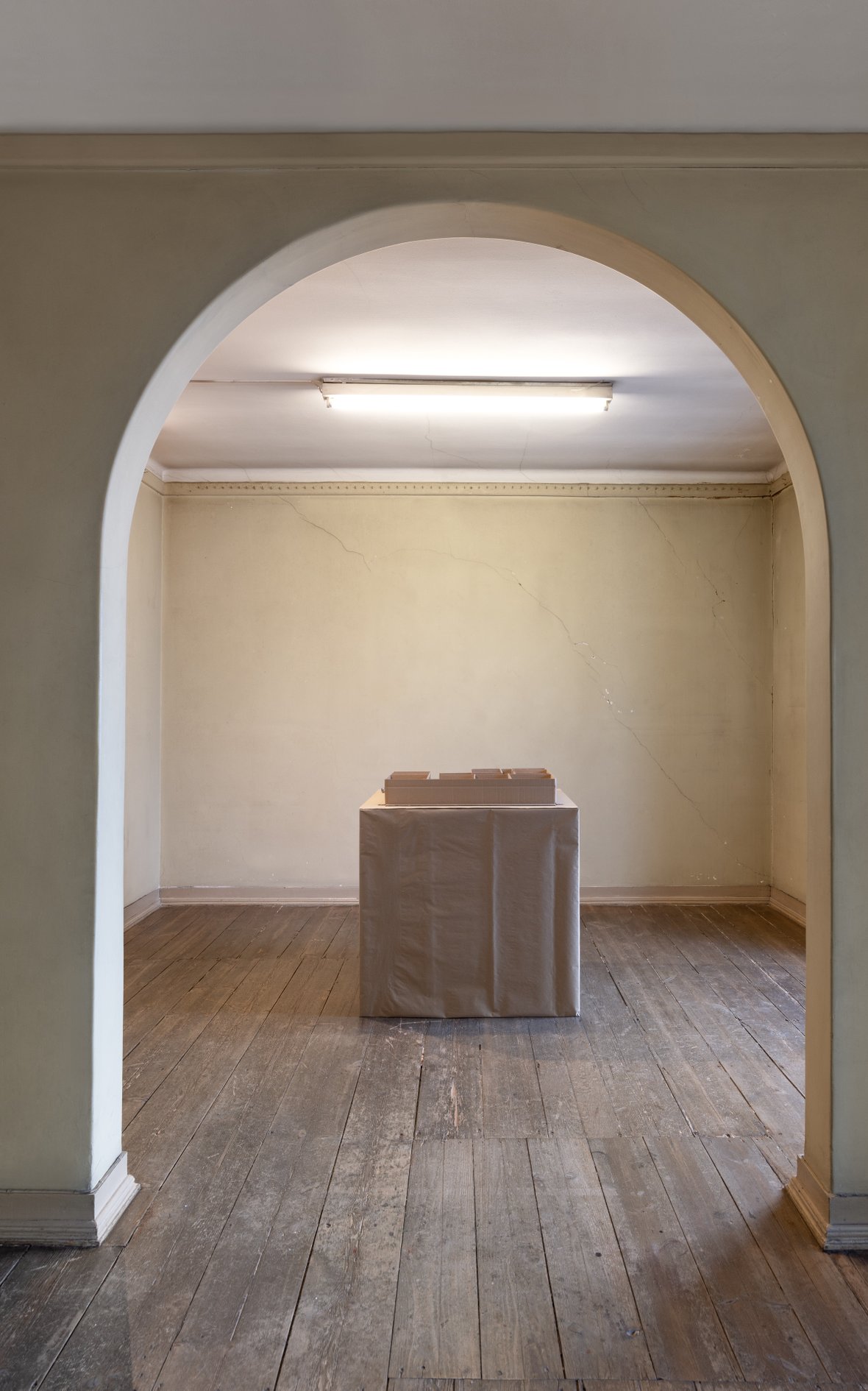
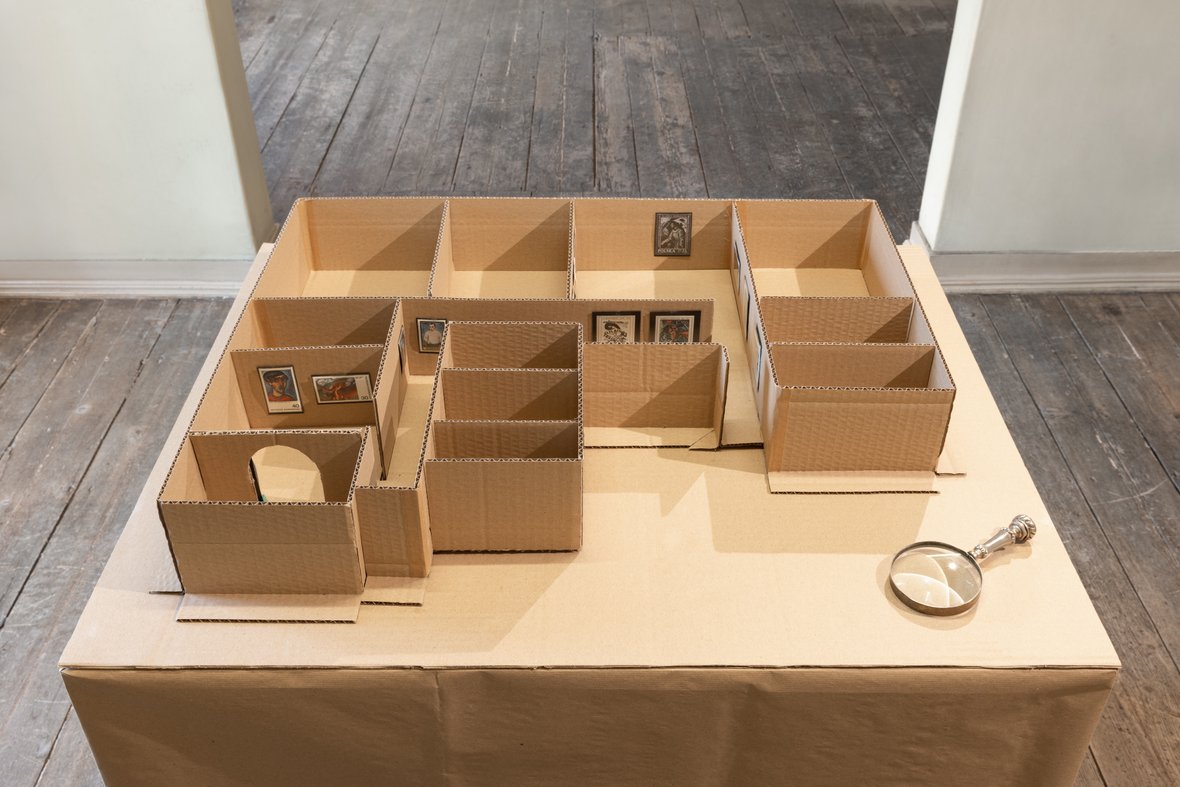
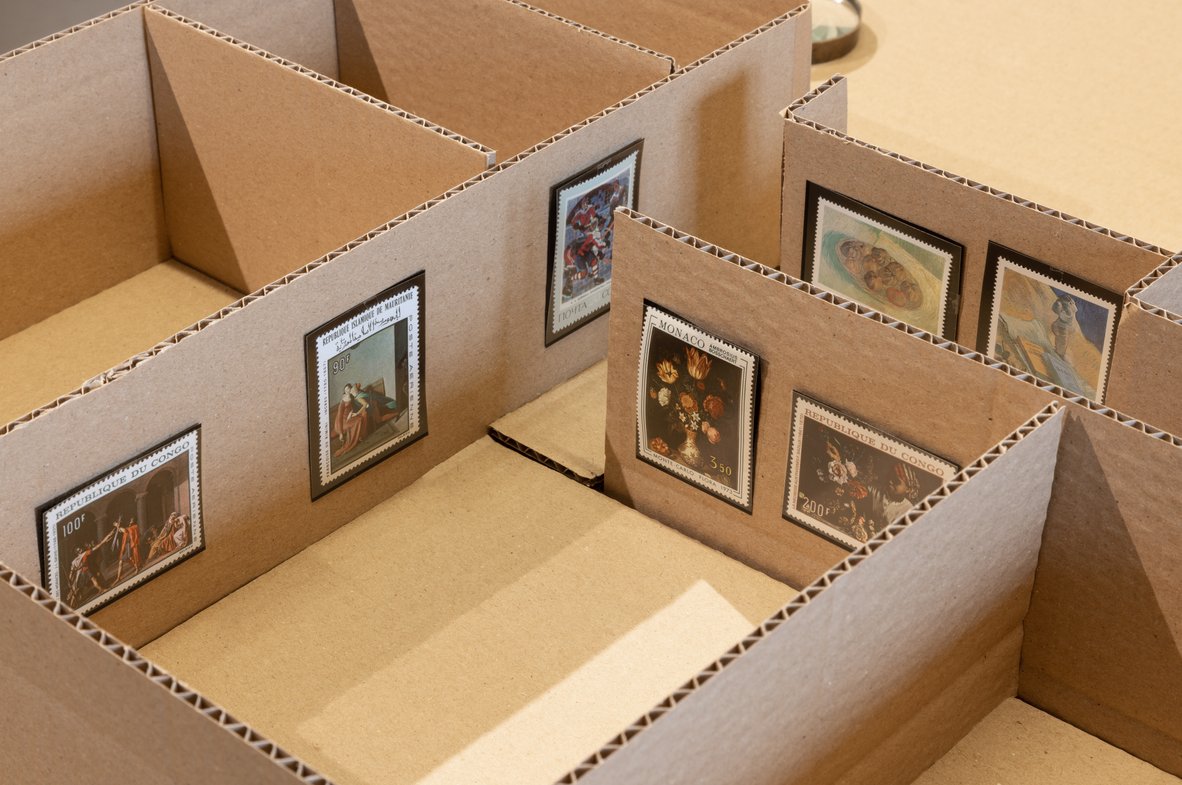
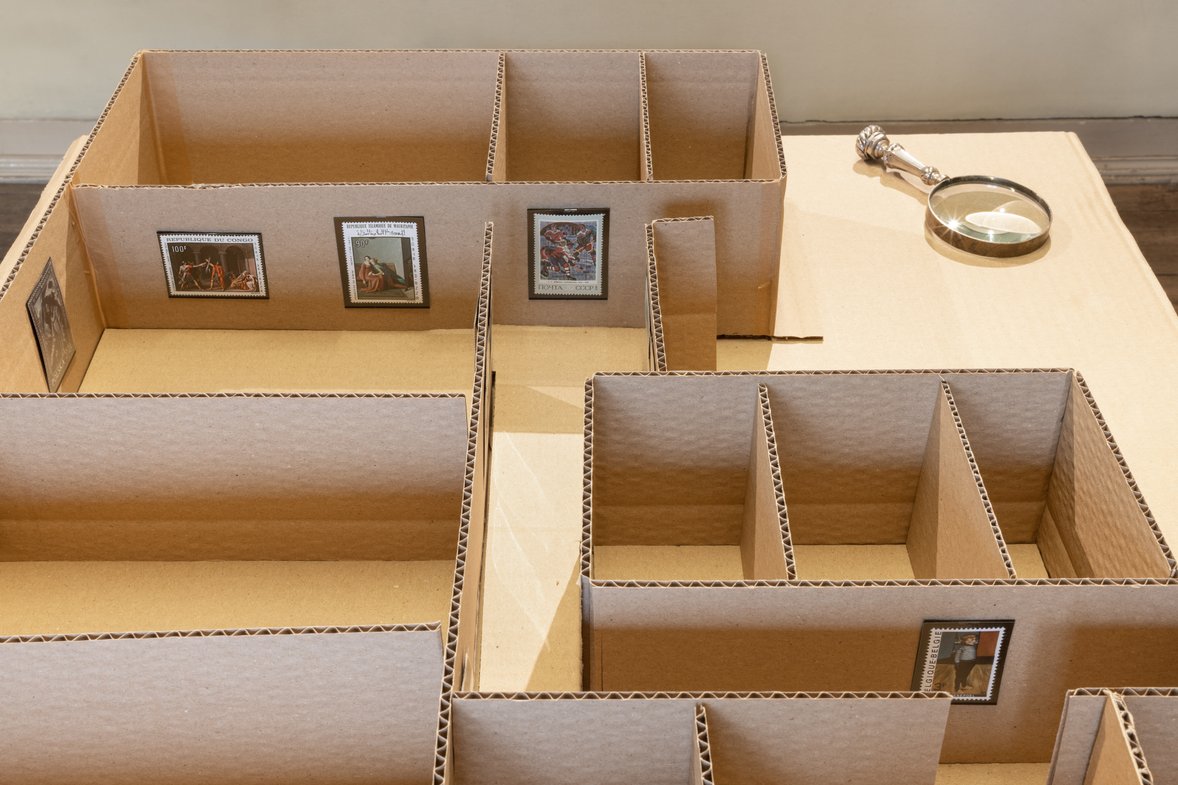
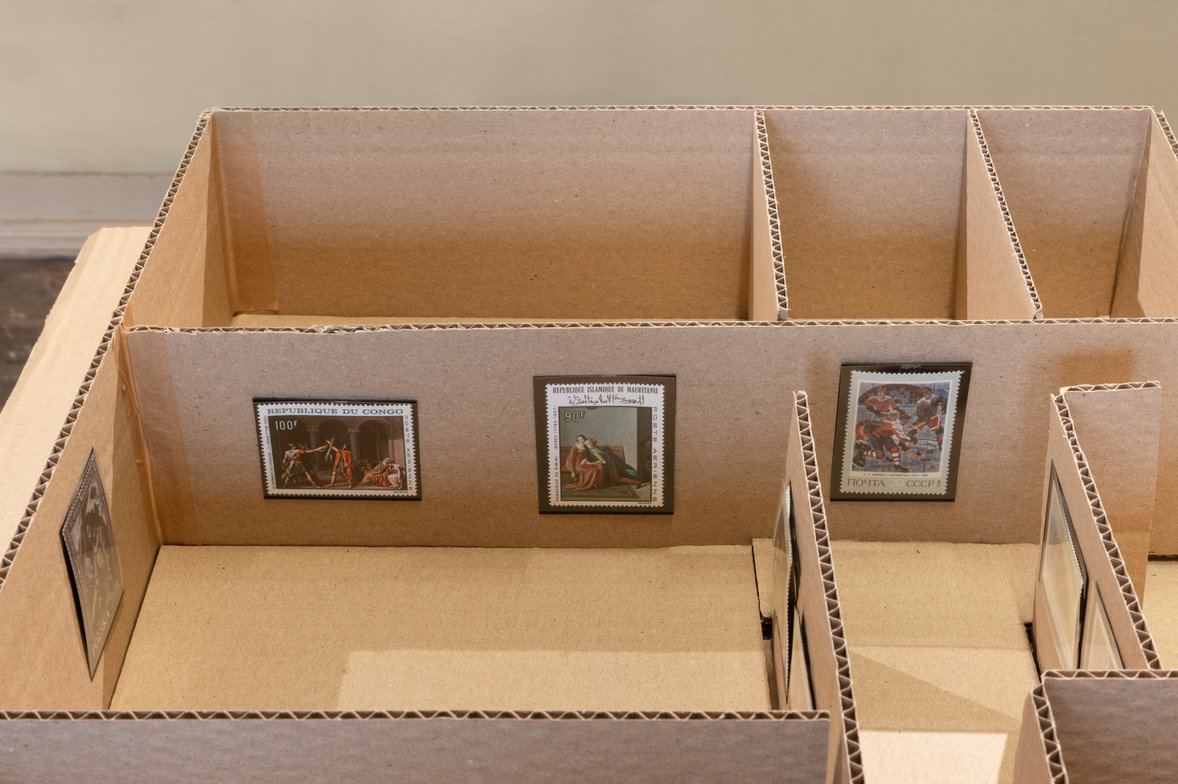

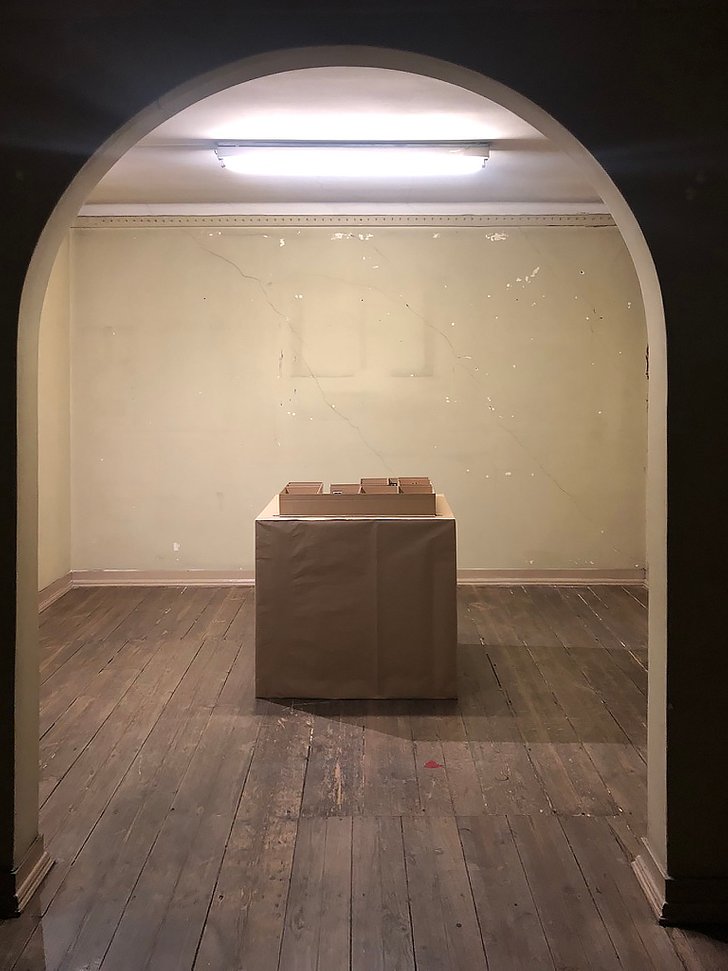
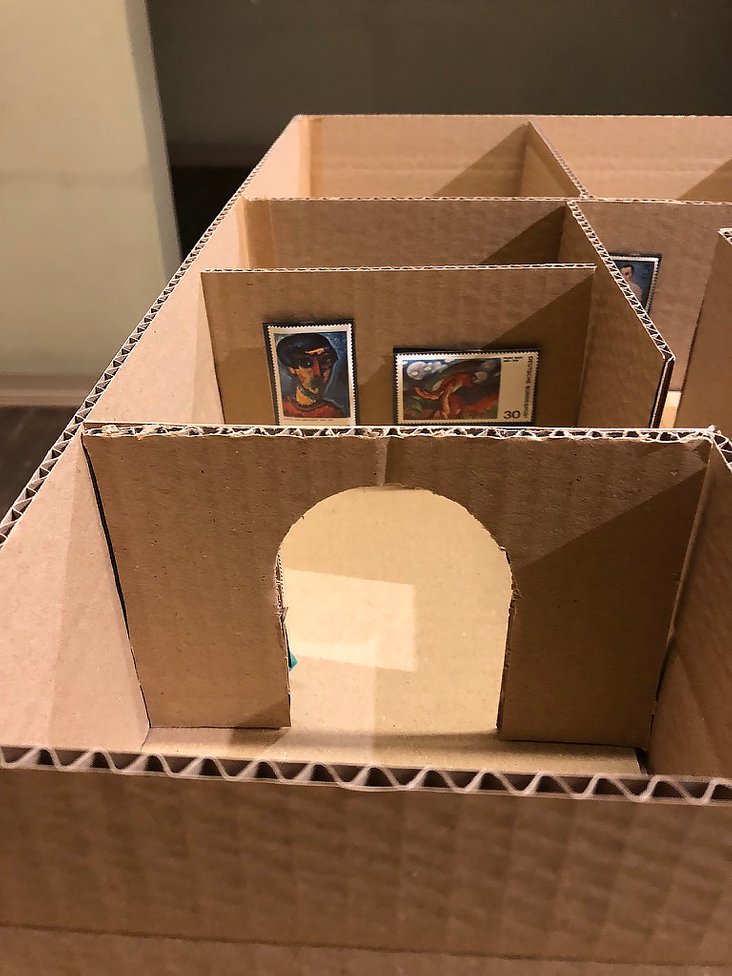
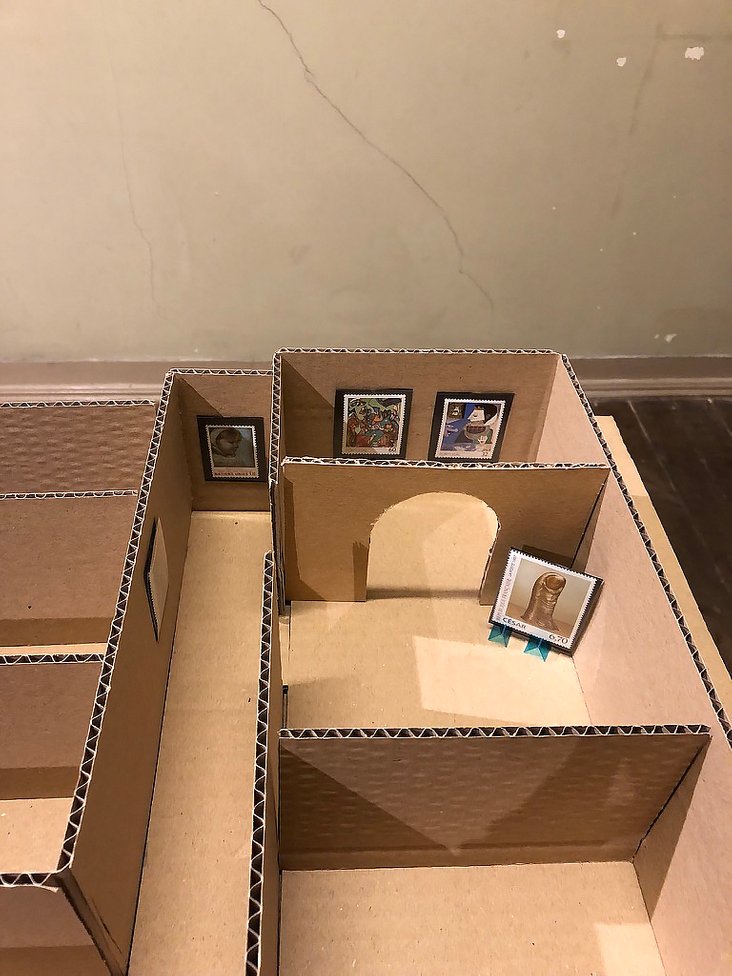
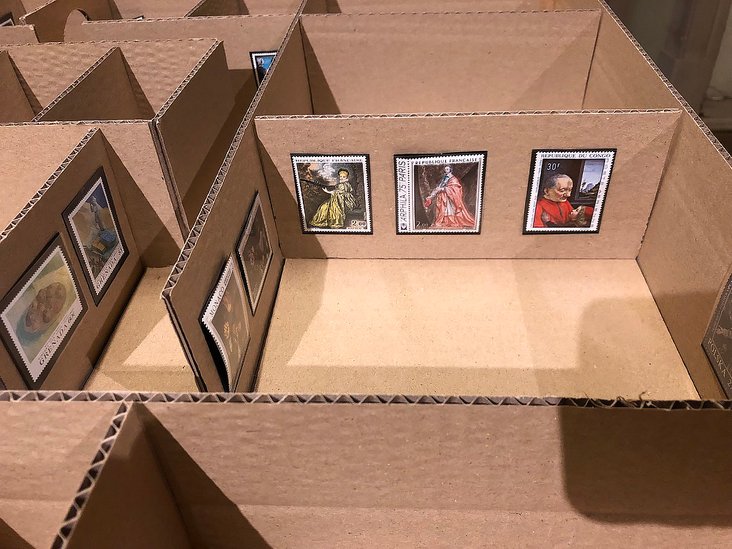
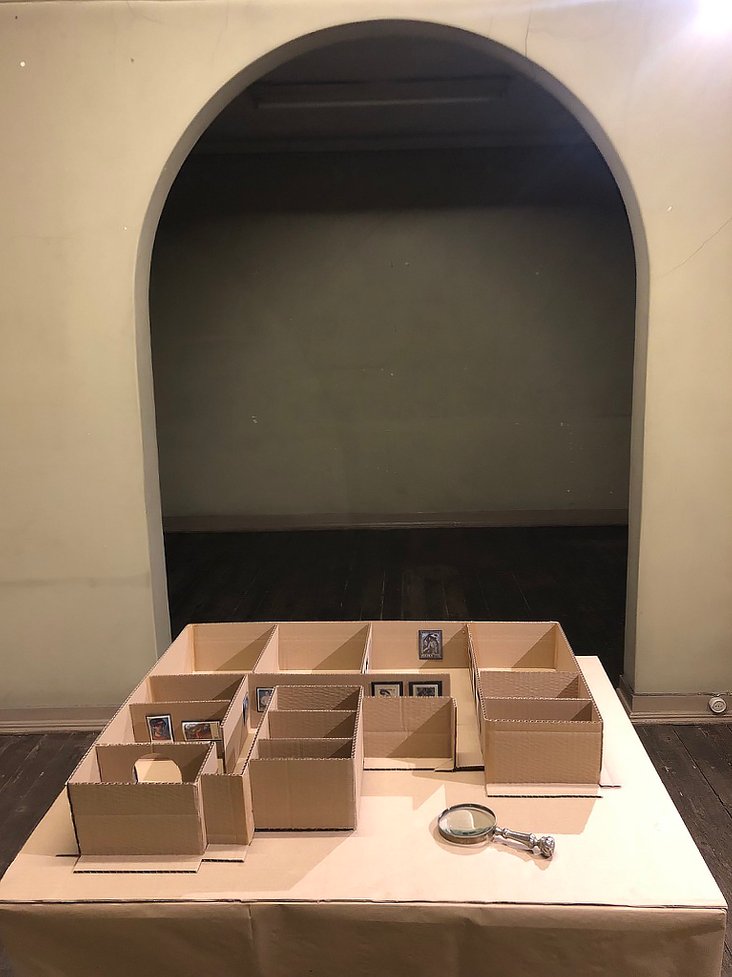
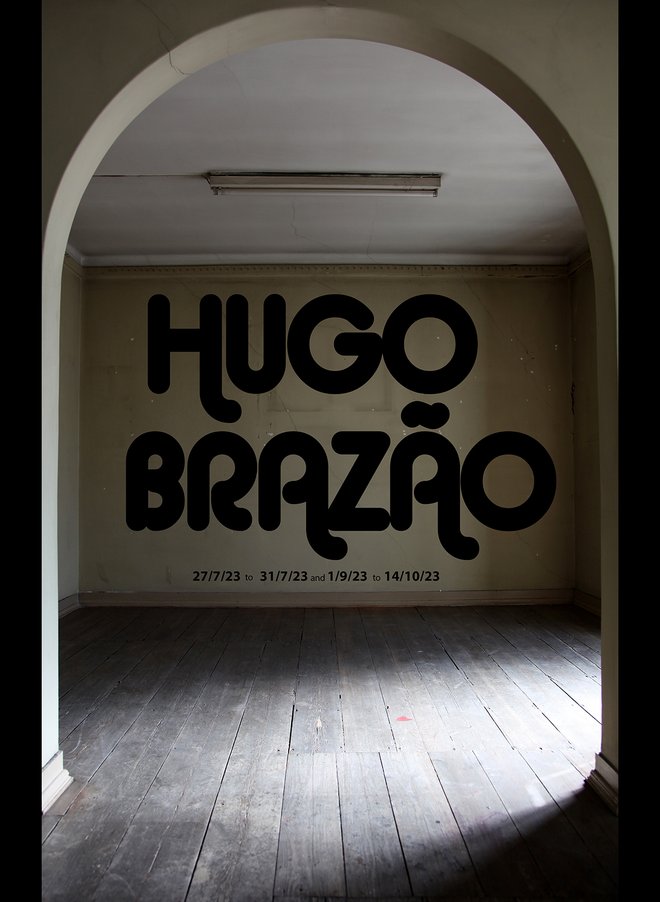
Hugo Brazão
Toad on the Moon
From the 27th of July to the 31st of July
and from the 1st of September to the 3rd of November 2023
Opening: 27 July, from 3.30pm to 6.30pm
Hugo Brazão(1989) is the artist featured in the fifth exhibition of Part 2 of the Casa A. Molder Gallery project. .
Toad on the Moonis the title of the exhibition, which the artist conceived specifically for this space.
Using the sort of bright, almost playful colours we often associate with Pop art and a variety of materials, such as fabric, wood, resin, pigments and wool, Hugo Brazão tells us of the inescapable.
Toad on the Moon is a set of sculptures, a dazzle of colour and materials that contrast with the gallery space: frozen in time, its colours old and faded as an expanse of still water, a lagoon that hosts these pieces. The two sculptures, one in fabric and wood and the other in resin, pigment and wool, tell us of the wonders that can be seen on the moon, that satellite of Earth, so close to it and so coveted. The figures we see on the moon are, in many different cultures, silhouettes of animals. For instance, in Chinese tradition the toad, an animal of ill fame in the West, where it is associated to the fear of darkness and seen as hideous and clumsy, is the animal seen on the moon – a goddess who was turned into a toad after escaping to the moon with the gift of immortality.
We see a drawing in wool of the toad, a silhouette with its four feet on the ground and contained in a circle, inside the resin wall piece, an unusual mix of materials knitted together by Hugo Brazão. Away from the realm of mythological wonders, we also think of this ill-reputed “gardener’s friend” as the subject of frightening scientific experiments. It is here, in the floor sculpture, evocative of a fabric flame with a moon-like interior, that the analogy between the toad that is slowly being heated, getting accustomed to the rising temperatures that will ultimately exterminate it, and our existence on earth, increasingly threatened by global warming, is activated. The frog on the moon, that goddess of reflected light, that moon we associate with madness, as in the irrational and wasteful desire to fly to the moon while the earthly paradise is being destroyed.All this is conveyed to us through simple plastic forms and malleable materials that we are familiar with, and drawings that stand out.
With a measure of delight, Hugo Brazão shows us the apocalypse.
The exhibition is open to the public on weekdays, during the shop’s afternoon schedule, i.e. from 3h30pm to 6h30pm; visits on weekends and holidays can be made by previous appointment. Access to the Gallery is through the shop.
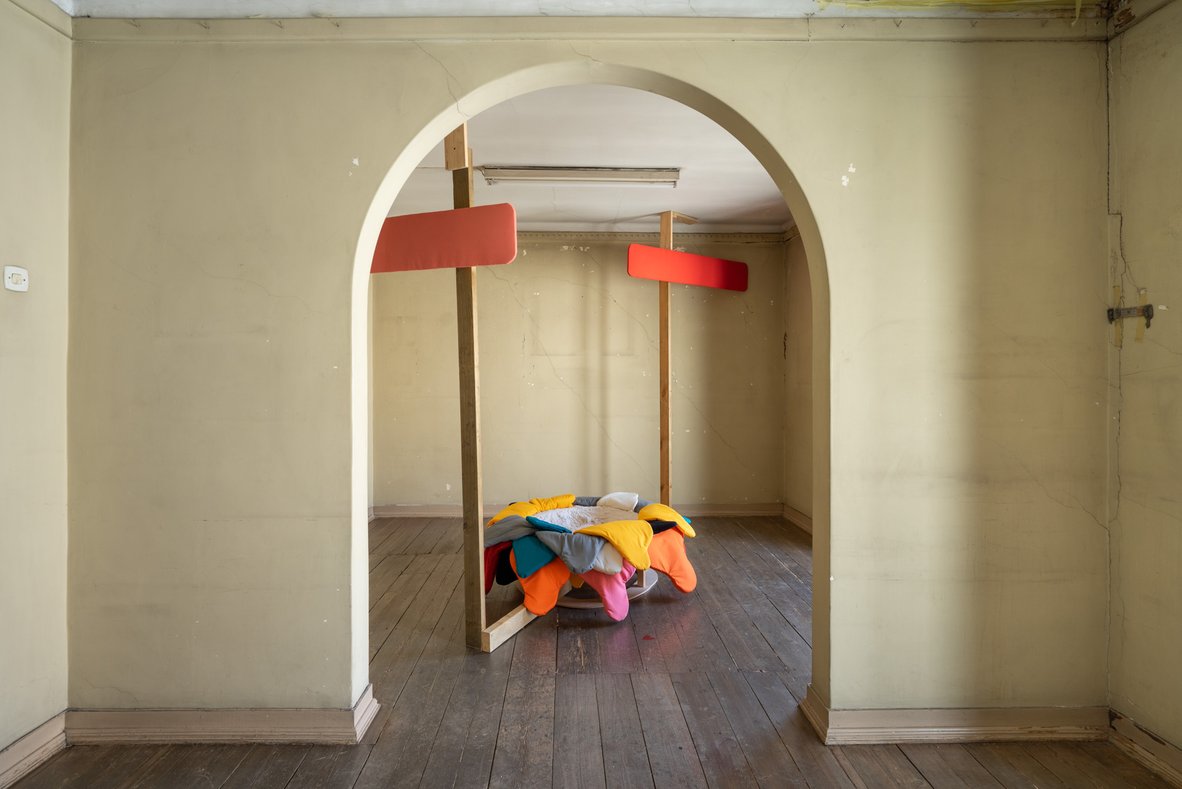
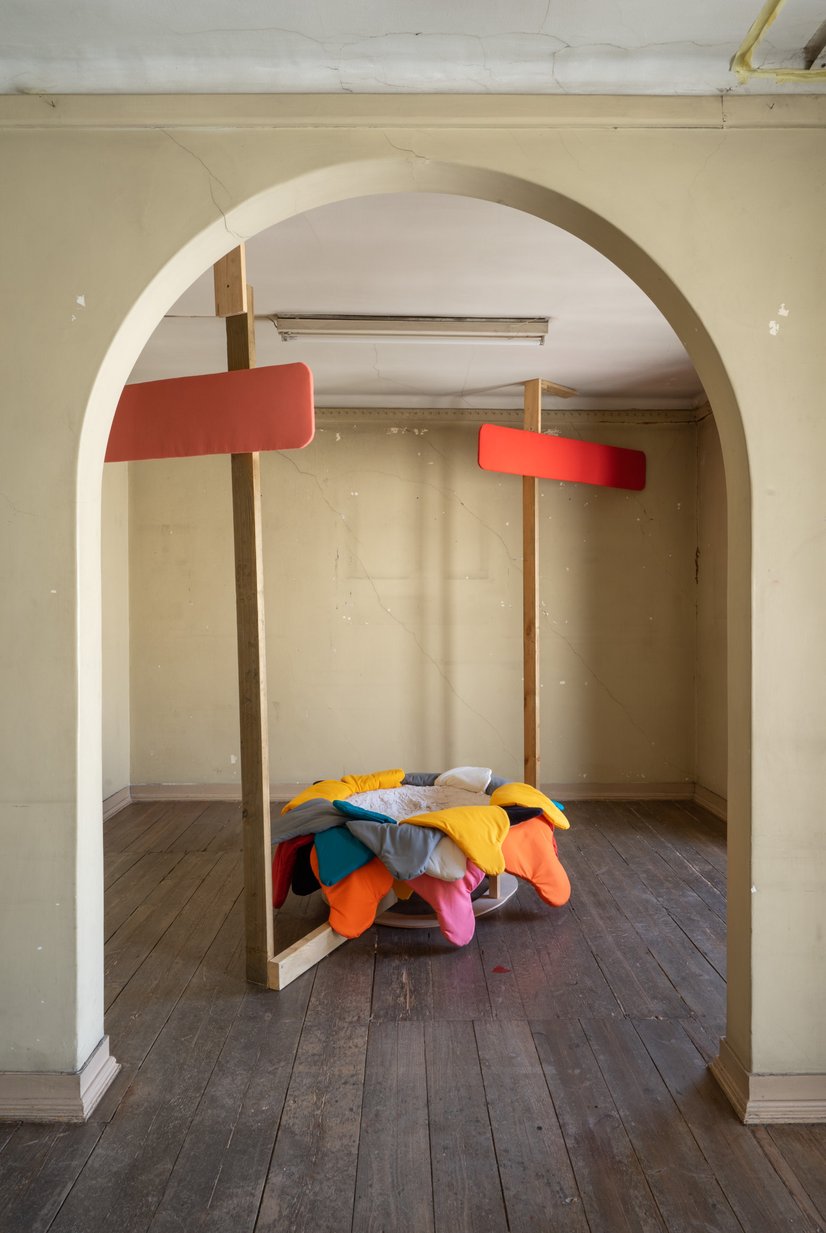
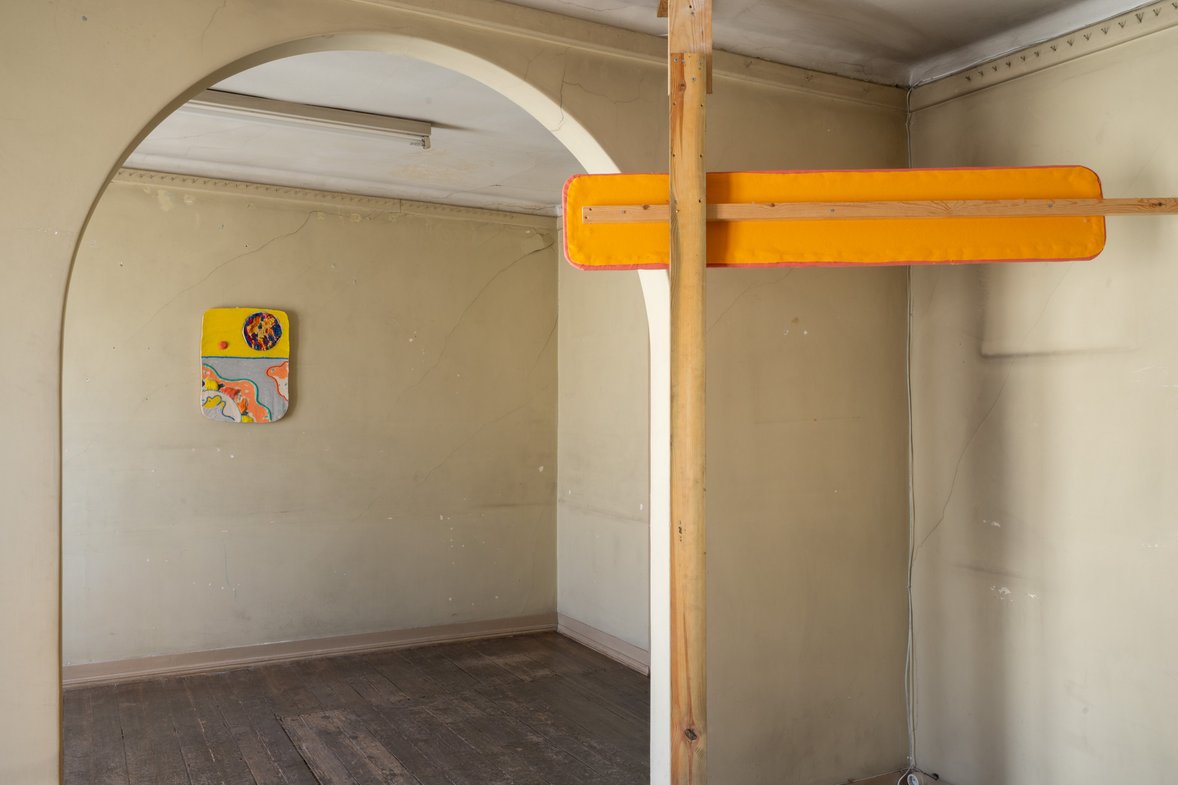
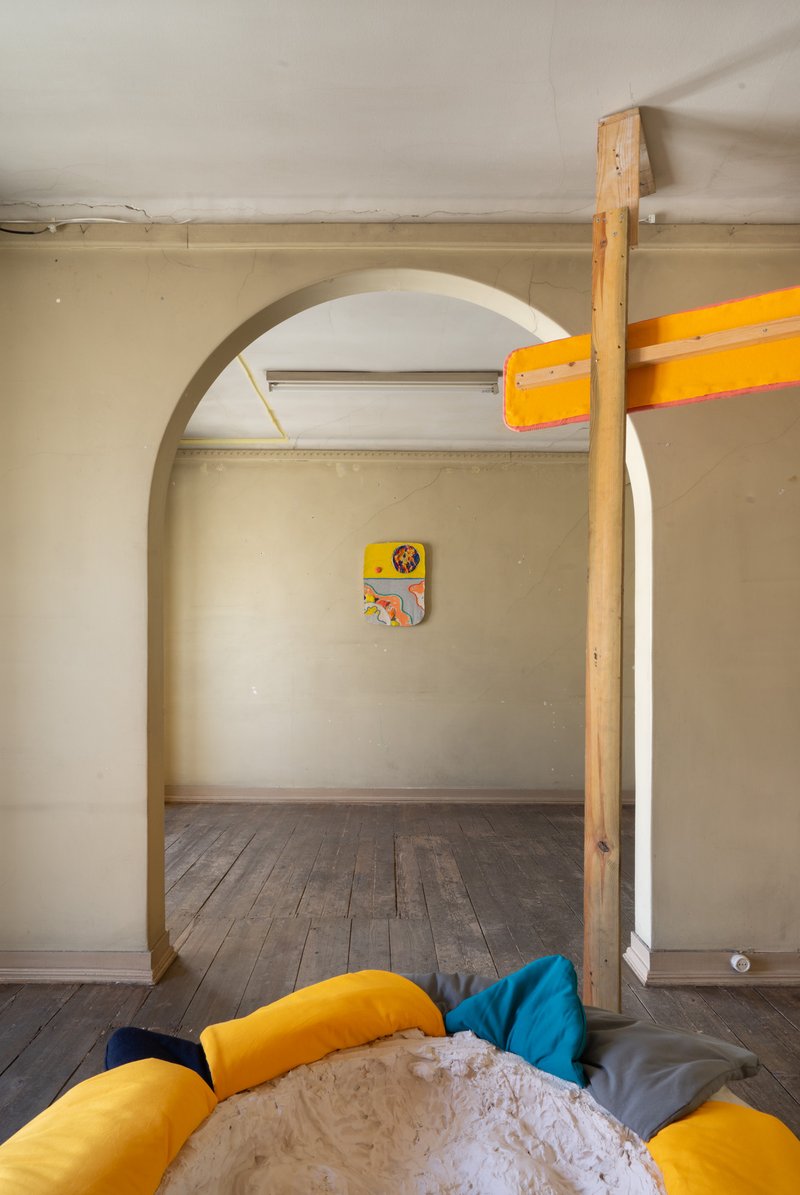
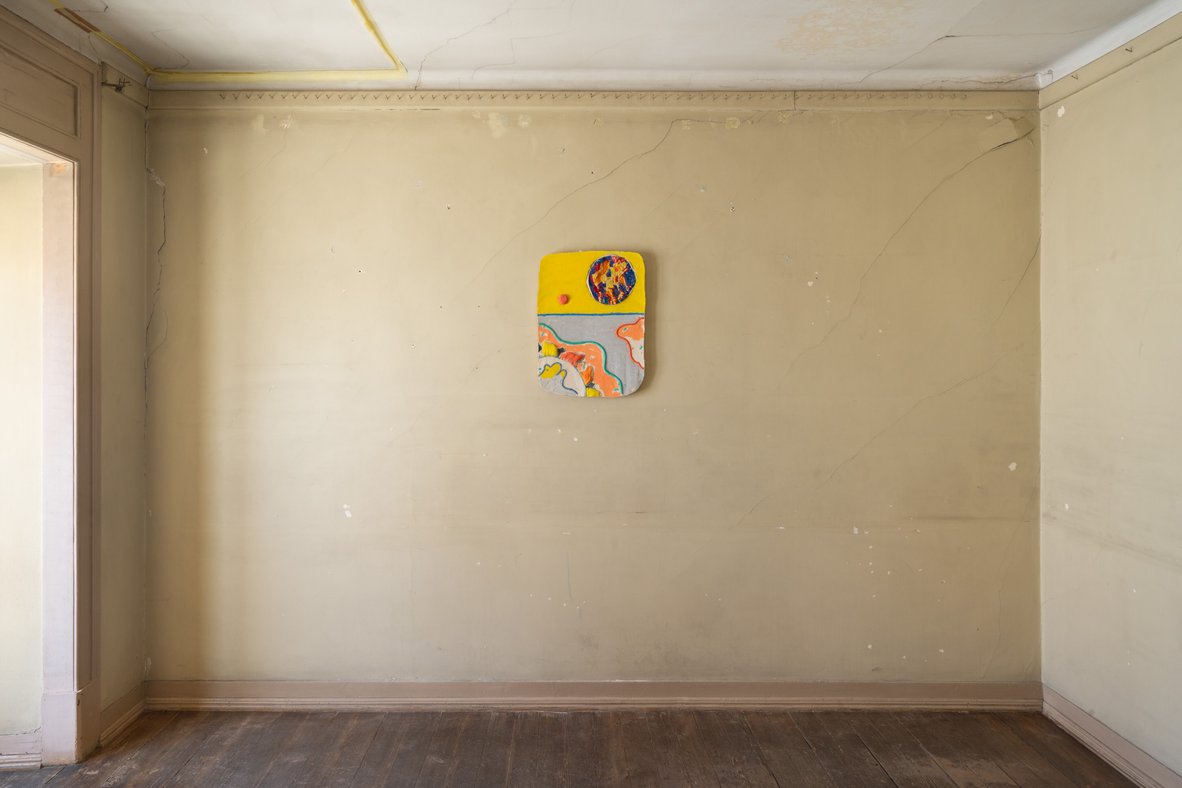
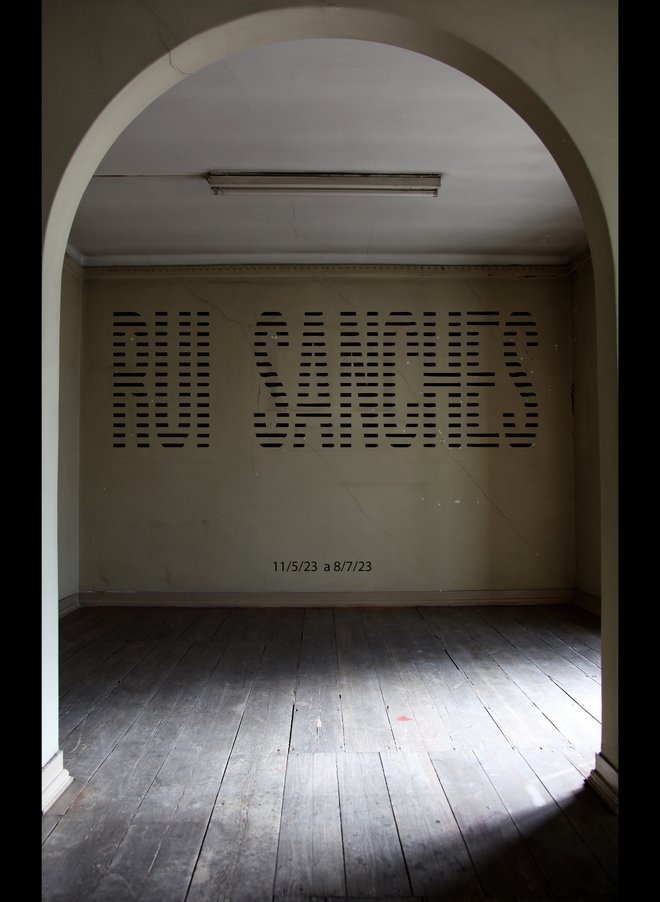
Rui Sanches
Saint Denis of Paris?
From the 11th of May to the 8th of July 2023
Opening: 11 May, from 15h30 to 18h30
Rui Sanches (1954) is the artist featured in the fourth exhibition of Part 2 of the Casa A. Molder Gallery project.
São Dinis de Paris? [Saint Denis of Paris?] is the title of the installation that the artist conceived specifically for this space, and also the title of the exhibition.
We enter the gallery. Something has changed. One world has turned into two and we do not know on which side we stand. Are we wandering through the looking glass or are we about to enter it? Will we be imprisoned if we pass through the arc? Are we brave enough to do it?
Yes, we were brave enough many times before, but now something tells us that we are in danger of losing our head. The clue is in the title: Saint Denis, the martyred patron saint of Paris, of whom it is told that he walked two miles with his own head between his hands, after being executed through decollation, and preaching all the way from the Mount of the Martyrs (Montmartre) to his church.
In Saint Denis of Paris? the head appears doubly, and the same applies to all the fragments, which have been turned into boxes. They are made of wood and are no longer alive; however, we are not sure if they contain relics.
But, attention: there is also the small mirror that transforms into an enveloping whole. It is this small mirror that dares us to be brave enough to pass on to the other side. On this side, and on the other, there are also the windows. Once they were side by side. Now, they face each other. Please notice: they are no longer windows, they have become doors. Their mirrors will turn our bodies into fragments and probably cut off our heads.
Before we pass to the other side we may, just to be sure, peek through the long, slender box. Perhaps we will be able to see the other side, or perhaps we will see ourselves: fragmented, disoriented, astonished.
The exhibition is open to the public on weekdays, during the shop’s afternoon schedule, i.e. from 3h30pm to 6h30pm; visits on weekends and holidays can be made by previous appointment. Access to the Gallery is through the shop.
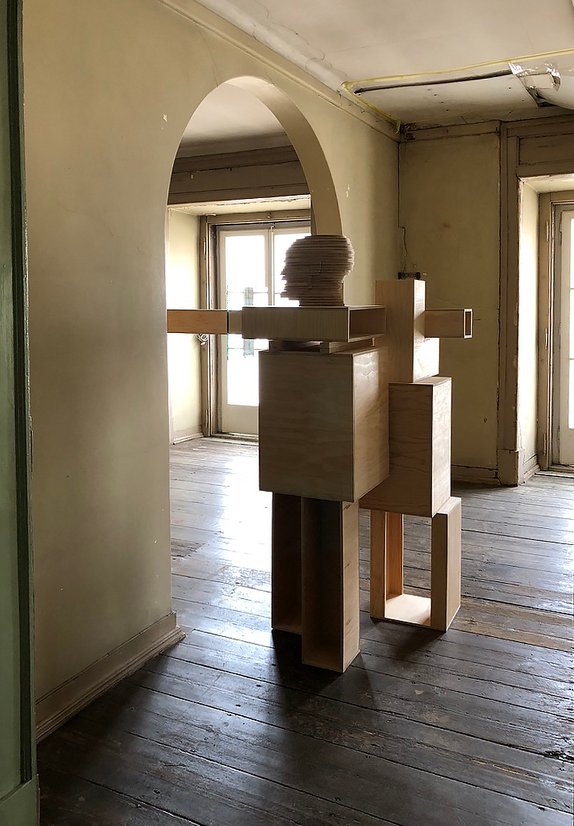

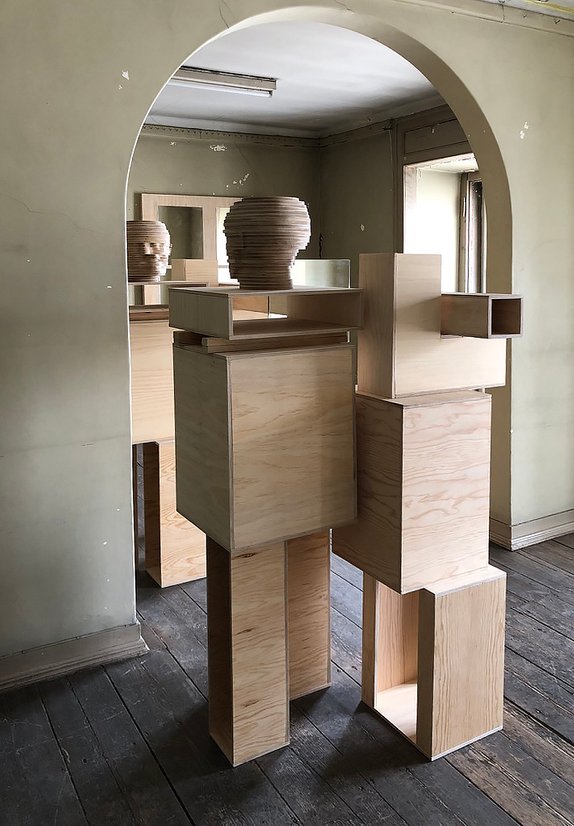
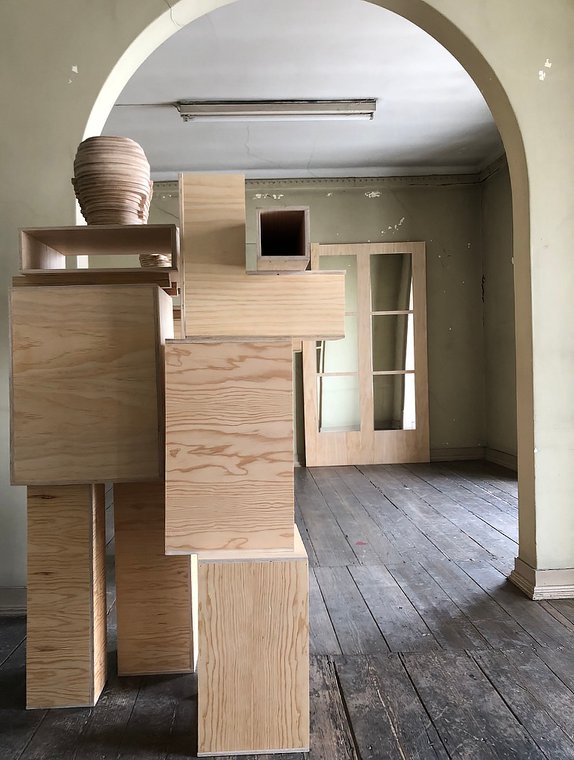
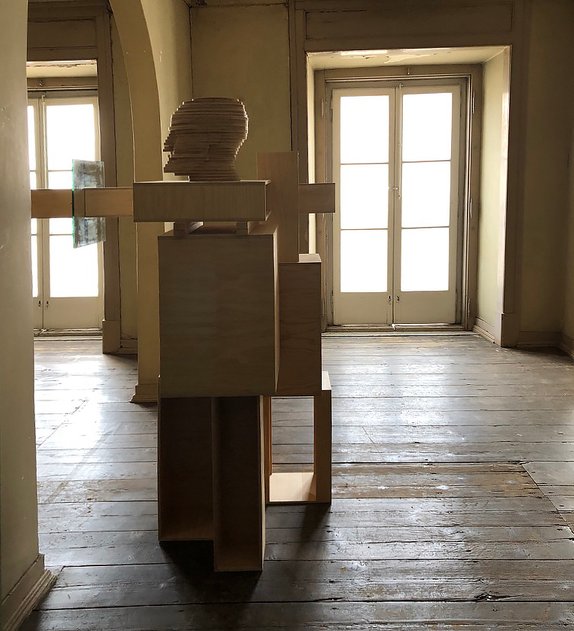
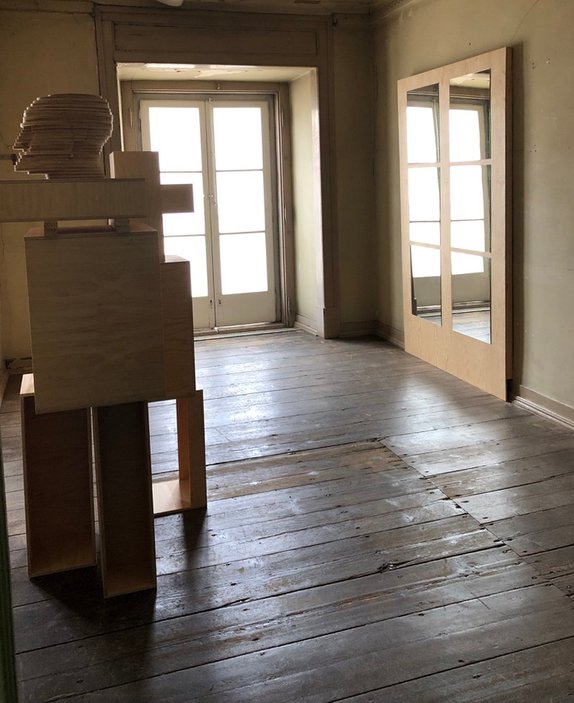
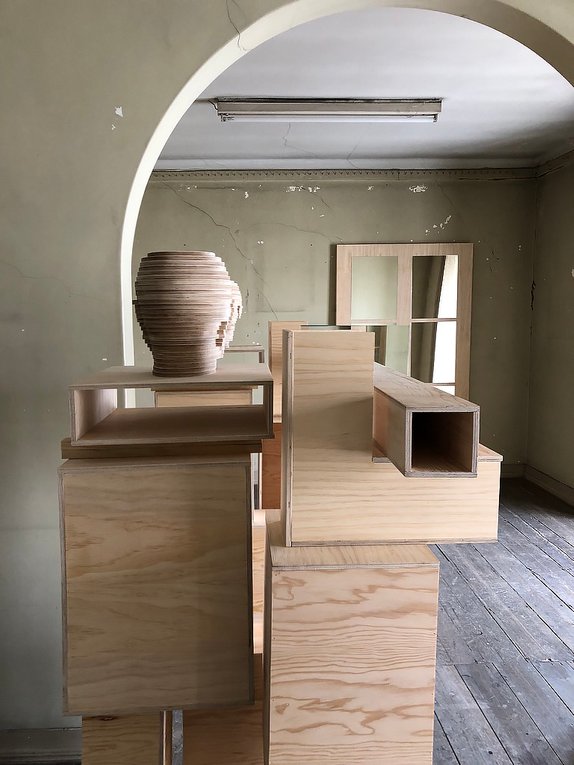
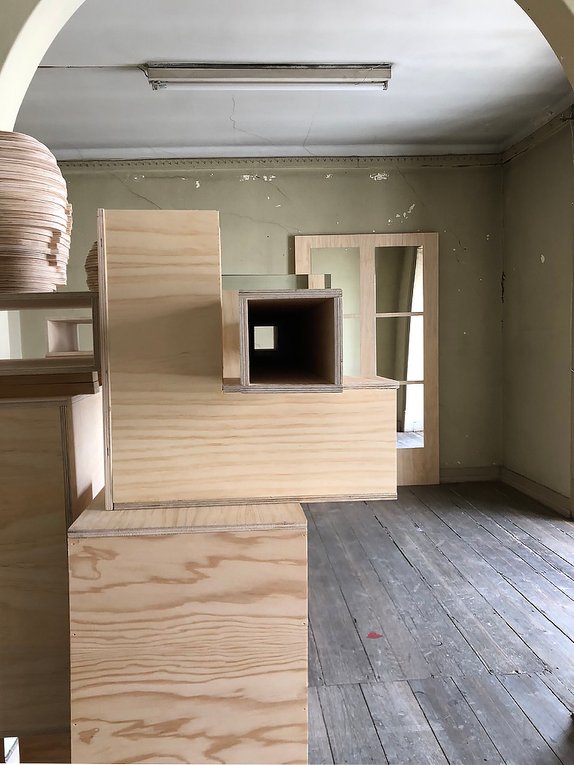
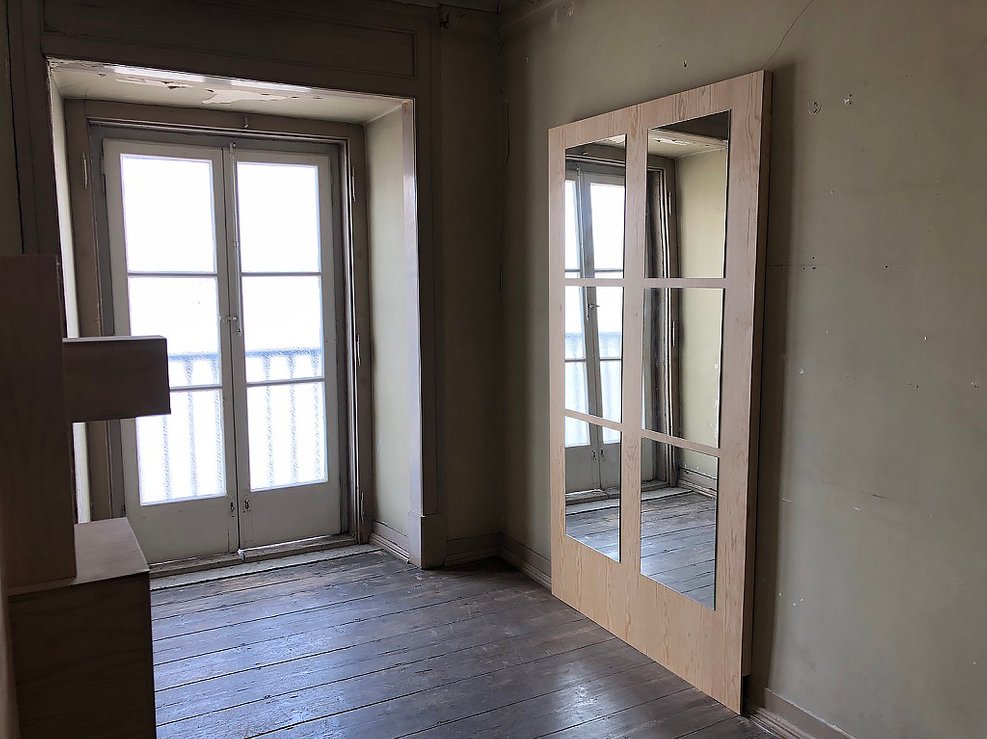
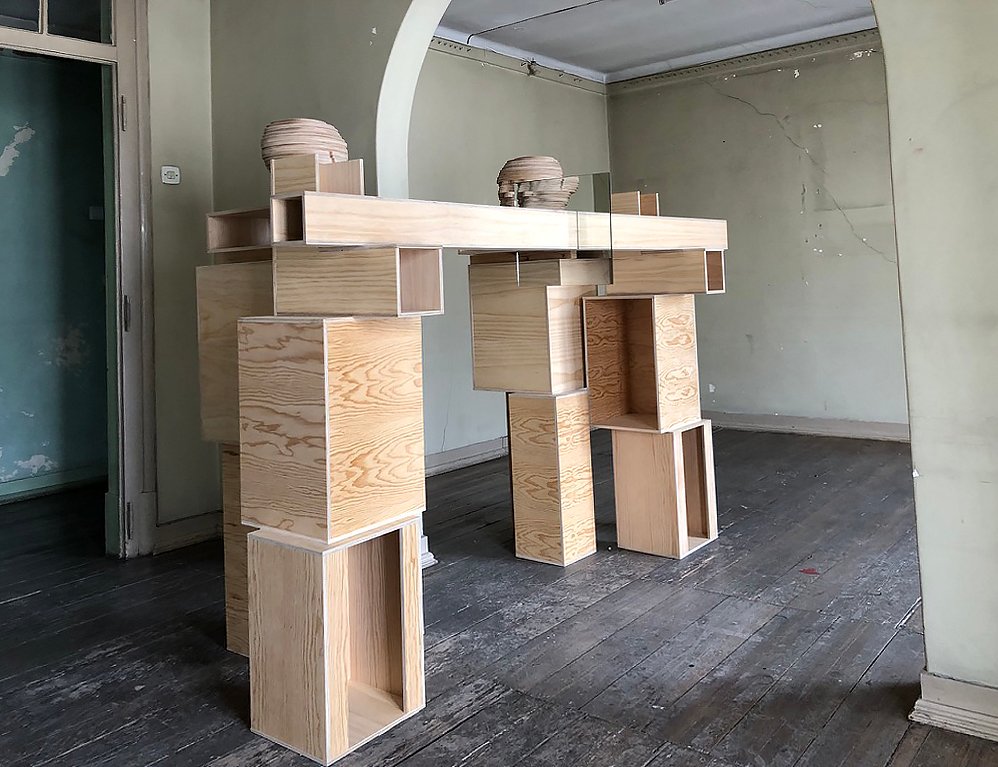
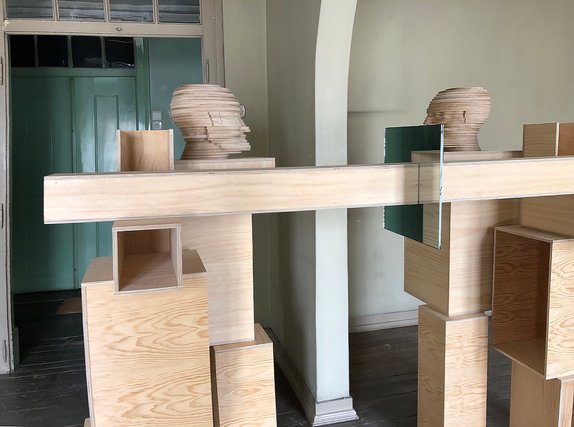

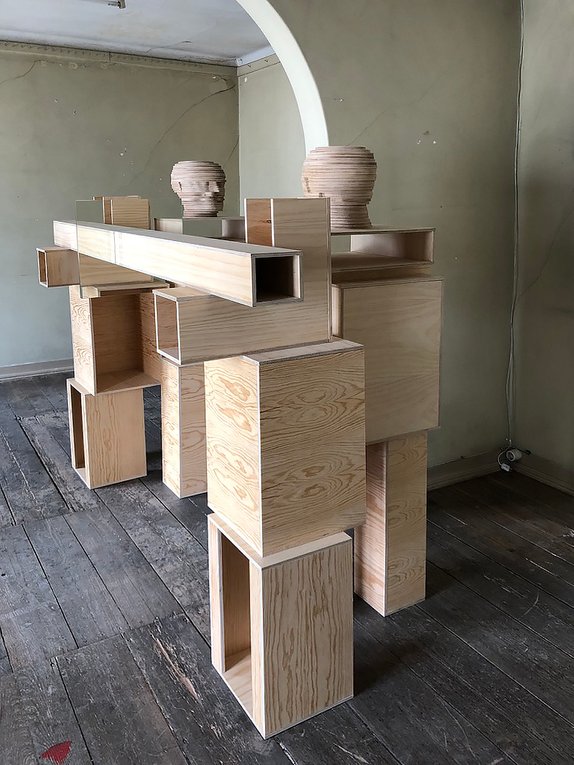
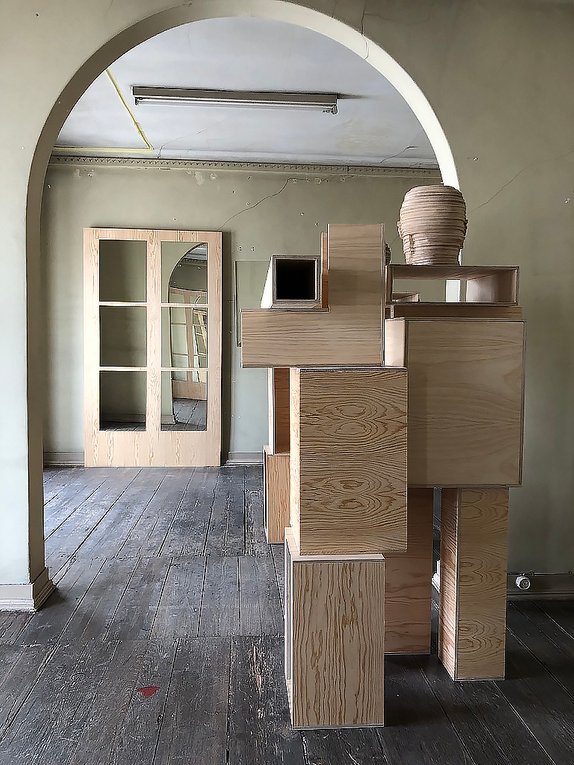
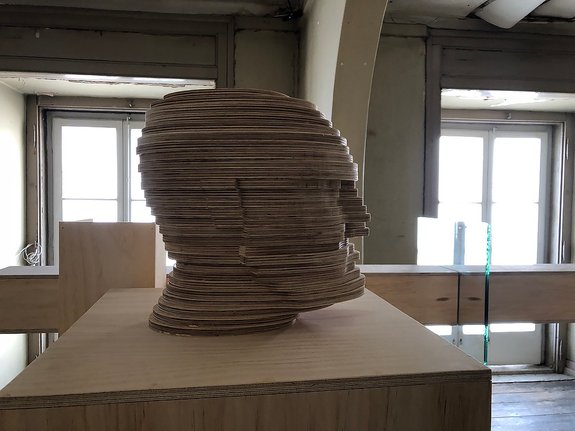
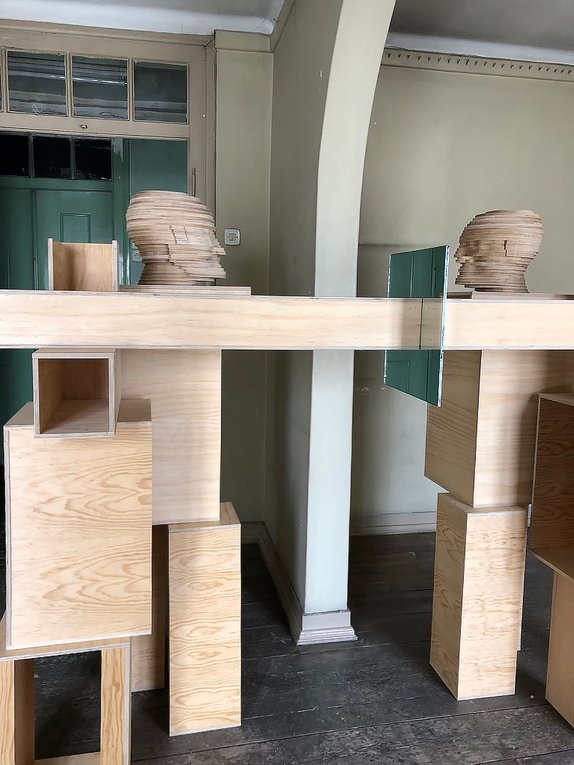
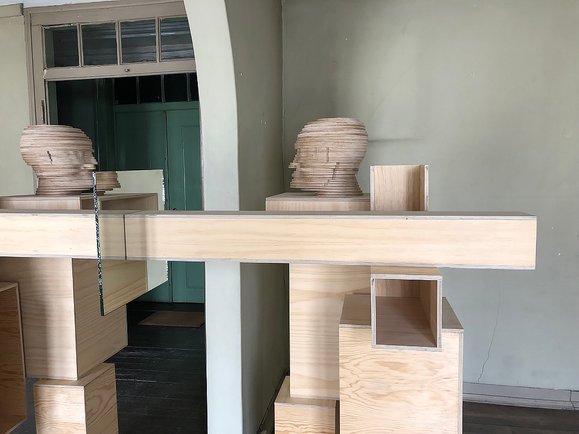
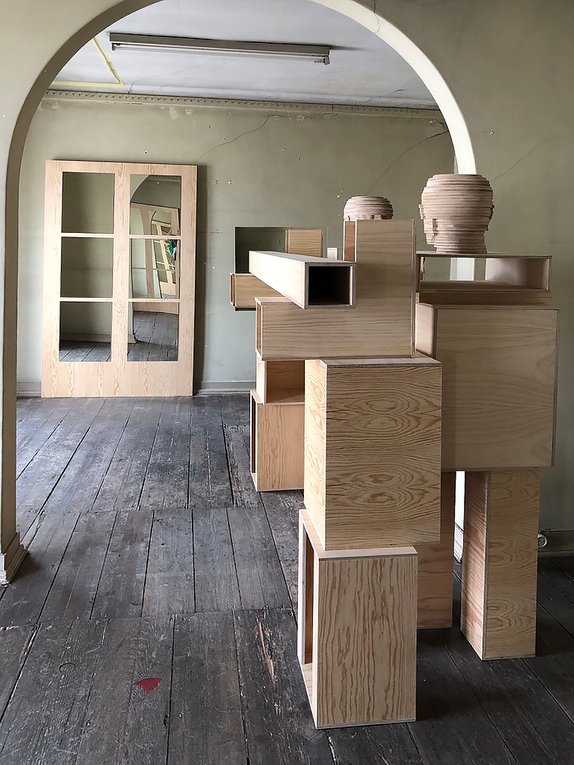
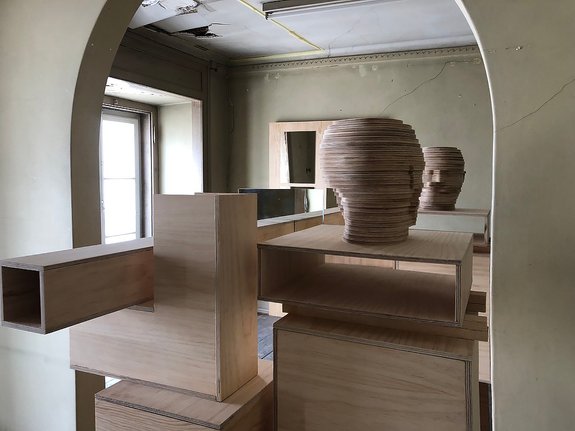
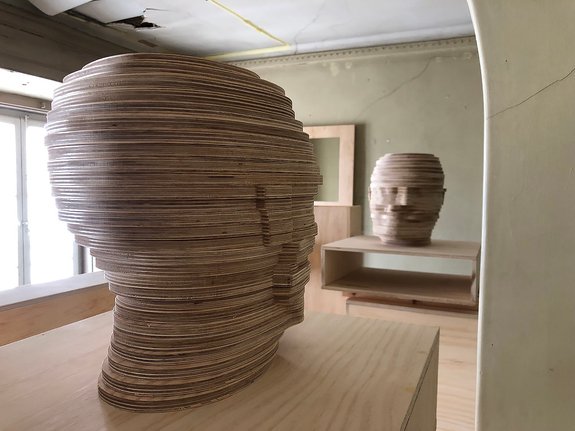
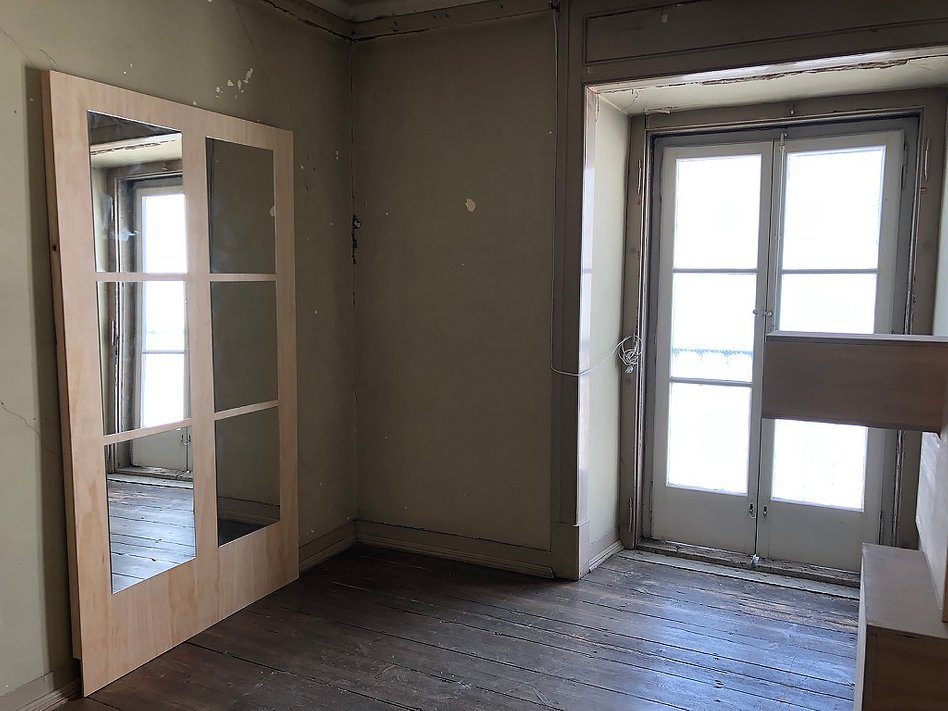
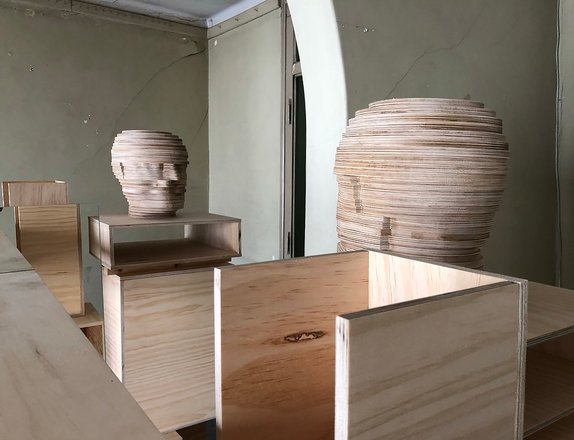


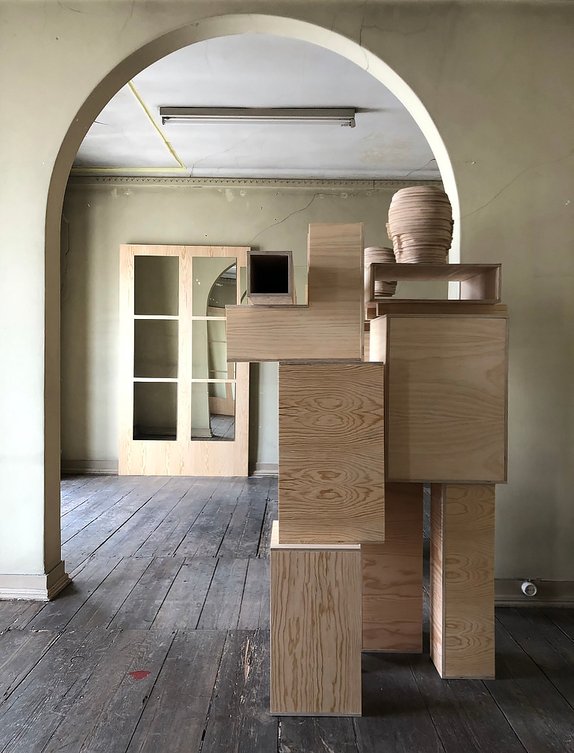
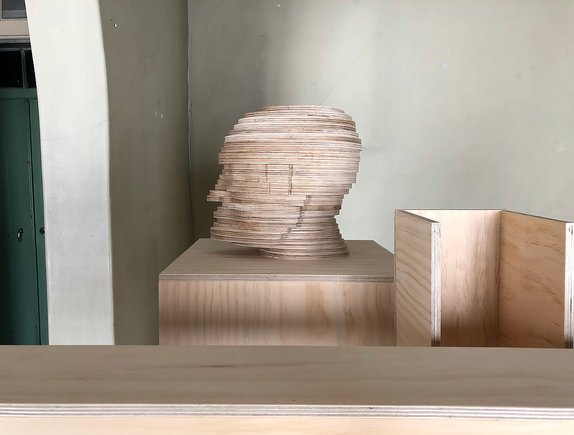

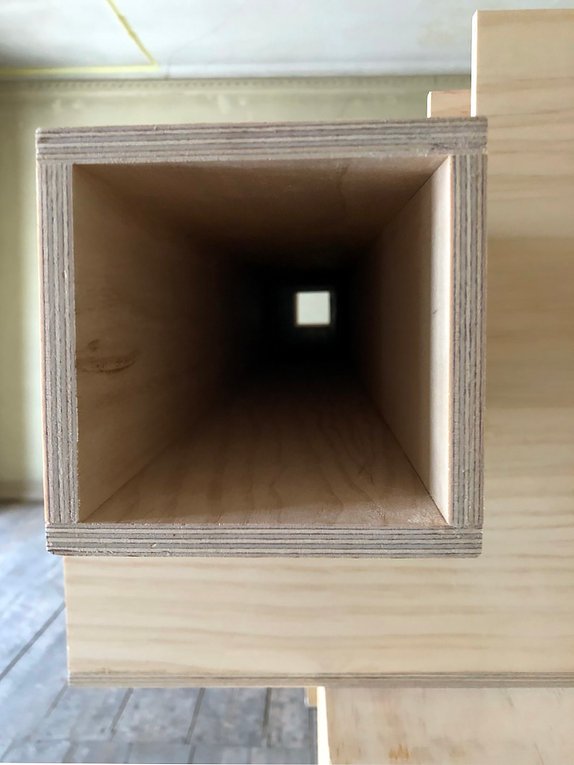
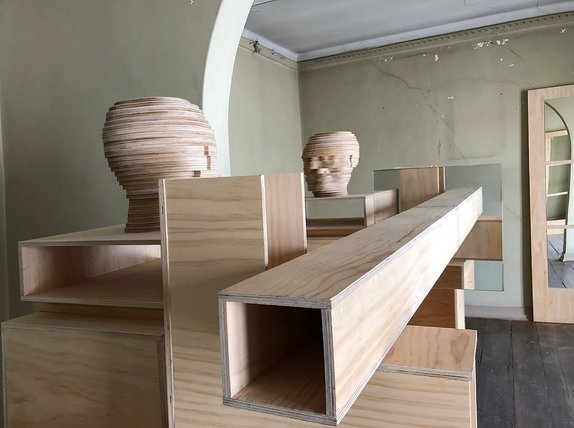
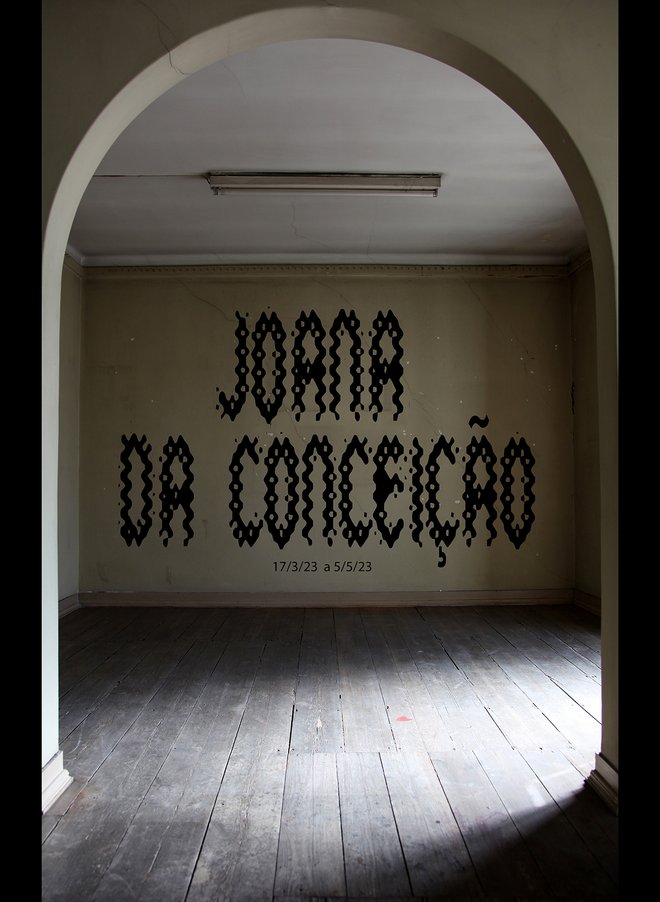
Joana da Conceição
The Mirror in Me
From the 17th of March to the 5th of May 2023
Opening: 17 March, from 15h30 to 18h30
Joana da Conceição (1981) is the artist featured in the third exhibition of Part 2 of the Casa A. Molder Gallery project.
O Espelho em Mim [The Mirror in Me] is the title of this exhibition, which was specifically conceived and created for this space.
In a painting, three figures seem to observe us. Lines and repetition unite them; we know they are figures because they have eyes and the lines appear to be hands in a very peculiar position. We are told that these faces are observing us. The colours used and the suggested movement are electrifying. When we look closely, we find out that they are connected to a fourth, imposingly hidden one. A silhouette of death, with a skull-like design that could also be a butterfly. There is a certain chaos of colours, lines and movement, there is restlessness. Dar a Ver is the title of this painting; the artist tells us: “It’s a depiction of a continuum, and it works as a frieze, in the form of a meander on repeat. The three figures see – they are given eyes to see – through the figure above them, which is dead. That figure is a depiction of some woman or other who preceded me and taught me”.
“Most of the time I meditate on the opposite wall.
It is pink, with speckles. I have looked at it so long
I think it is part of my heart. But it flickers.”
It was this section of Sylvia Plath’s Mirror that most influenced the construction of this exhibition, as well as its title, The Mirror in Me. The artist as mirror, her painting as reflection (in the visual and intellectual senses of the word). There are also recurring dreams, dreams of houses in which the discovery of a room, whose existence had been until then ignored by the artist, leads her to the mature acceptance of the fact we do not really know how old we are. Also present is the constant struggle between what we are and others’ perception of us. It is here that Joana da Conceição approaches stories of women from other times, whose transgression, nearly always driven by something the artist calls “love fever”, reveals to us a force that deserves to be highlighted. By approaching these stories, Joana da Conceição lends them weight and continuity, thus rescuing them from oblivion. In them, she also finds a mirror, which shows us sexuality and nonconformity as a reaction to the smothering and unfair environment in which their lives on this earth were spent.
This unusual painting is accompanied, on the other side of the wall, by something the artist describes as a deconstructed credenza. In Media Res is the title of this installation. On this “altar” of curved lines, evocative of pelvic bones, and timeless colours, are falsely laid a number of other paintings, which stand out from the wall due to both their placing in the space and their colour palette. We also find here small sculptural elements that allow the paintings to be installed in the space and at the same time change them: the pink lines that change one of the paintings into a strange face. Painting that wants to come out of the plane to become something more.
Some of these elements, which the artist calls “creatures”, are made with bamboo and artificial fingernails. Here, we recognise an element of death, a connection that surrounds us every day, seemingly impossible to shake off.
Joana da Conceição’s painting lives off an intense dialogue between the artist’s inspirations and a way of painting with very precise rules, which include an interaction between obedience and accepting the body and its needs, as well as a constant questioning of the act of painting. This painting is neither obvious nor facile, even though at first glance it might deceive us, perhaps due to its bright, garish palette and use of elements that seem familiar to us. There is a scent of death in these paintings, also present in Plath’s Mirror.
Mirror
I am silver and exact. I have no preconceptions.
Whatever I see I swallow immediately
Just as it is, unmisted by love or dislike.
I am not cruel, only truthful‚
The eye of a little god, four-cornered.
Most of the time I meditate on the opposite wall.
It is pink, with speckles. I have looked at it so long
I think it is part of my heart. But it flickers.
Faces and darkness separate us over and over.
Now I am a lake. A woman bends over me,
Searching my reaches for what she really is.
Then she turns to those liars, the candles or the moon.
I see her back, and reflect it faithfully.
She rewards me with tears and an agitation of hands.
I am important to her. She comes and goes.
Each morning it is her face that replaces the darkness.
In me she has drowned a young girl, and in me an old woman
Rises toward her day after day, like a terrible fish.
Sylvia Plath
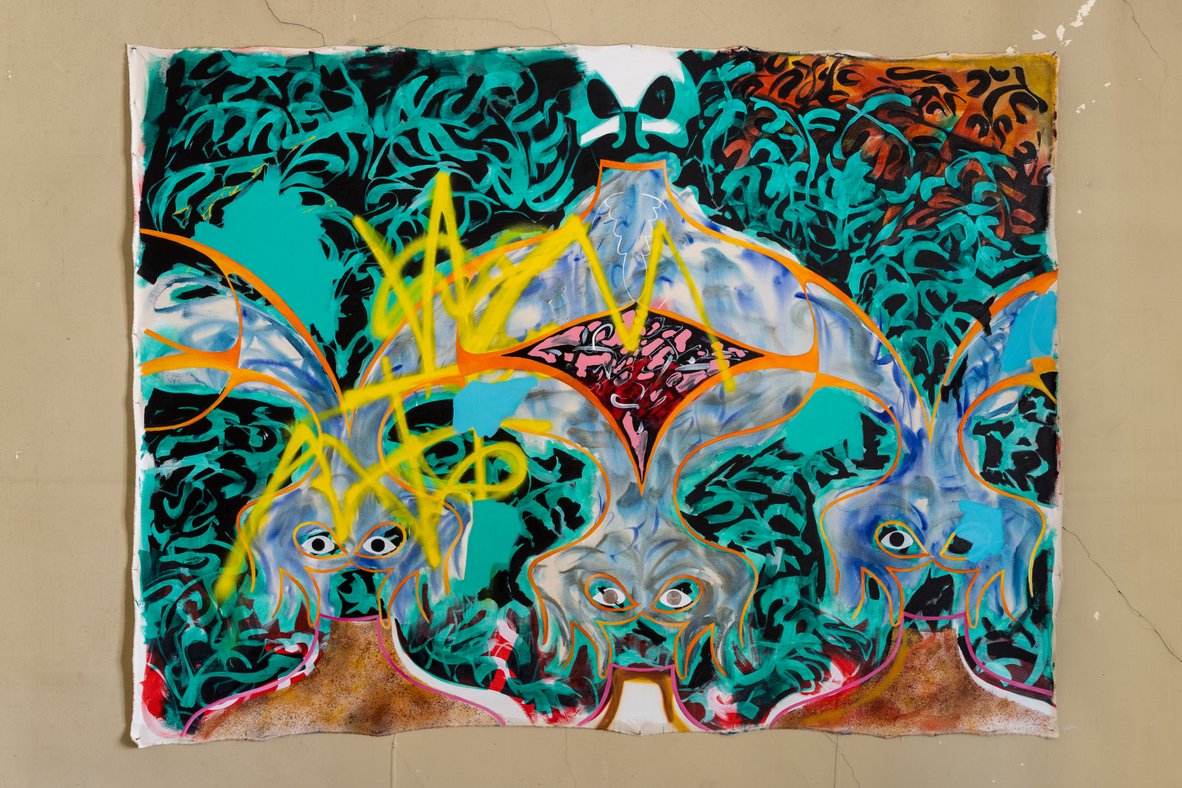
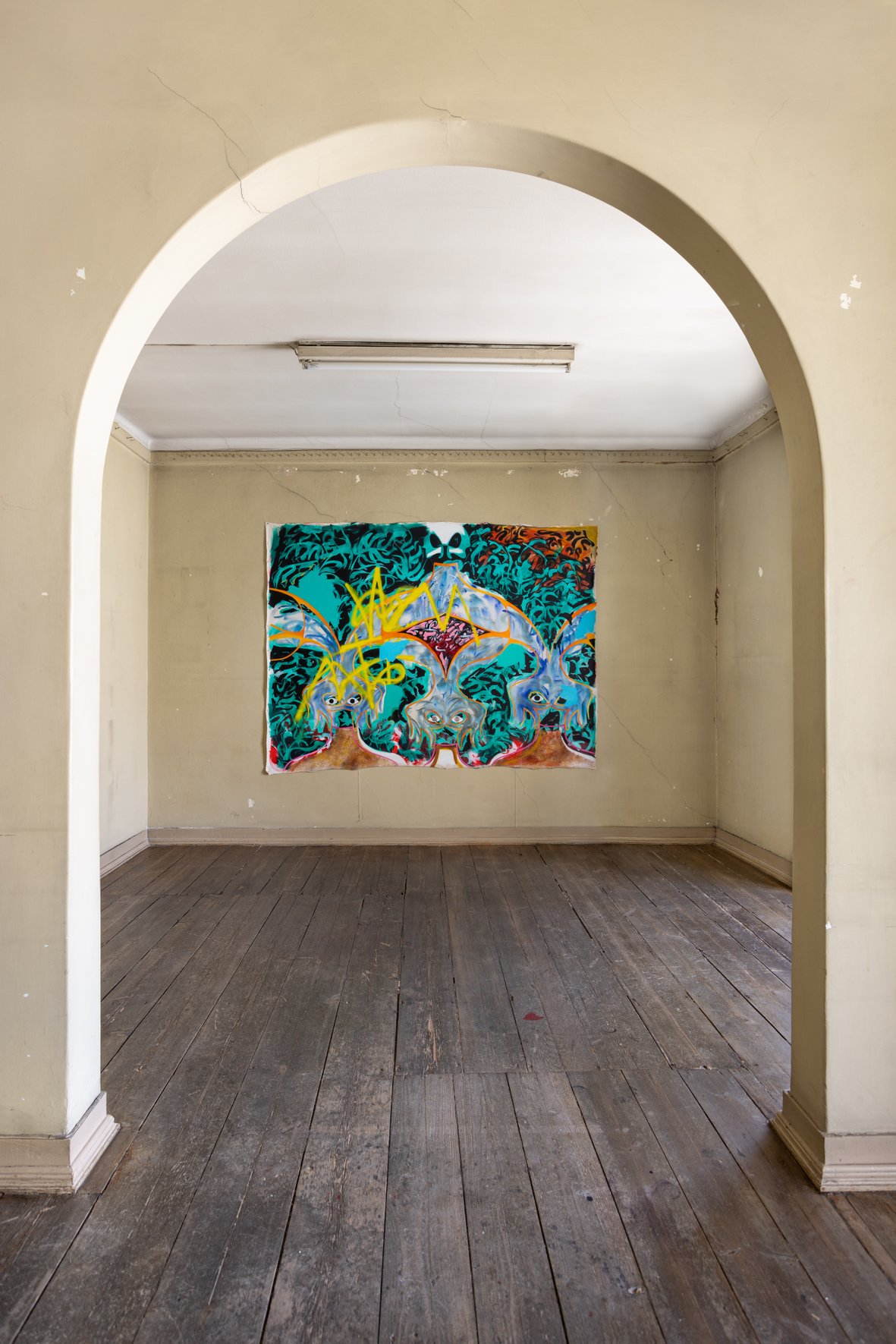
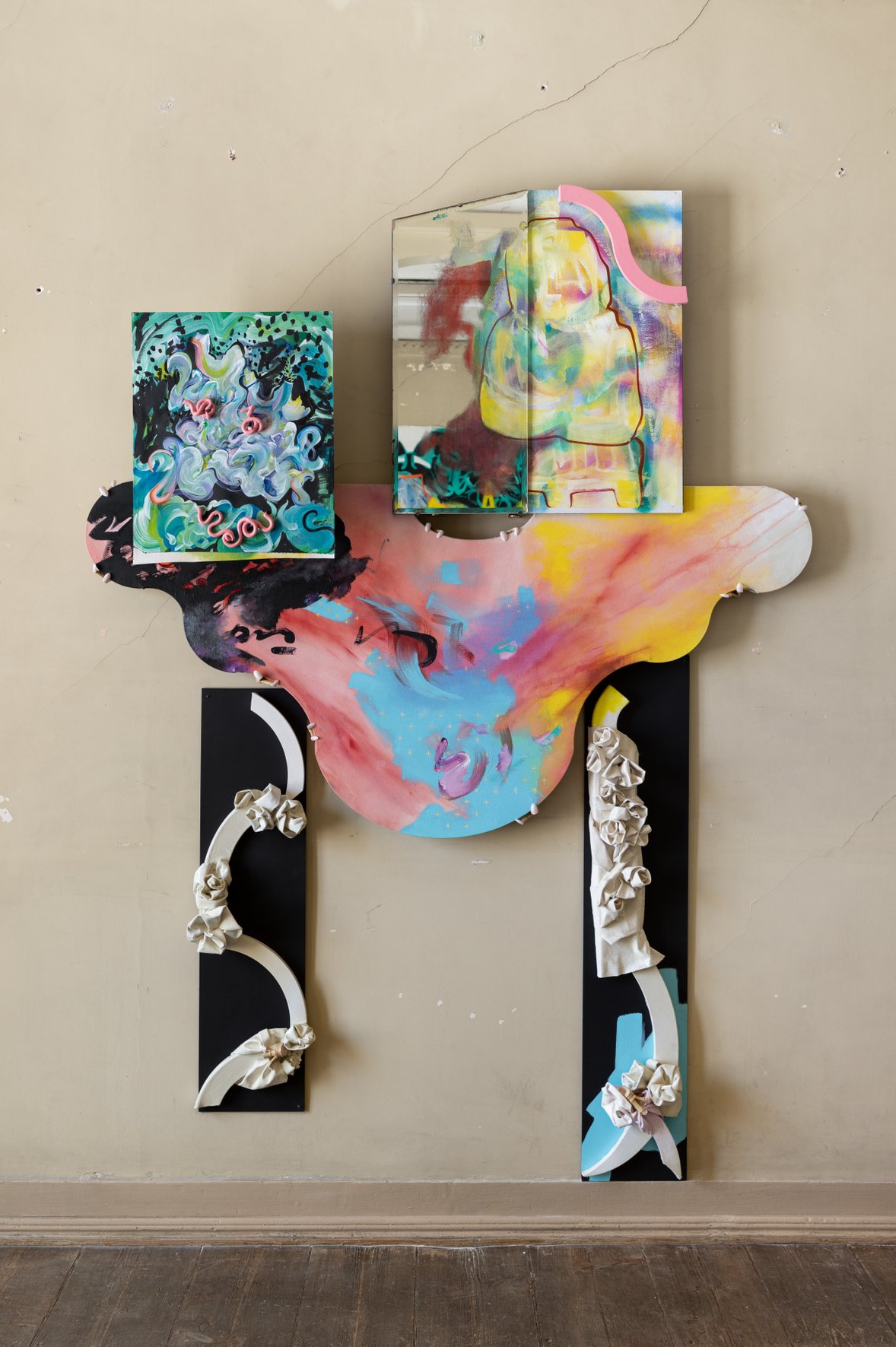
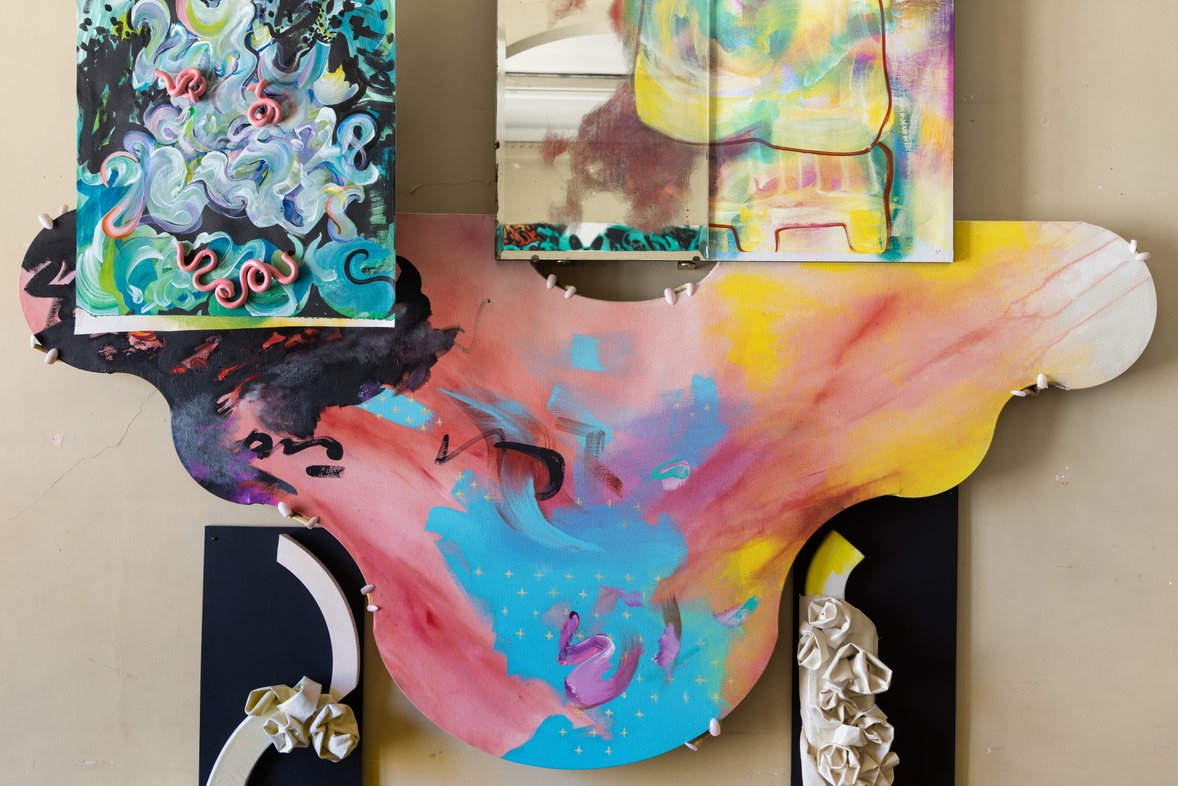
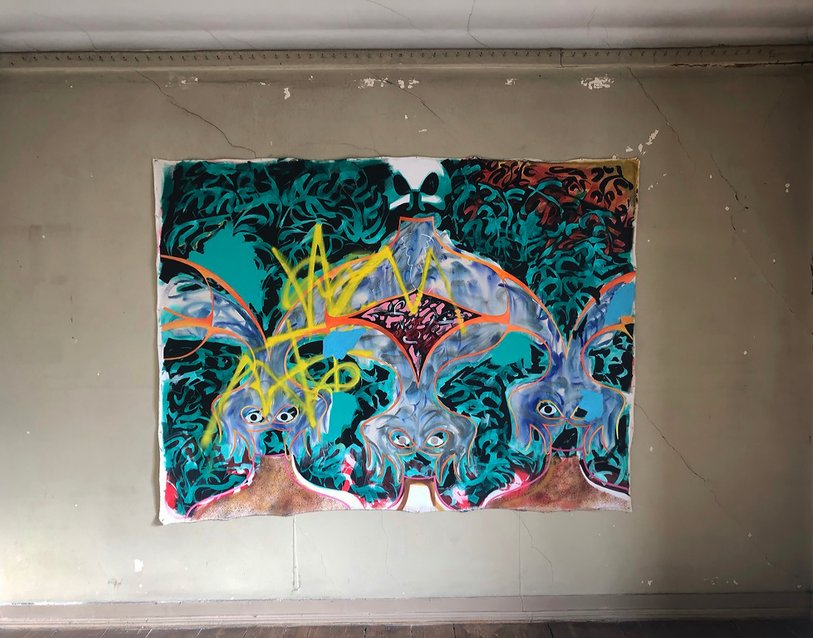
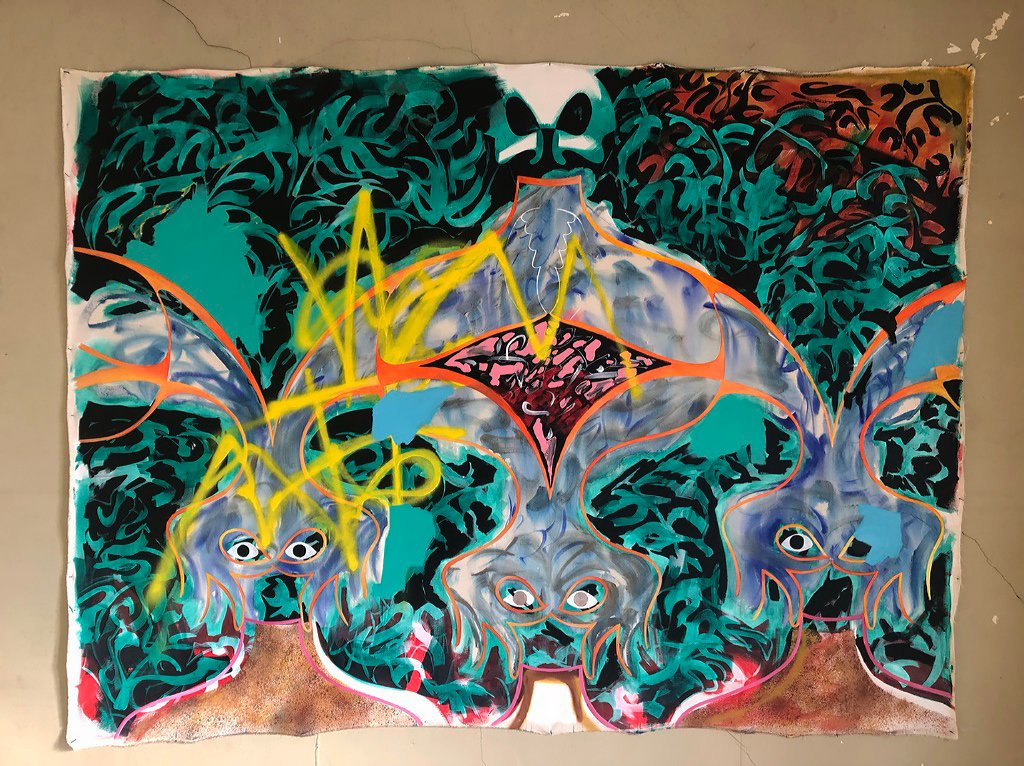
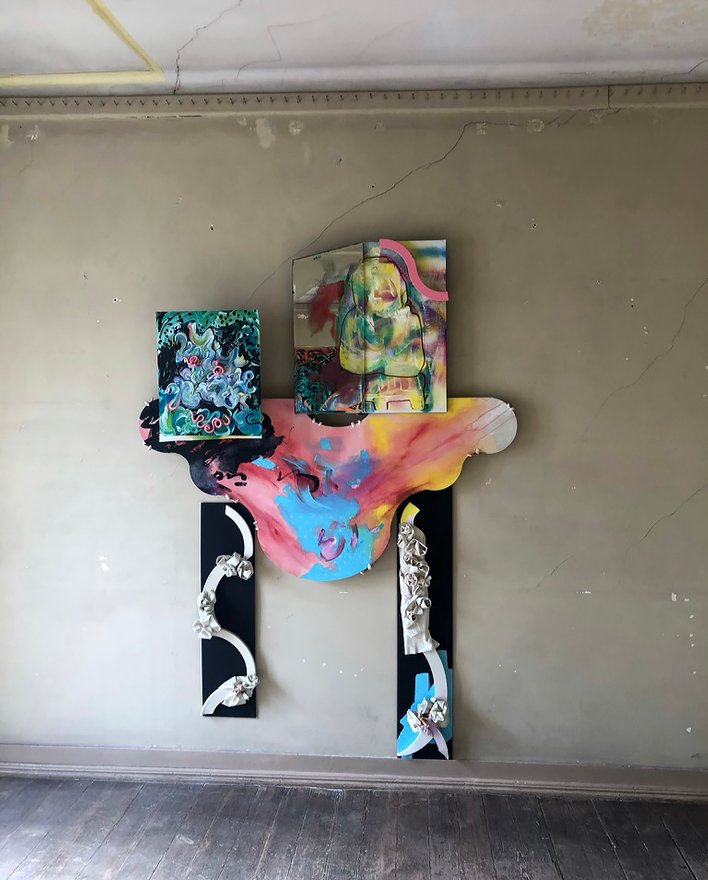
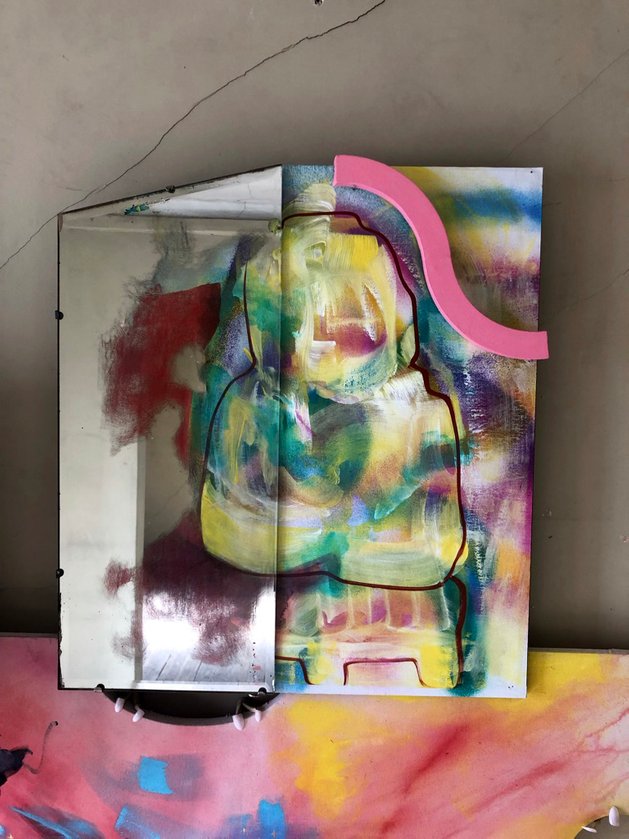
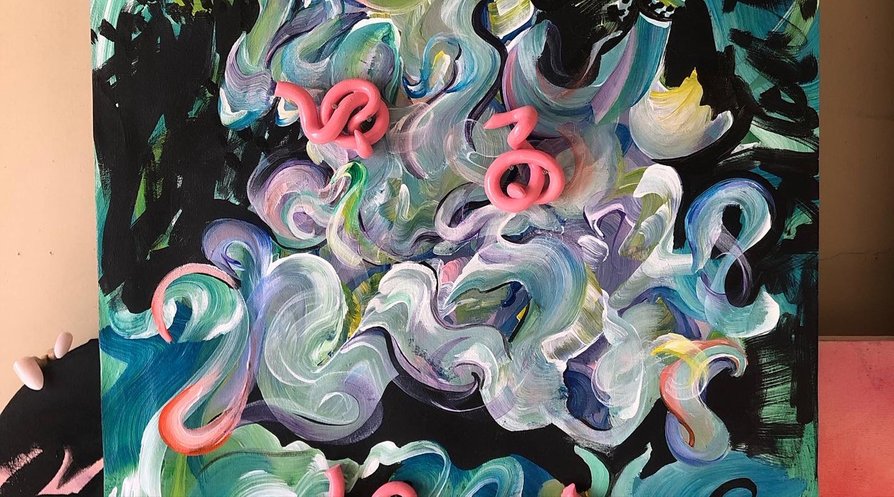
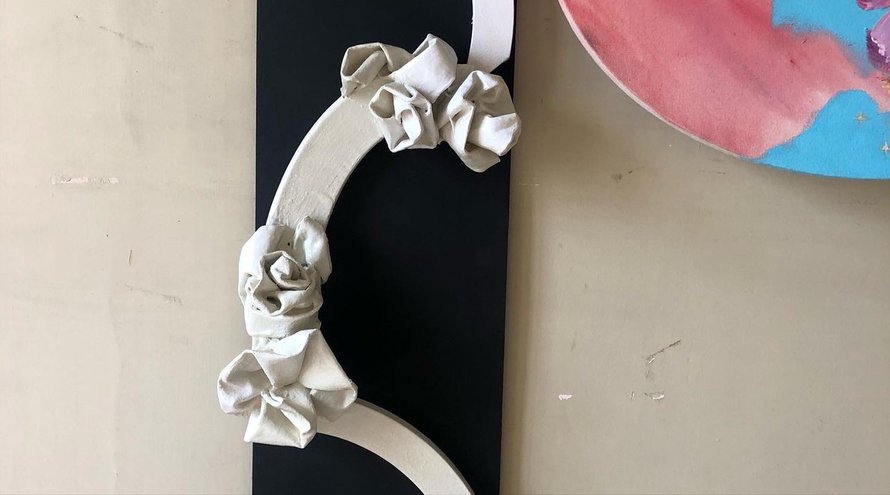
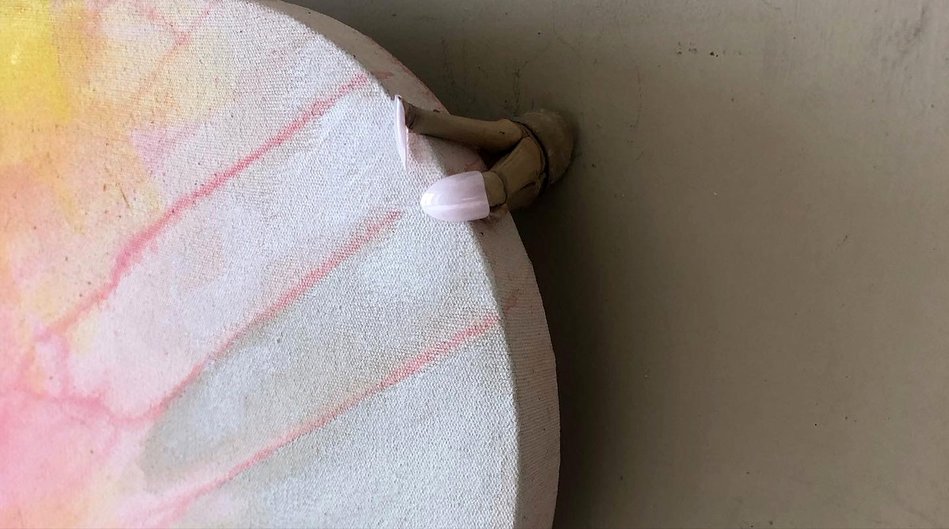
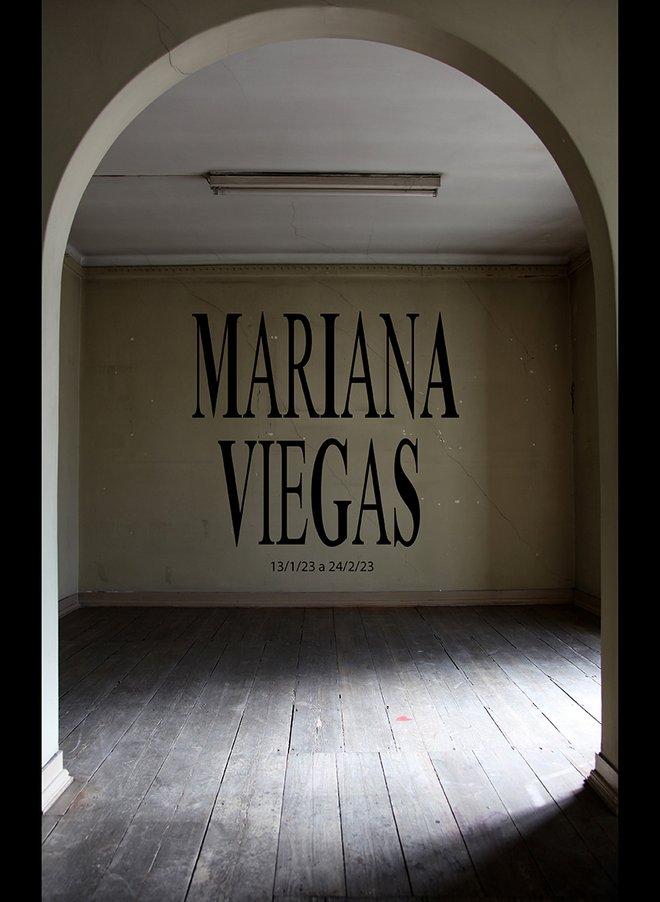
Mariana Viegas
Entrance
From the 13th of January to the 24th of February 2023
Opening: 13 January, from 15h30 to 18h30
Mariana Viegas (1969) is the artist featured in the second exhibition of Part 2 of the Casa A. Molder Gallery project. Entrada [Entrance] is the title of this exhibition, which was specifically conceived and created for this space.
Mariana Viegas owns a sizeable archive of photographs that were taken, conceived and created in various moments and years. Out of this huge body of work come the two sets of photographs that compose this exhibition.
Entrance symbolises a passage from one world to another. The artist tells us: “To enter is the necessary condition to start a path, guided by the curiousness of the experience itself, where a body gives itself to a space.”
Entrance is also an initiation. And, in this case, a legacy. The photographs of archaeological diggings, personal and unrestricted, taken by the artist’s father, have given her a love of images and photography, but also of paths, mystery, excavated earth and the secret of scale.
It cannot be said that these images, clearly divided into two groups, are meant to be archaeological objects or represent some sort of archive; however, they do convey a desire to categorise certain features of the photographed subject. In them, we find a love for the path, persistence, fragility and the mystery that is life: where it leads us, where it may lead us and also the strange serenity its abrupt end can generate. I speak of the images: the photograph of a snail and its trail on what seems to be an almost golden path, of a hand that holds a Marian thistle, also known as a milk thistle, a very prolific and distinctive plant. I speak of the dark hole in the vegetation, something that might be the beginning or end of a path, as well as simply a possibility and a mystery. All these pictures are in colour: the sole black and white photo is the one of the suicide victim, already covered with a piece of cloth. A powerful and strangely serene image, as though the warmth of the afternoon and the sun that reveals to us the outlines of countless windows were telling us: life goes on. There is also a little trap: among these photographs by Mariana Viegas we find a single one with a different provenance: taken by her father, in it a pair of hands (her mother’s) hold a glass object.
From this powerfully symbolic first set of photos (works from various years, between 1990 and 2022), we move to the next one, featuring pictures taken by Mariana Viegas during the early 1990s. Real, concrete, seemingly everyday objects are presented to us, against the same background of imitation marble. Among them are a letter-opener, a clay paperweight, a tobacco box, a breastpin bearing the words “Não me beijes” [Don’t kiss me] and a mercurochrome-stained photograph.
Two different, but not opposite worlds. On one, we find presences, connections and symbols that, though thoroughly earthbound, lead us, by means of light, colour and shadow, to something we might define as ethereal. On the other, a desire to categorise materials with precision, in such a way that it might lead us to imagine the existence of connections or a narrative, but such is not the case, and that is why this set is so surprising, as if the artist had found a source of wonder in this continuation, this cadence of showing, this routine.
Let us enter, then.
The exhibition is open to the public on weekdays, during the shop’s afternoon schedule, i.e. from 3h30pm to 6h30pm; visits on weekends and holidays can be made by previous appointment. Access to the Gallery is through the shop.
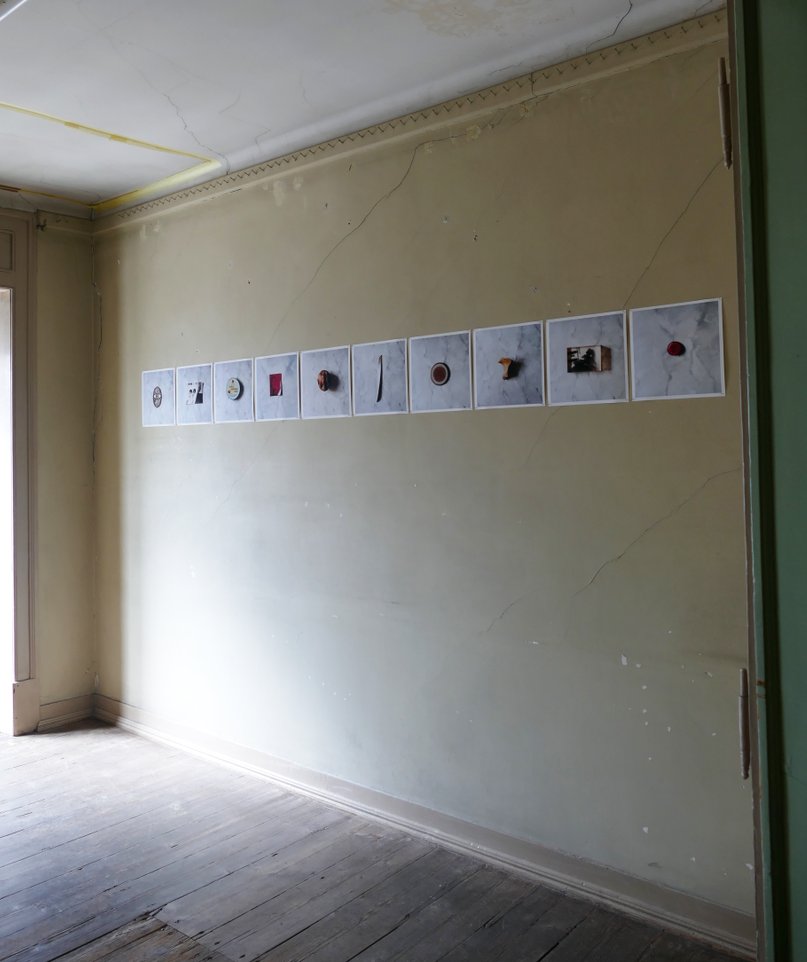
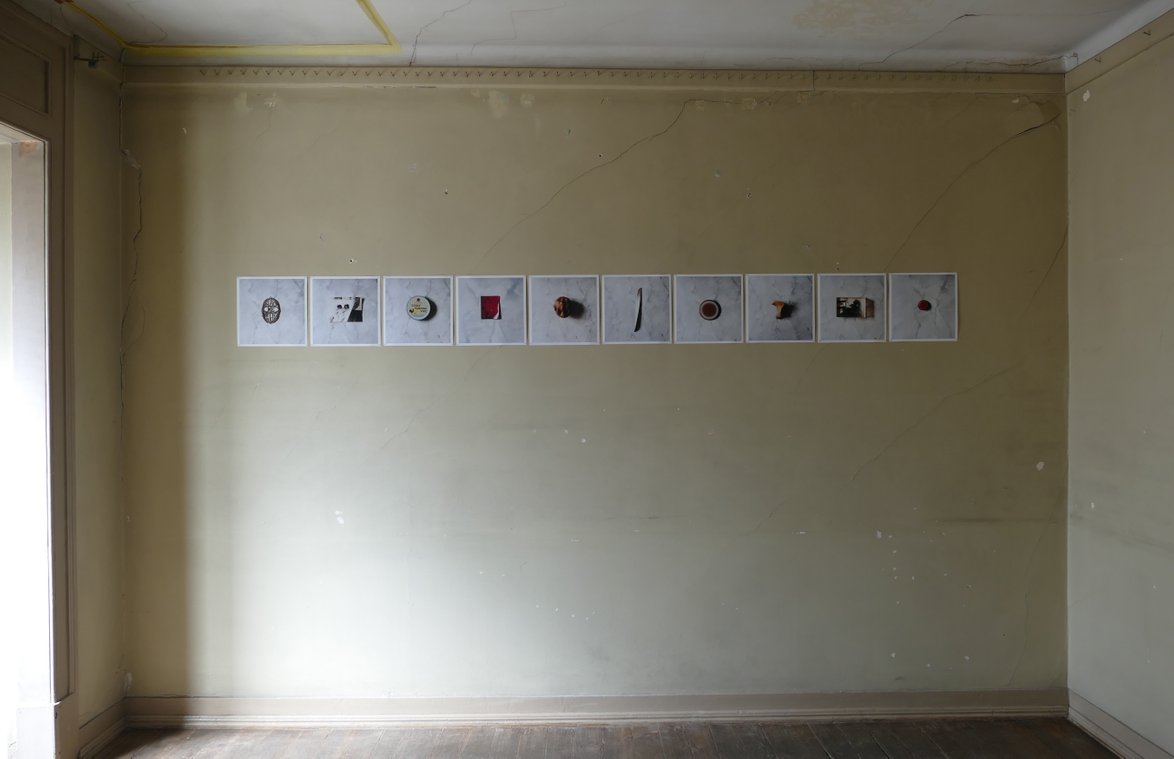
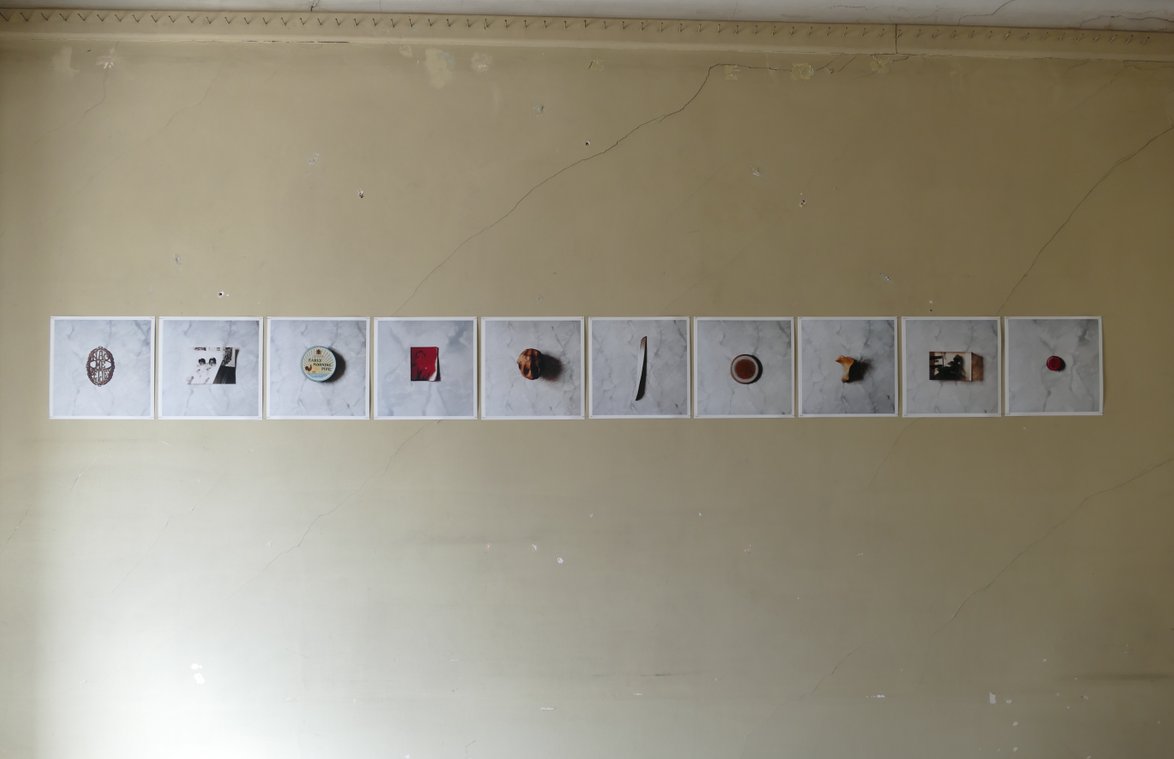

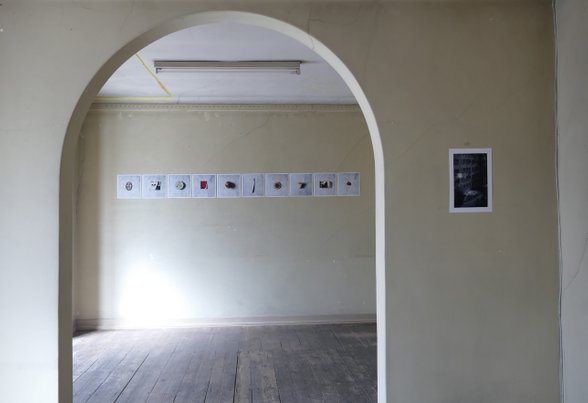
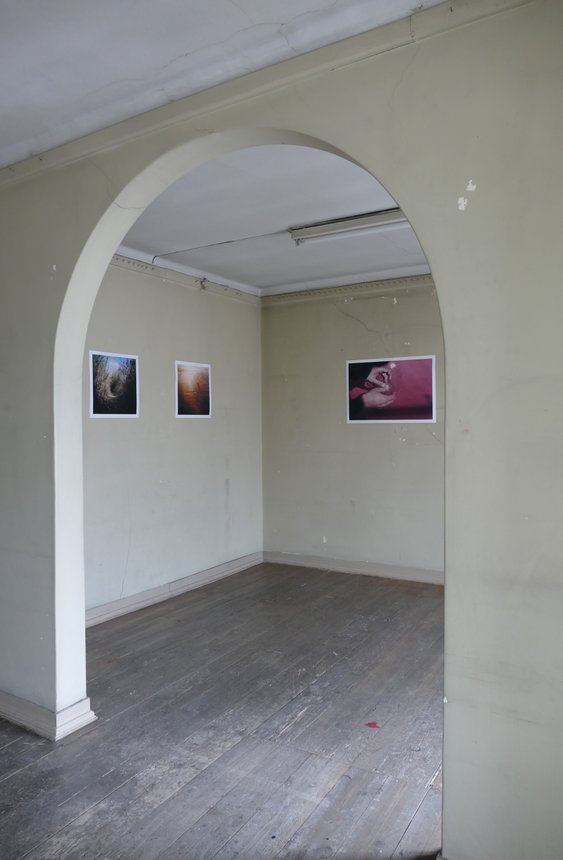
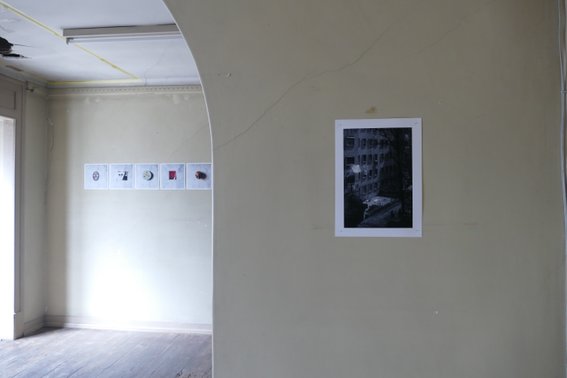
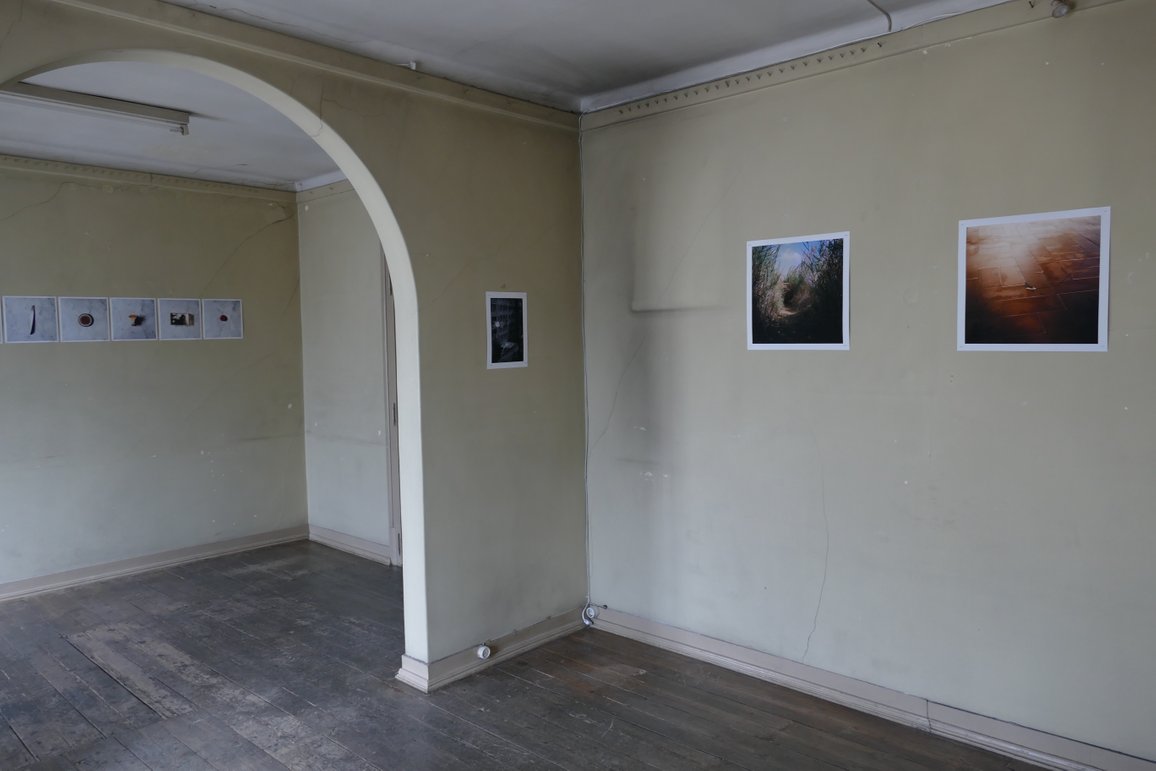
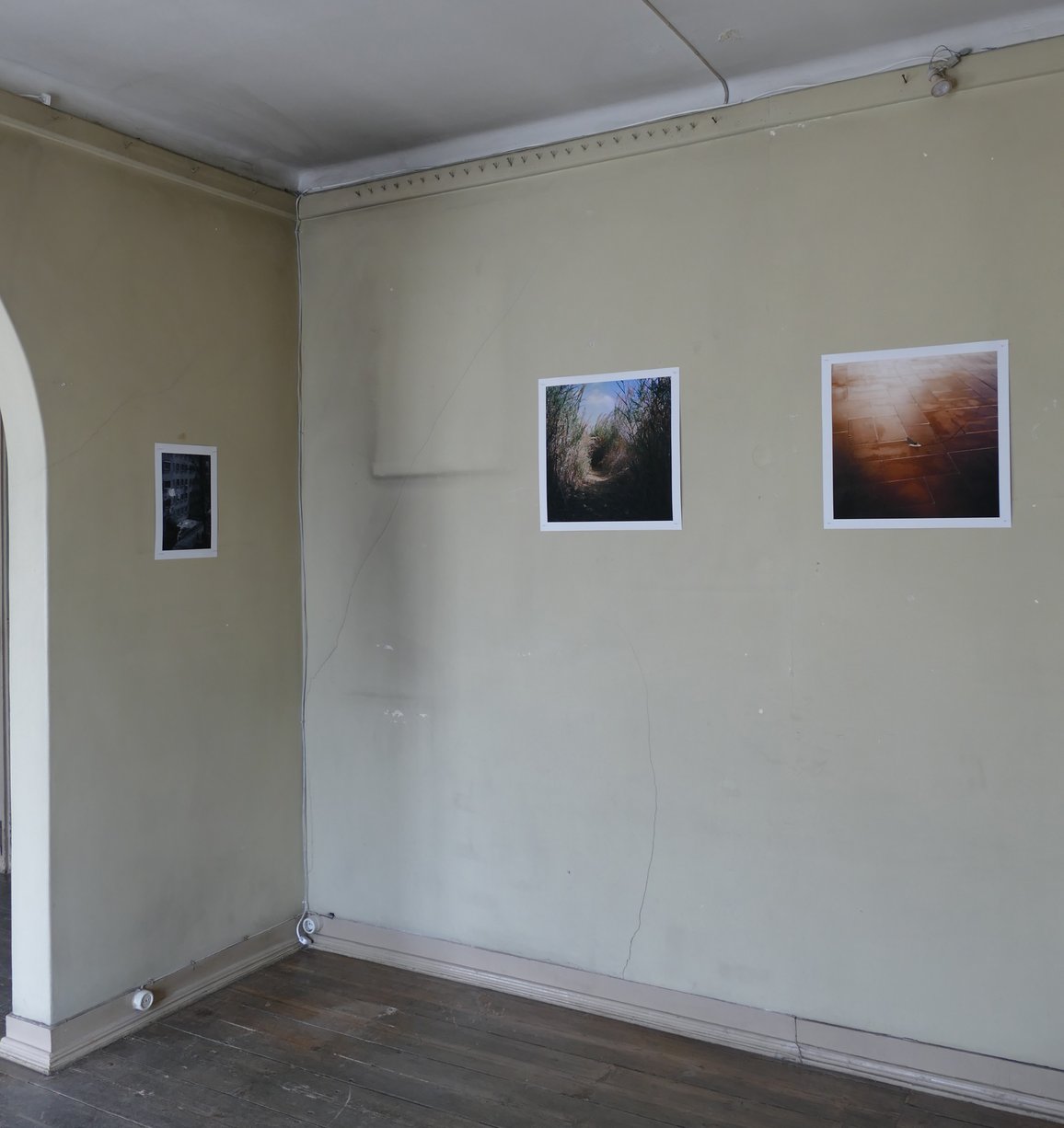
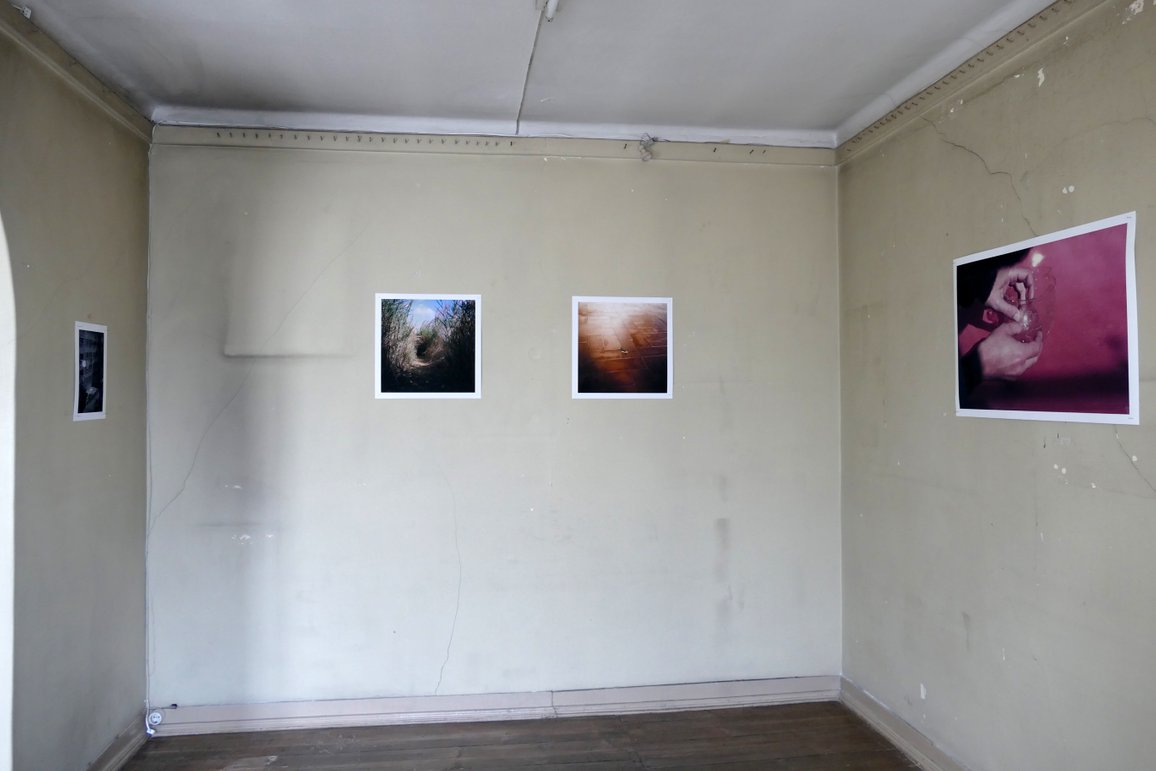
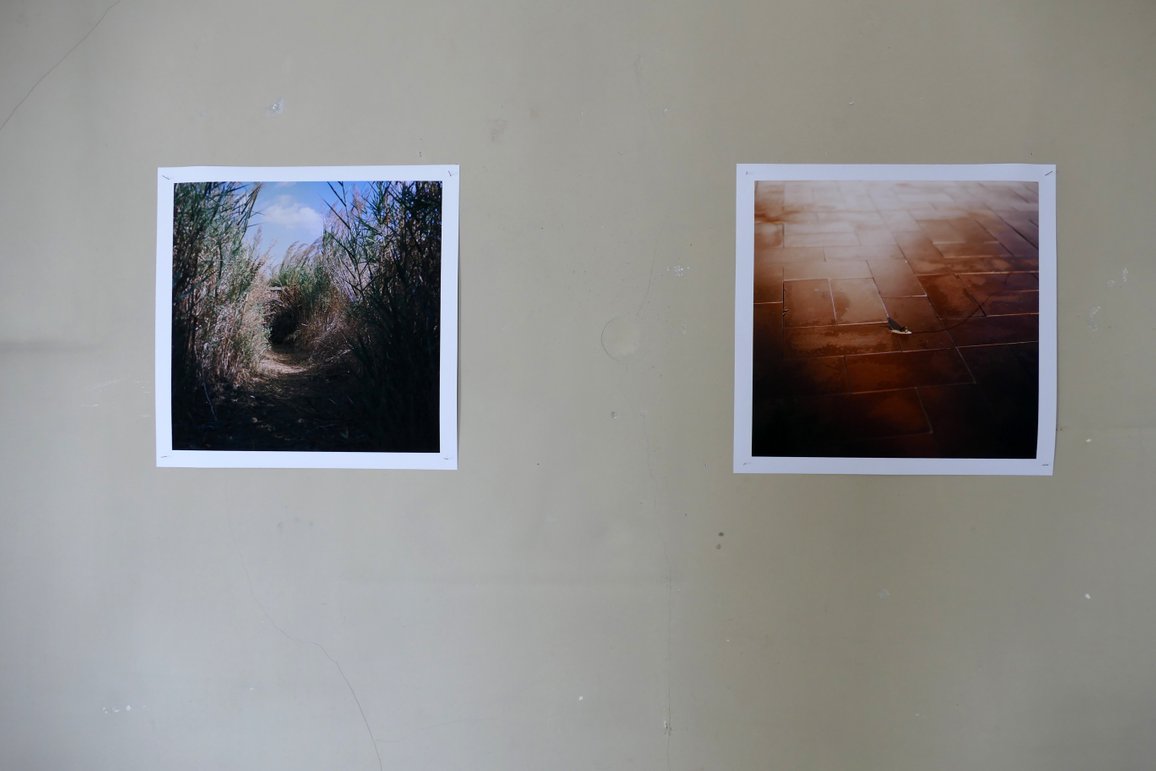
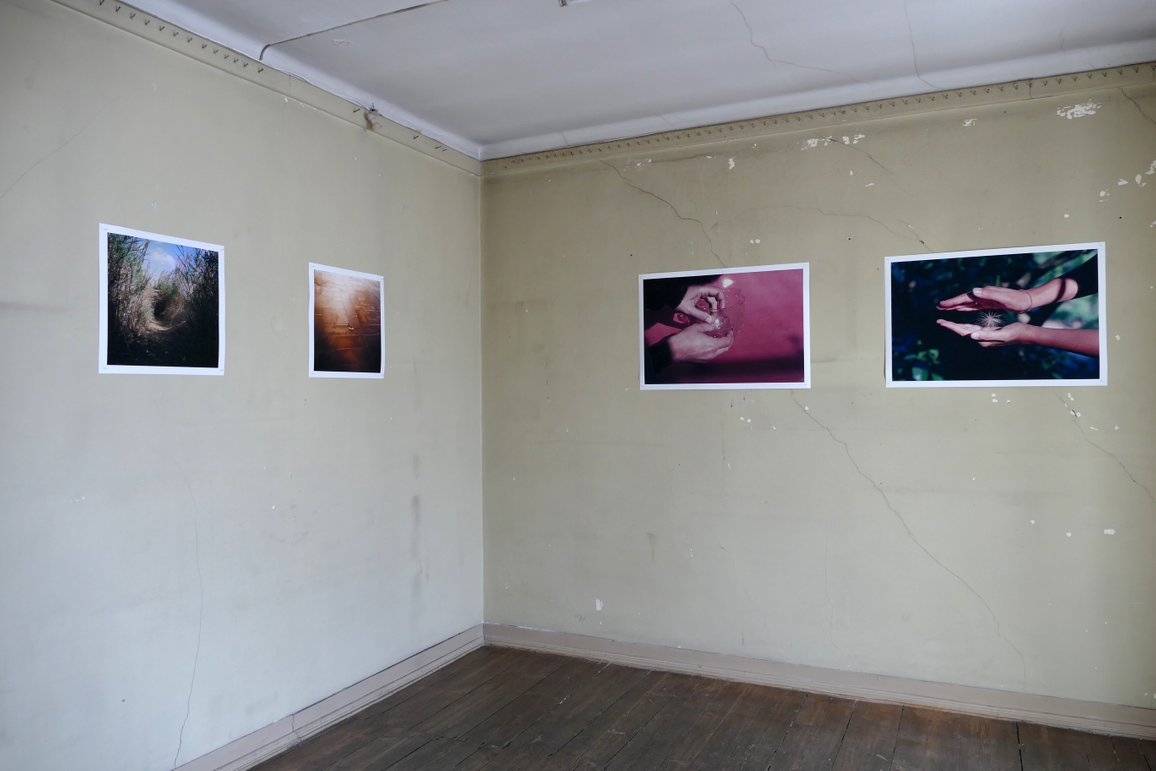
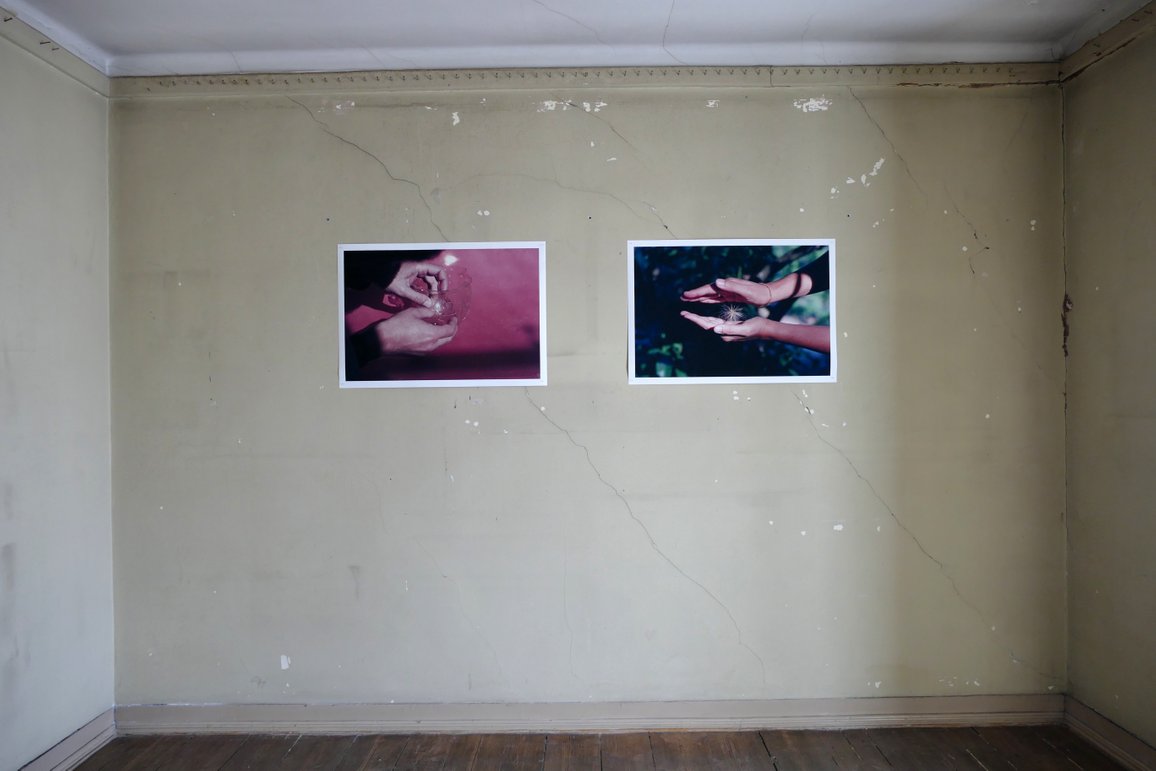
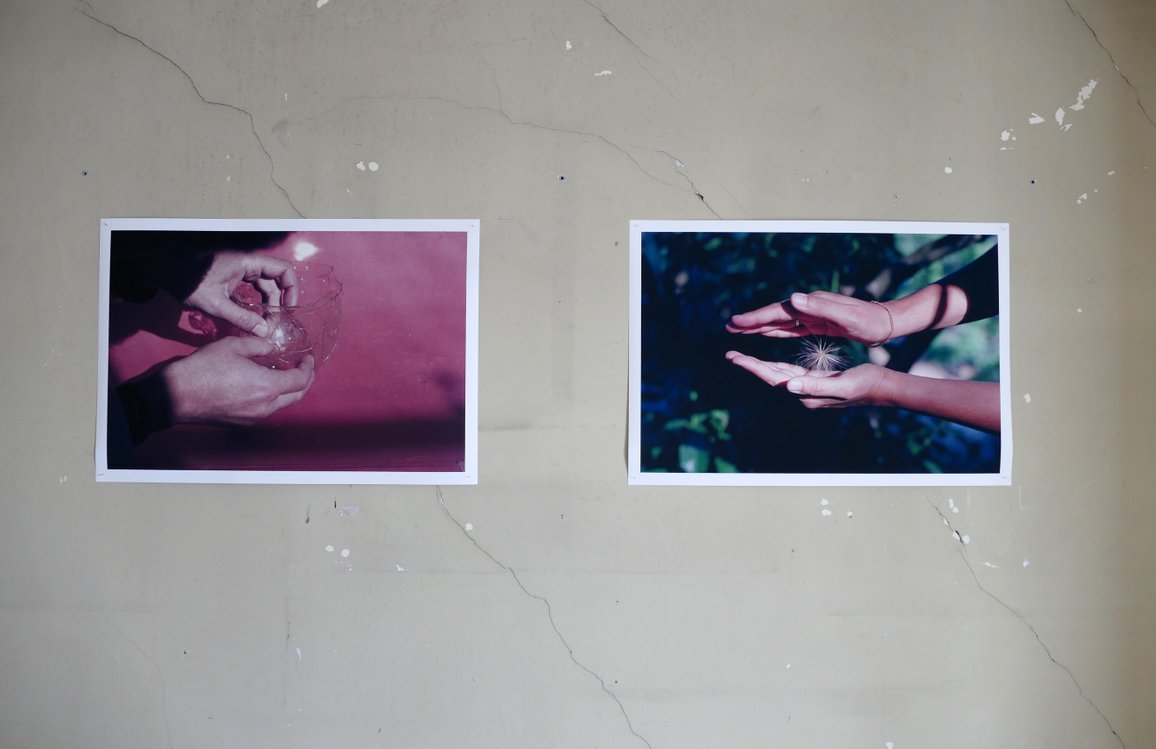
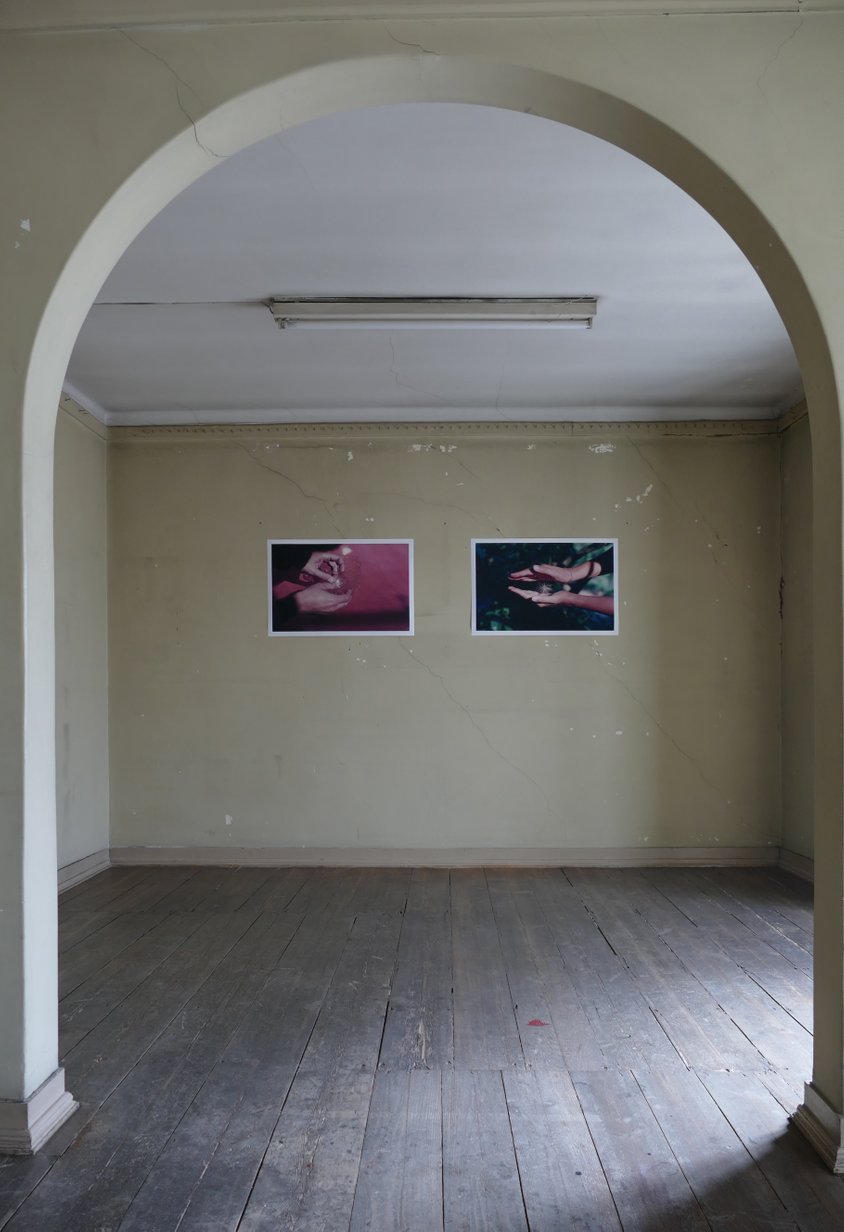
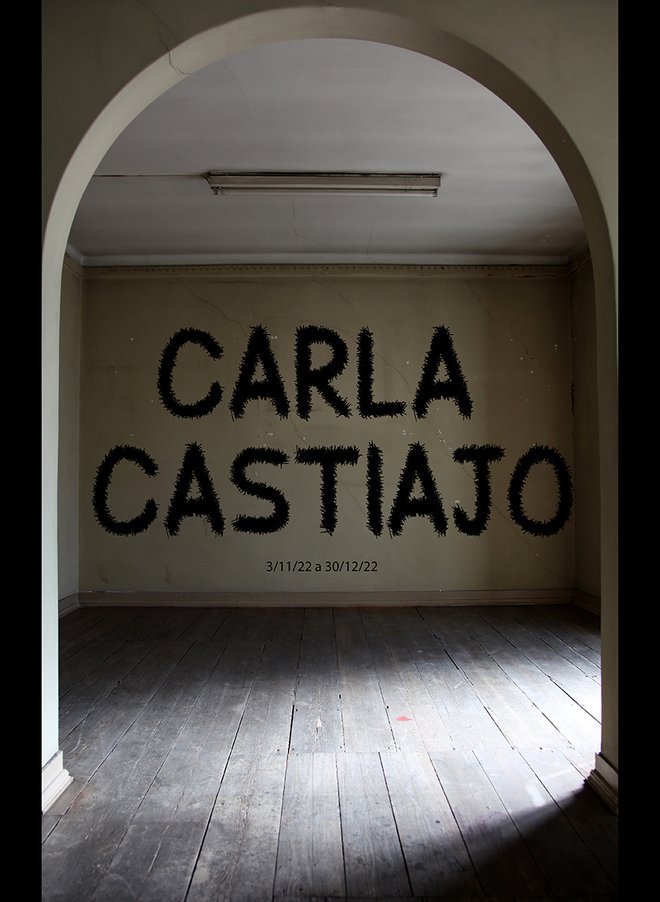
Carla Castiajo
Compulsive Collection
From the 3rd of November to the
30th of December 2022
Opening: 3 November, from 15h30 to 18h30
Carla Castiajo (1974) is the artist featured in the first exhibition of Part 2 of the Casa A. Molder Gallery project.
Colecção Compulsiva [Compulsive Collection] is the title of the exhibition, which was specially conceived and created for this space. This artist’s work emerges from the encounter between jewellery and sculpture, between what is created to be worn by the body and what is created using the body as a model, between what comes from the body and what is foreign to it, between lightness, weight and resistance. Objects that are extremely delicate but deeply dubious, being simultaneously attractive and repulsive, are a constant feature in her work.
Carla Catiajo uses human hair (one of her favourite materials) and also leather or animal skin to create sculptures, strange and fascinating objects that make us wonder whether they are living bodies, suffused with sexuality, or just remains of what once was living, causing shock and leading us to question our own presence.
A curtain of human hair divides the gallery space. In the corner of one of the rooms a cocoon-like object rests. It is a mass of human hair, the artist’s own hair, which she has collected and kept over time, a sculpture that has been developing since 2012. With her own hands, she creates tangles similar to small cocoons, living and growing matter: Obscene Corner is the name of that sculpture. If we manage to pass through the hair curtain, to which the artist has given the title Sensual [Sensuous], we will find Voluptuous: a basin or bidet holds something evocative of legs, feet and sexual organs; an object that is as much scatological as it is delicate, feminine and intimate (and equally reminiscent of Tom Wesselmann and Louise Bourgeois).
Carla Castiajo’s work demands from the viewer a similar level of courage and sensitivity. Concerning her preferred material, human hair, the artist has the following to tell us: “I collect strands of hair, either mine, as they fall off over time, or other people’s, who have either given or sold them to me… Strands of hair prefigure the absence of a body, but these hairs can also be used to preserve the memory of an individual… A piece made with hair can cause a number of different reactions – it can draw us closer or away from it, attract or repel. Human hair is one of our most delicate components; yet, it can outlive us. It is an essential element of the human body, an immortal element that is a part of our mortal bodies.”
The exhibition is open to the public on weekdays, during the shop’s afternoon schedule, i.e. from 3h30pm to 6h30pm; visits on weekends and holidays can be made by previous appointment. Access to the Gallery is through the shop.
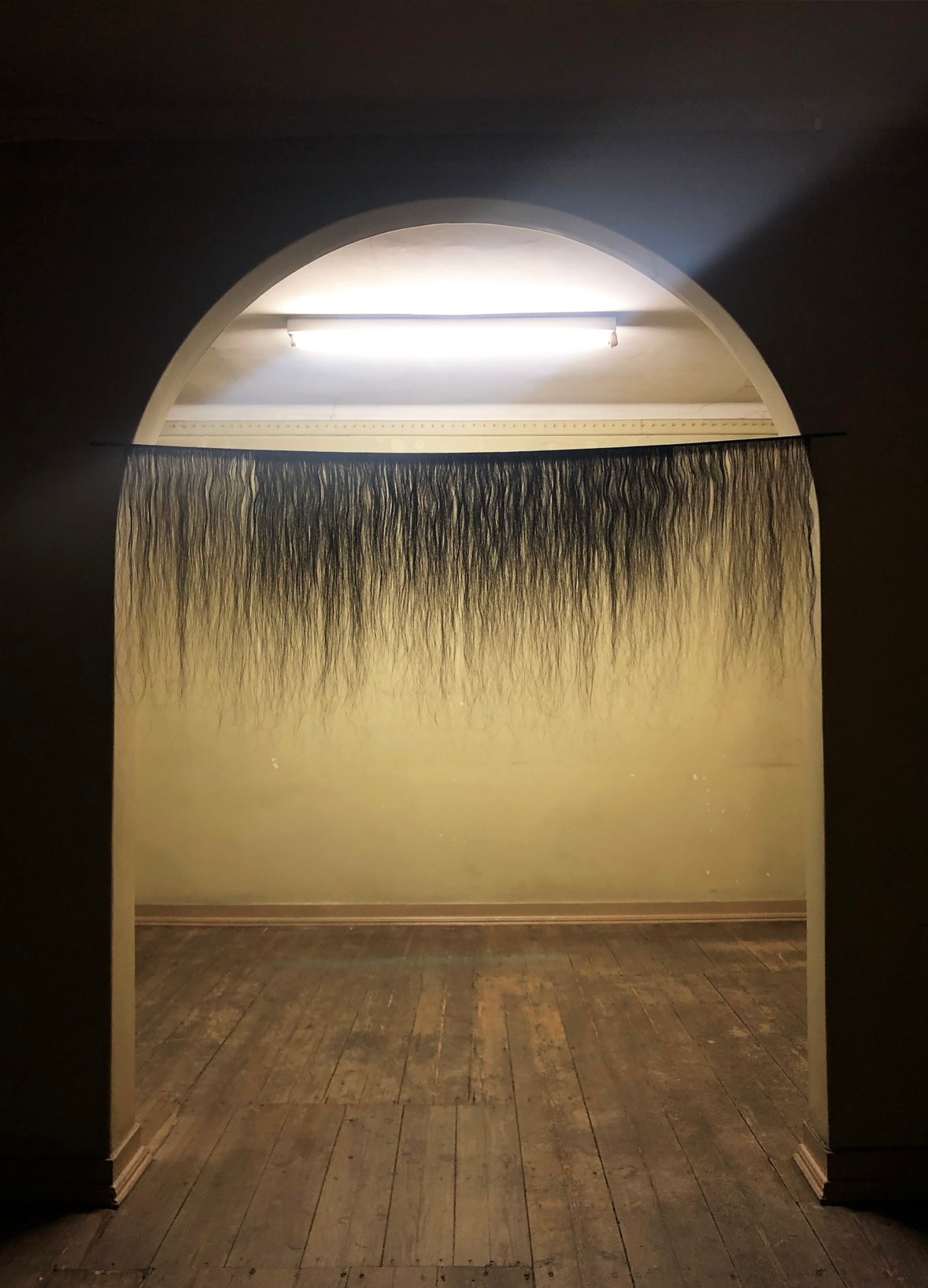
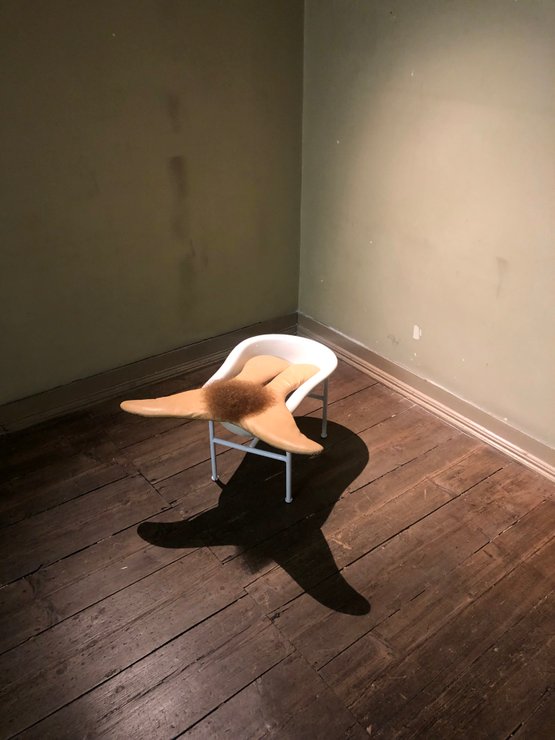
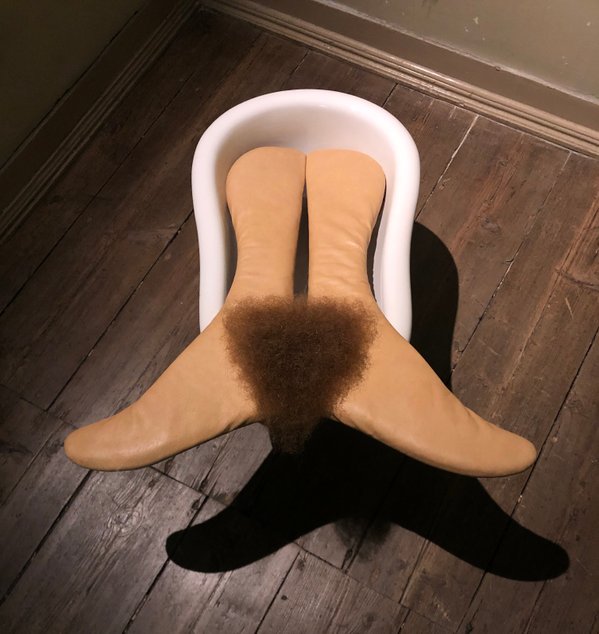

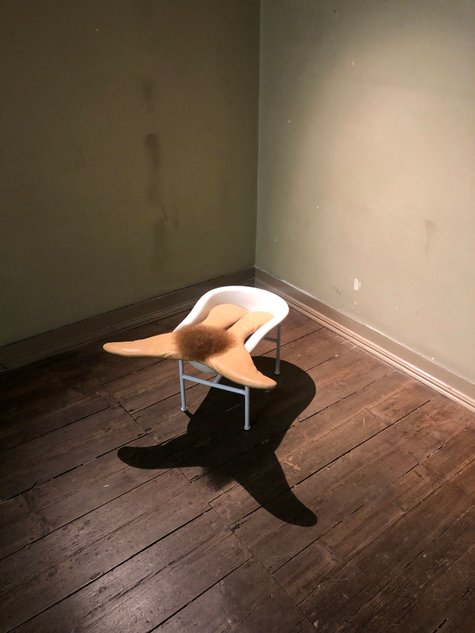
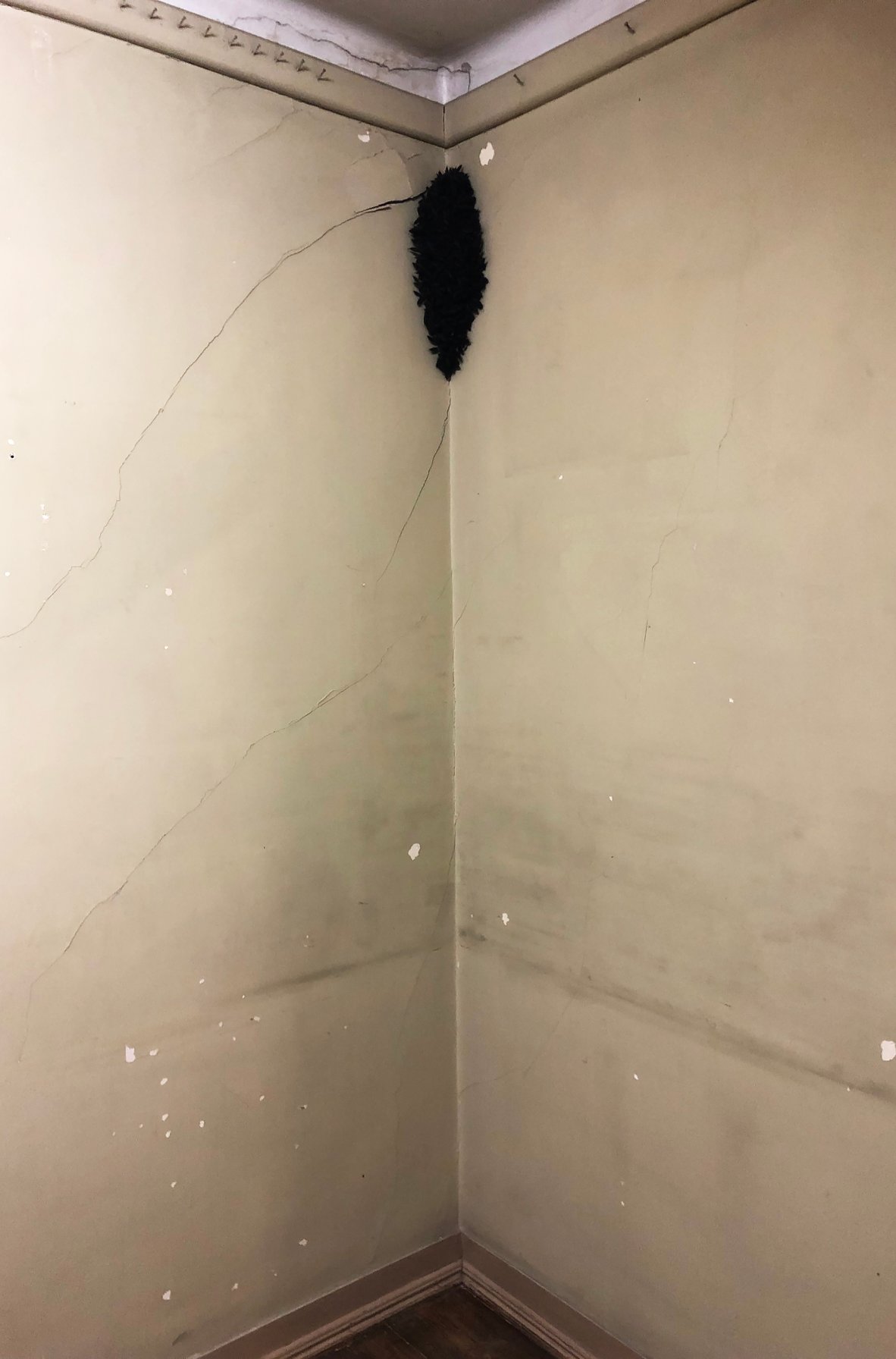
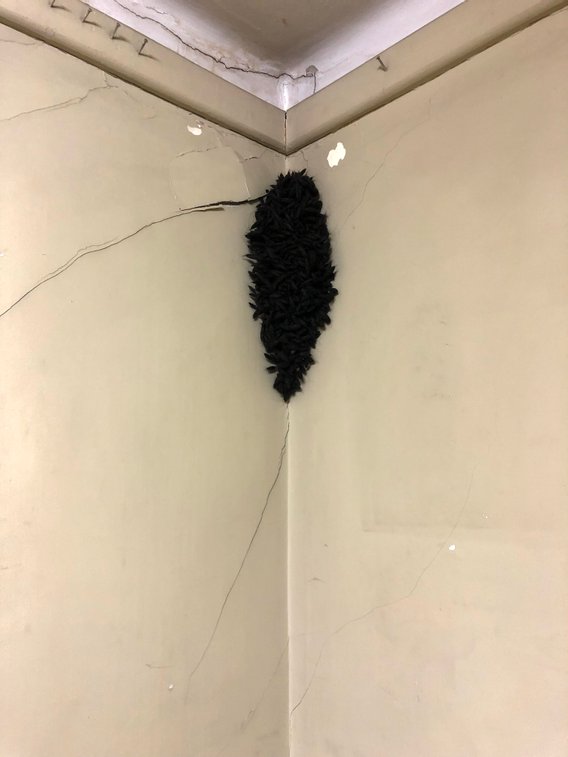
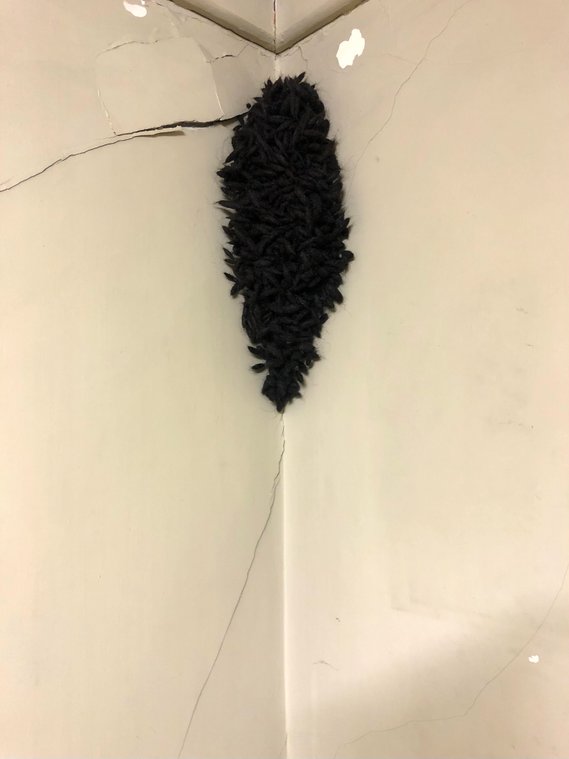
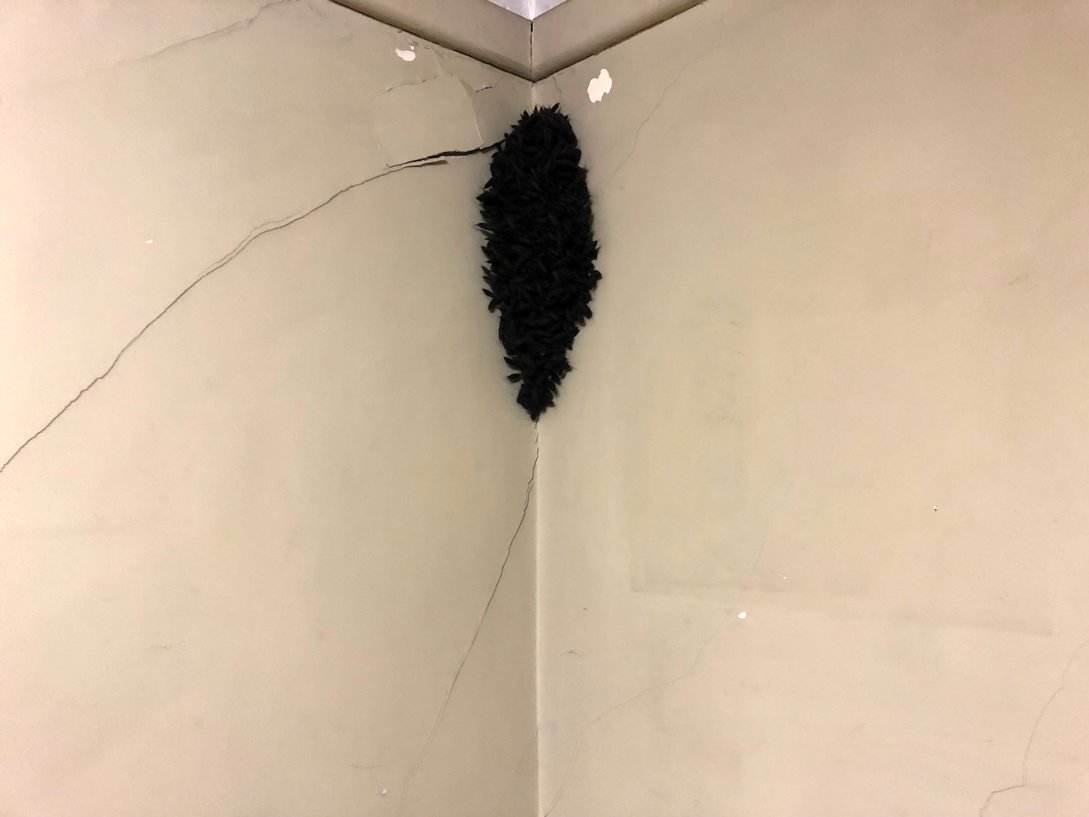
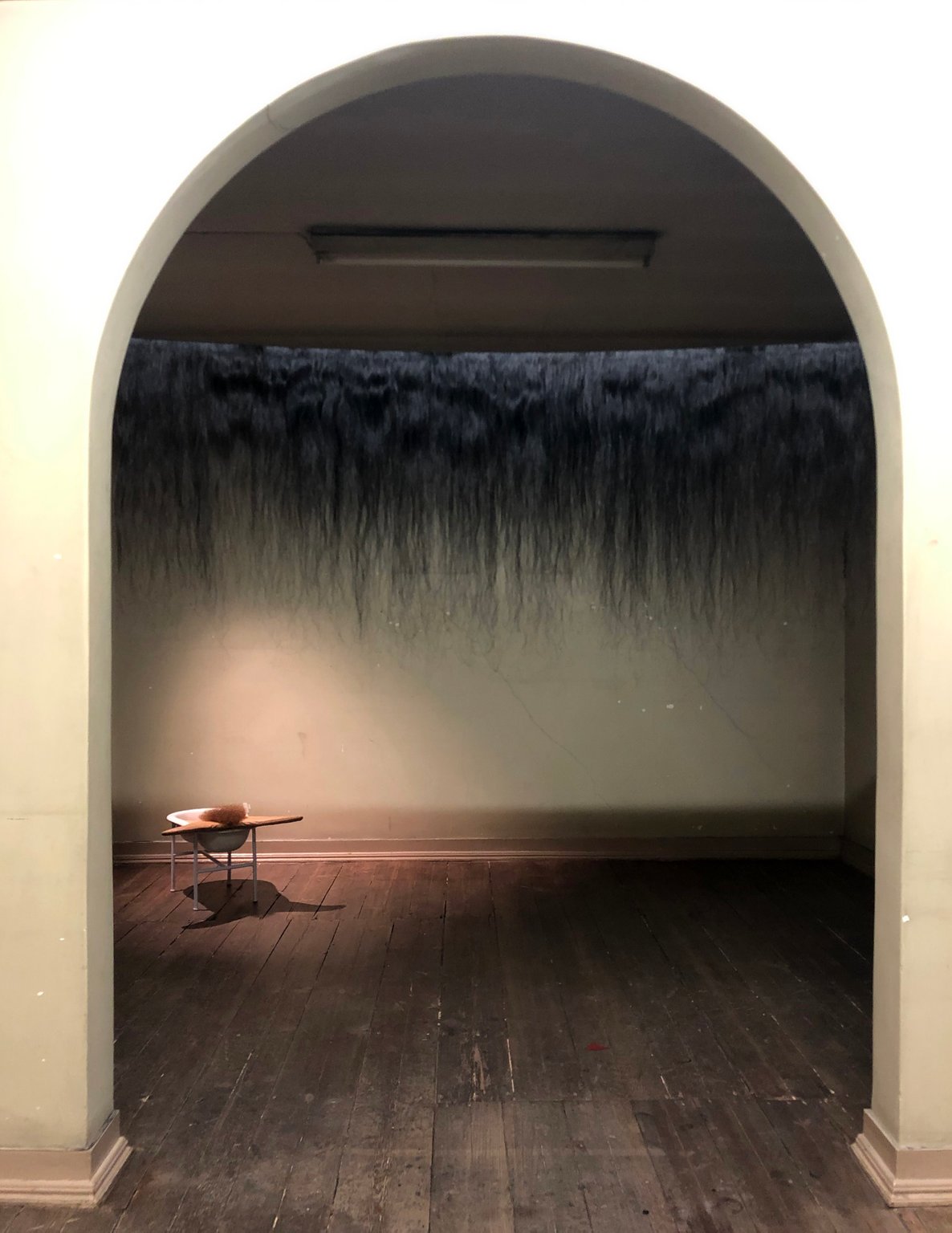
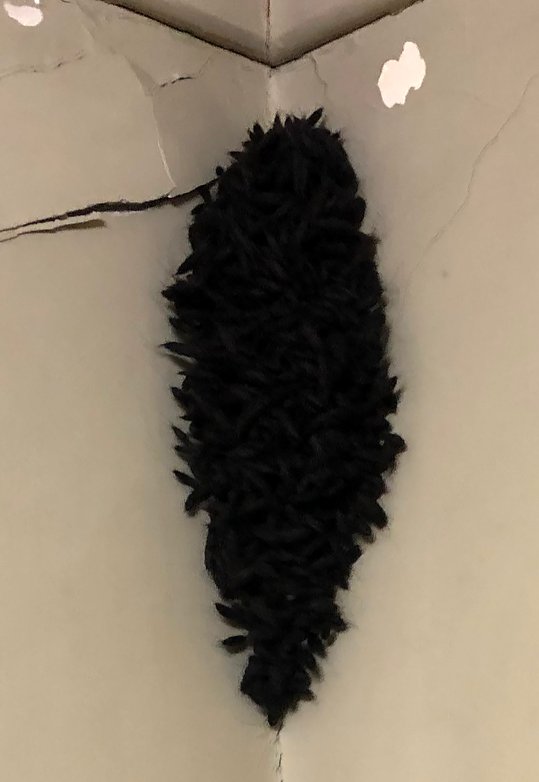
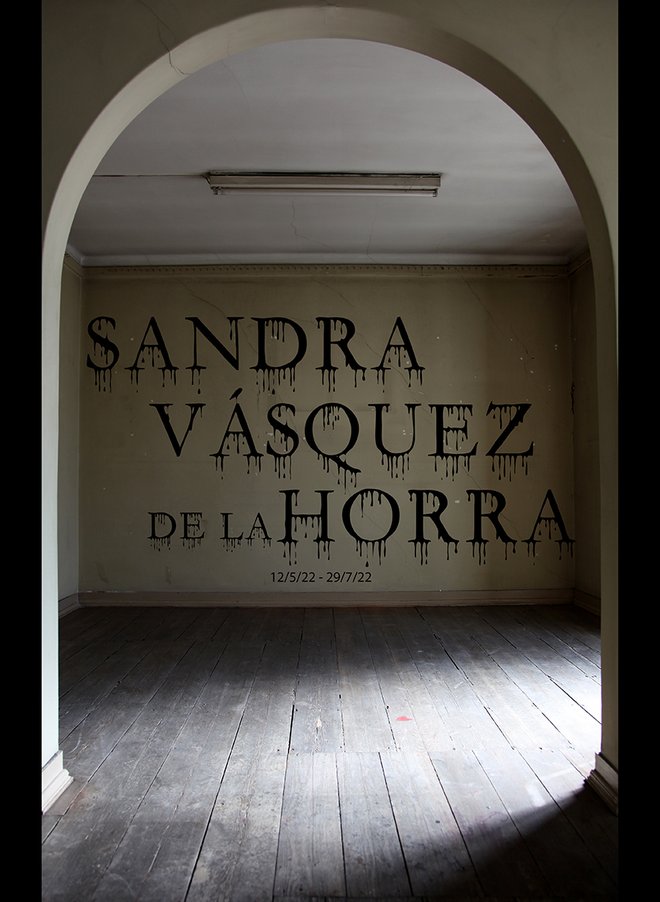
Sandra Vasquez de la Horra
Cambio de Piel
From the 12th of May to the 30th of Jully 2022
Opening: 12 of May, from 3.30 pm to 7pm.
Cambio de Piel [Change of Skin] is the title of the exhibition that
Sandra Vásquez de la Horra (1967) has conceived for the Casa A. Molder Gallery. This is also the tenth and final exhibition of the first part of the project, which began in November 2020.
Cambio de Piel is a set of fourteen drawings from the private collection of the artist, who has personally selected them for this event and which we will have the opportunity to enjoy in the highly intimate space of the Gallery.
Drawings such as Santa Muerte, Aguas Profundas, Señorita Amordazada, El ideal de una Calavera, El Señor Ciervo, Ex-Votos, all featured in this exhibition, are historic creations of
Sandra Vásquez de la Horra, who was born in Viña del Mar, Chile, and has long been a resident of Berlin.
The world of this artist is the world of drawing and its implements: paper, the line, graphite and wax, materials used in most of her works. Through them, her hands show us a vast world, as contemporary and ancient as human history.
The figures in her drawings, most of them female, demonstrate how we share not only what is inside our bodies, our limitations and fears, but also the myths and tales connected to religion. The body is finite and death is a certainty. However, de la Horra uses a sharp sense of humour and a profoundly poetic (romantic, sometimes) tone to tell us how the greatest injustices, the limitations and uncertainties of human life, can also provide us with strength and structure.
Sandra Vásquez de la Horra’s oeuvre is also the upshot of a geographic and cultural cross-pollination between South America and Europe, which manifests in her works as the magnetic, almost esoteric power these figures exert over us, as can be seen in La Dama del Castillo Encantado and Santa Muerte, among others.
Our recognition of the distant worlds that are in front of our eyes is aided by the way the artist sets up her exhibitions, creating connections between pieces and highlighting formats, figures and subjects in an almost meandering fashion. These drawings will swallow us up, like the figure in Anaconda, but they will also make us laugh and dream, like the figure in El Señor Ciervo or in Aguas Profundas.
What we most fear is perhaps also what we most desire: this is one of the evidences that confront us when we look at the drawings in various formats (large, medium and small) that make up Cambio de Piel.
Sandra Vásquez de la Horra’s exhibition will run until the end of July. During August, both the stamp shop and the Gallery will close, to reopen with the second part of the project in September 2022.
Sandra Vásquez de la Horra Press
The exhibition isopen to the public on weekdays, during the shop’s afternoon schedule, i.e. from3.30pmto7pm; visits on weekends and holidays can be made by previous appointment.
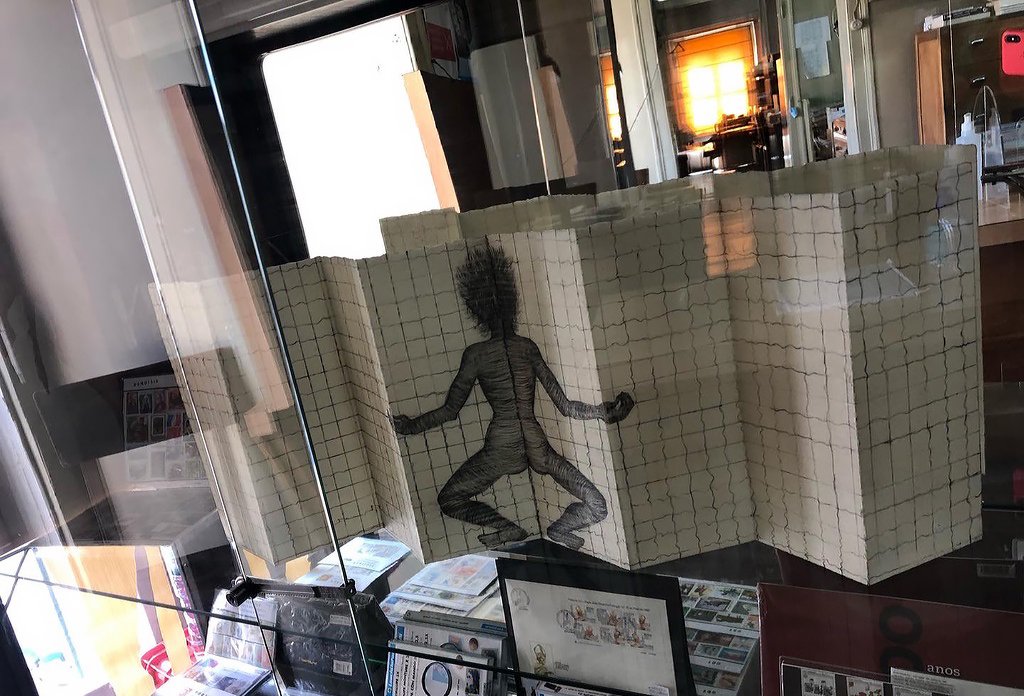
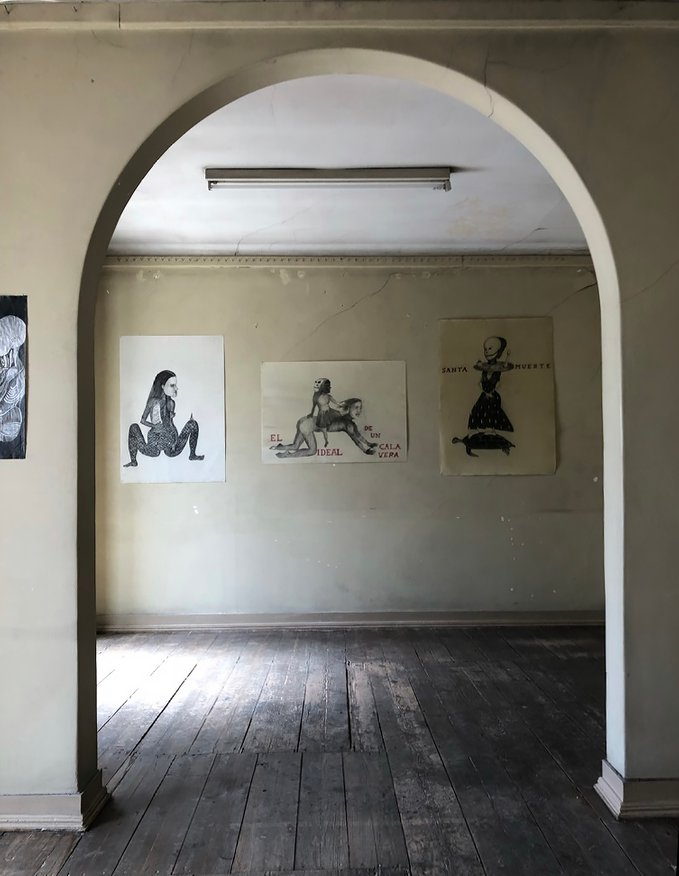

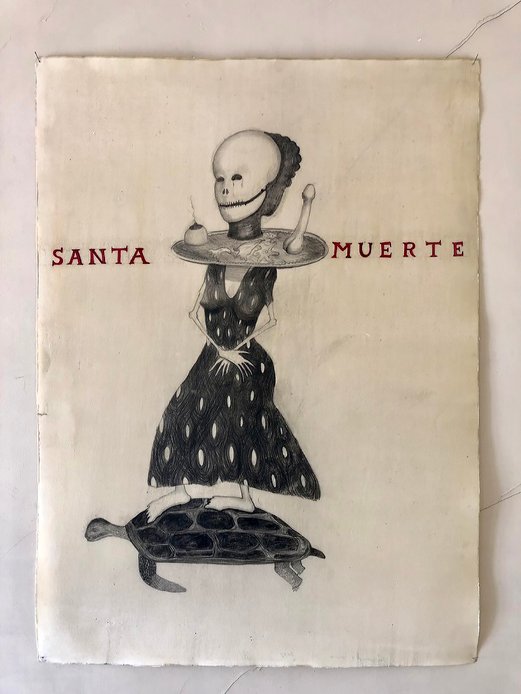
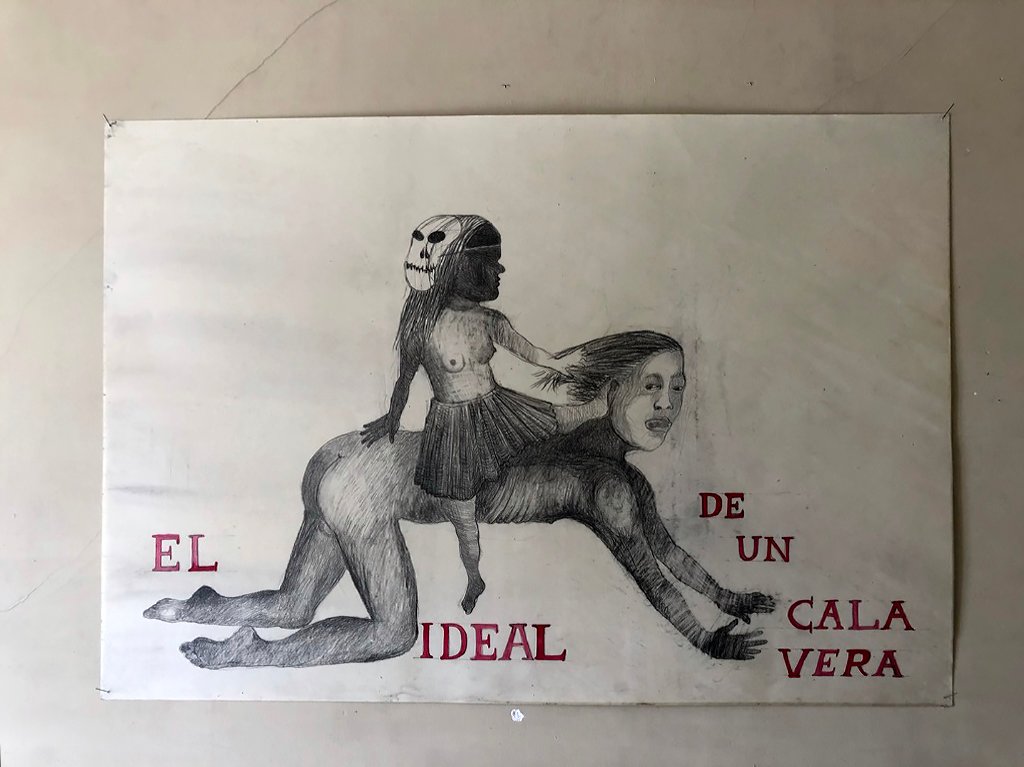
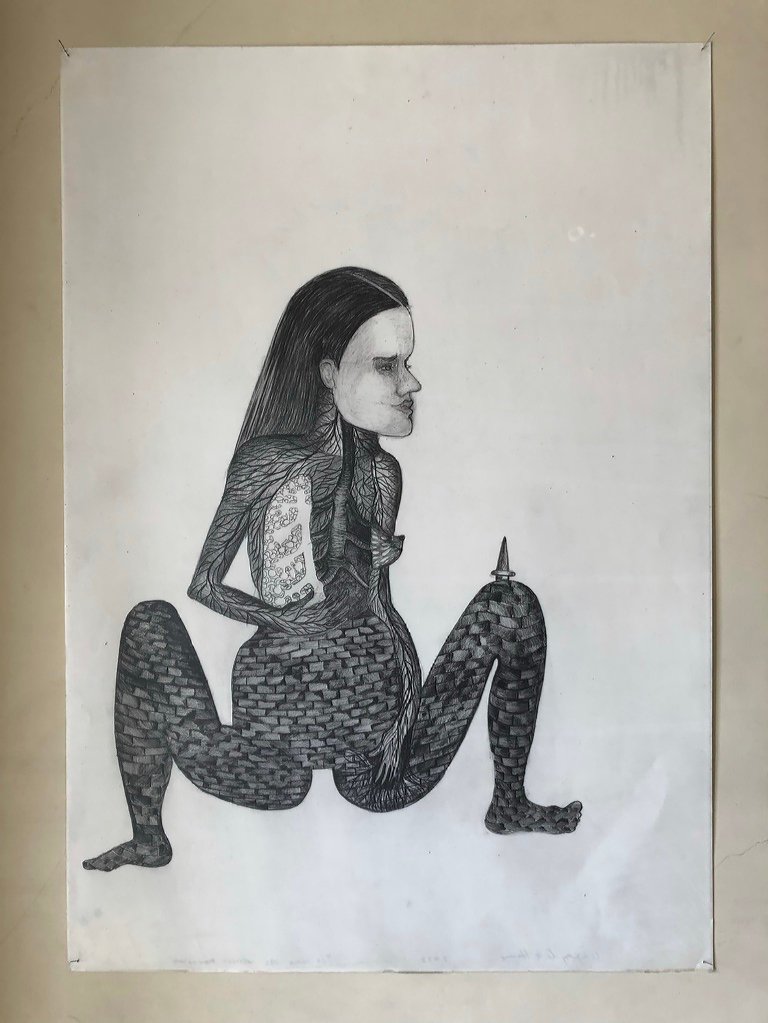
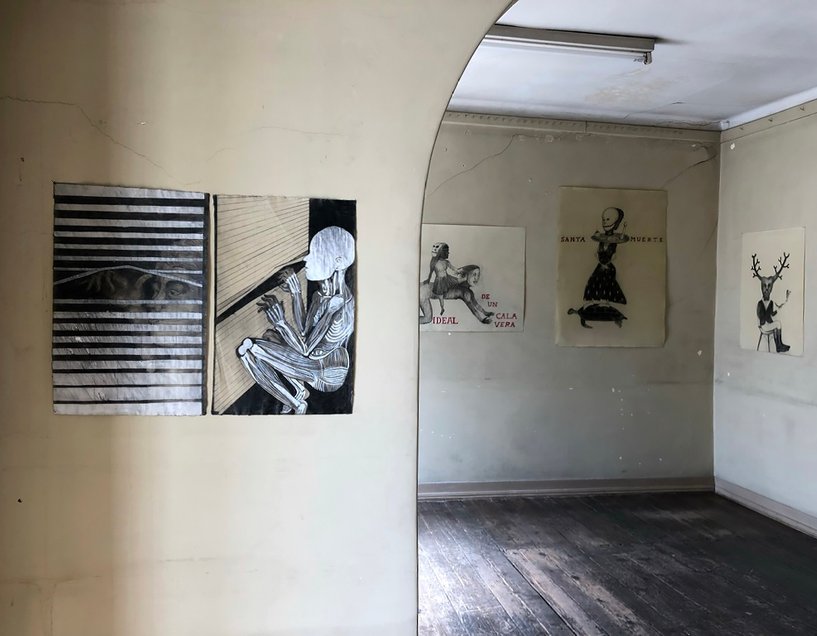
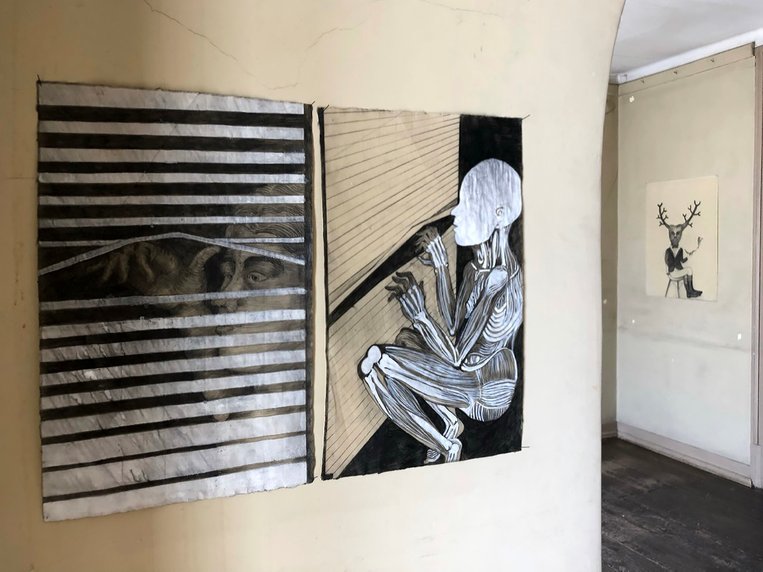
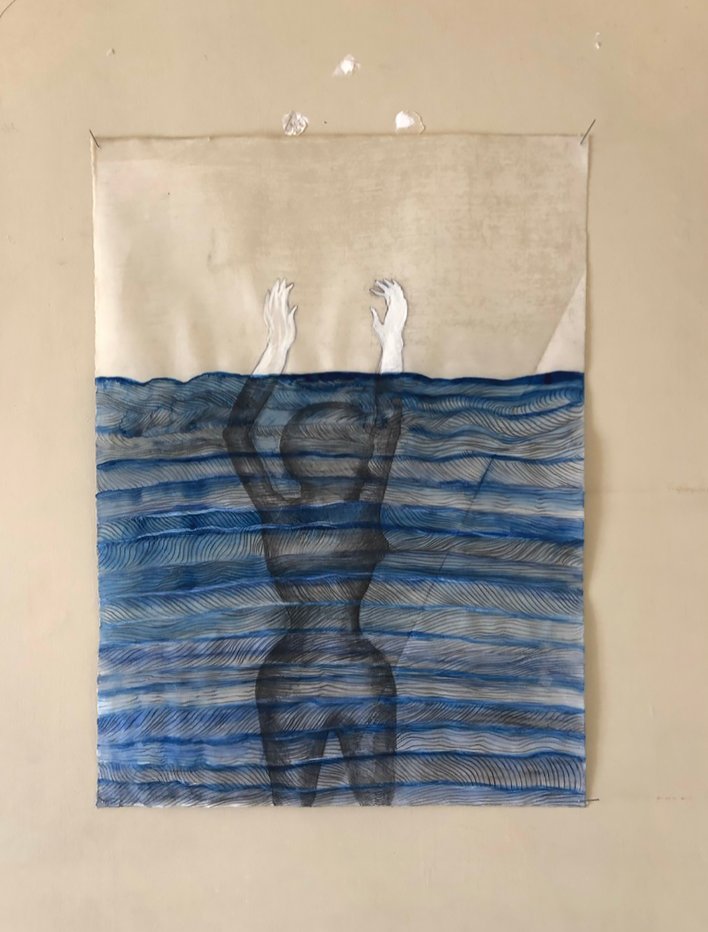
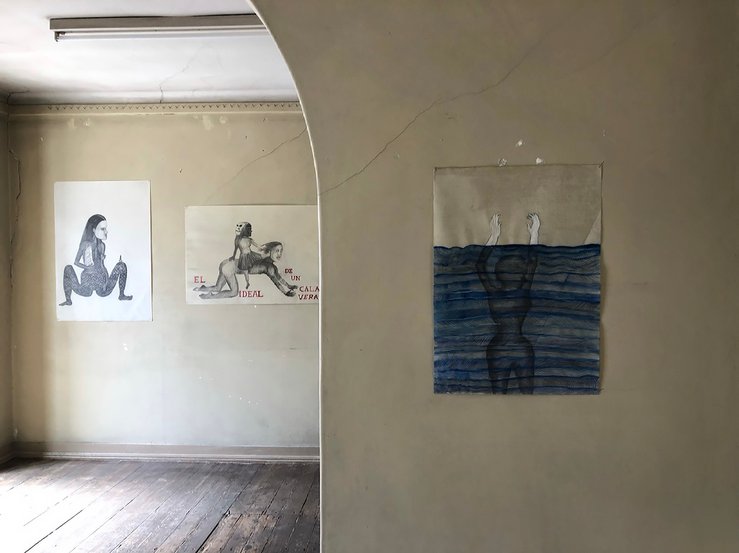
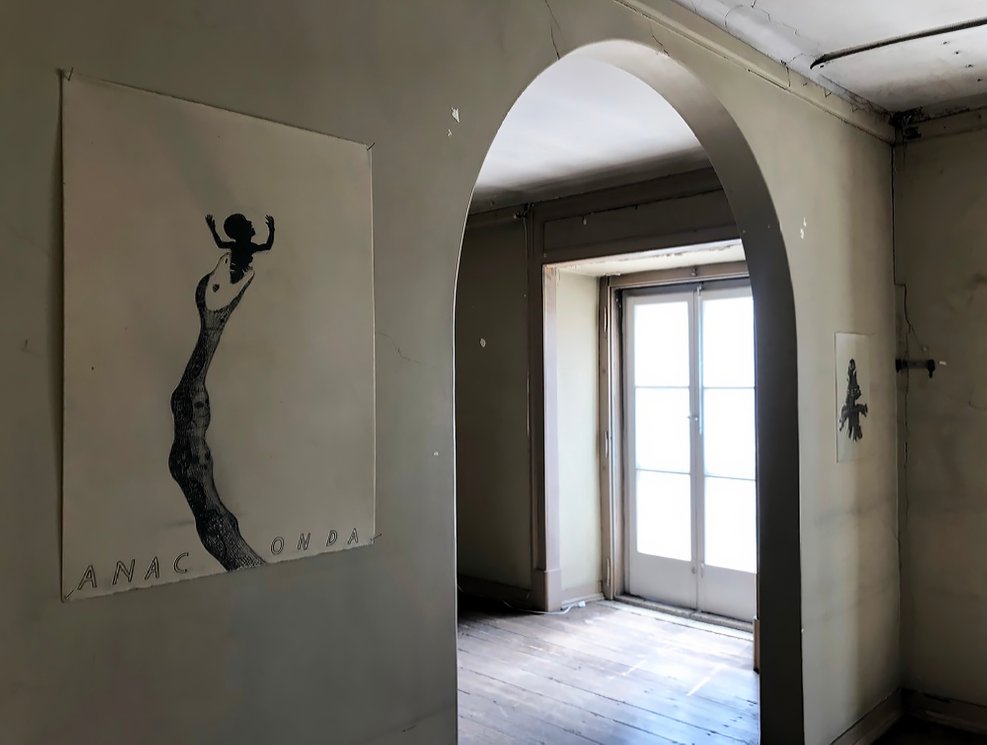

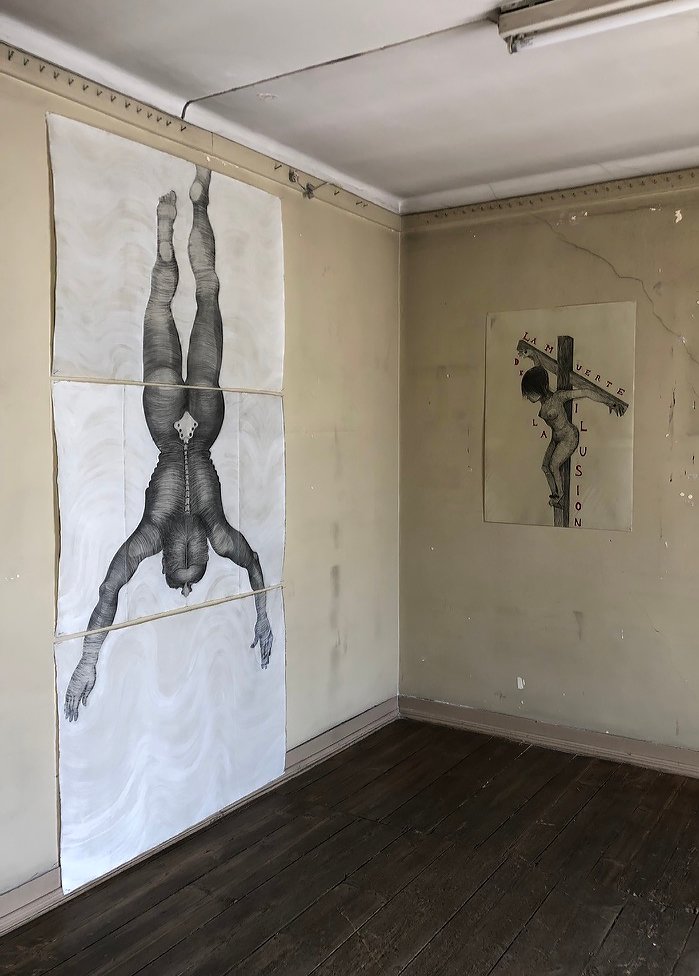
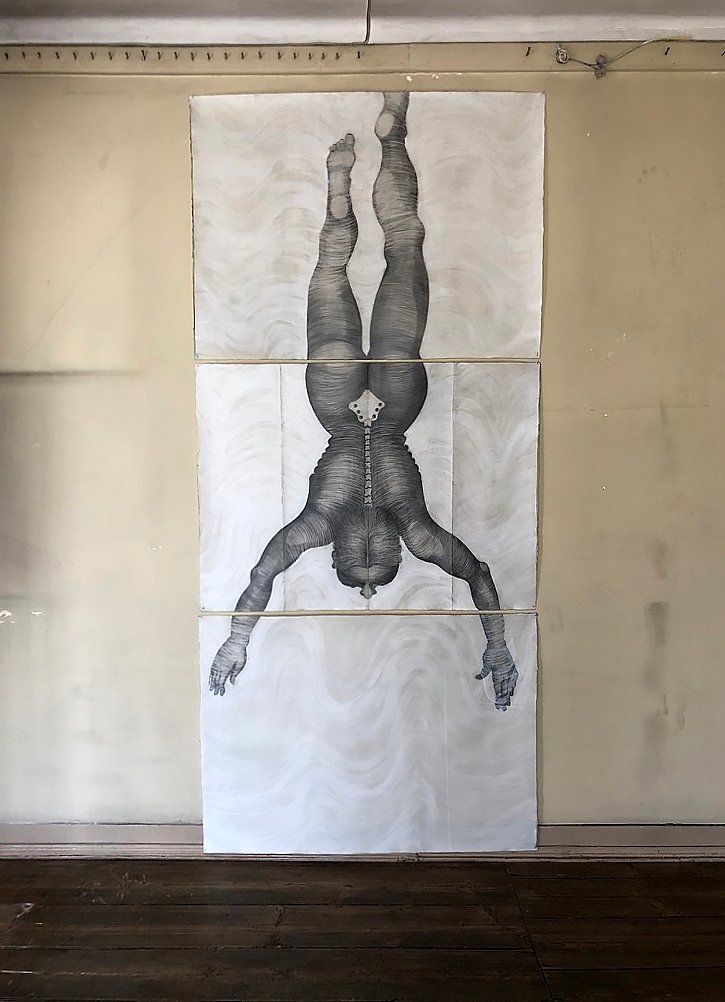
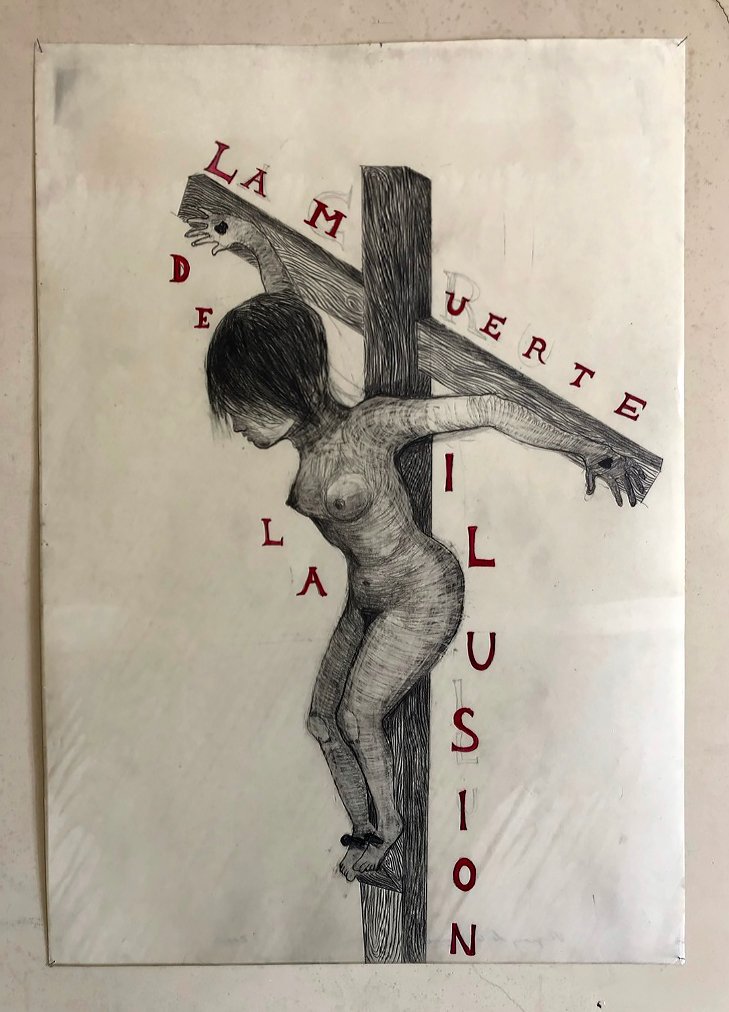
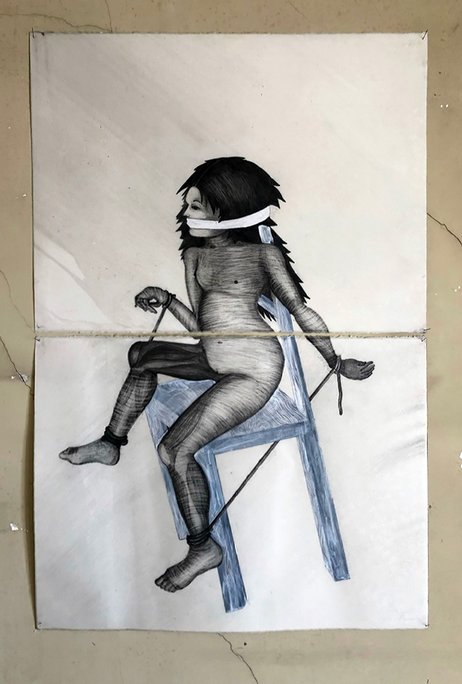
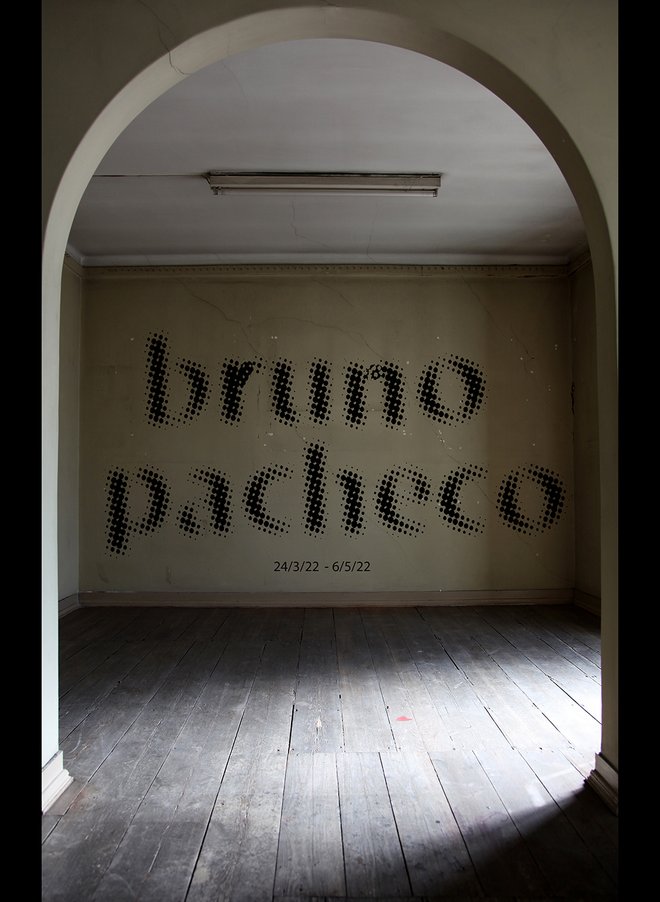
Bruno Pacheco
One two, left right
From the 24th of March to the 6th of May 2022
Opening: 24 March, from 15h30 to 19h00
Bruno Pacheco (1974) is the artist featured in the Casa A. Molder Gallery’s ninth exhibition.
Um dois, esquerdo direito [One two, left right] is the title of that exhibition, which was especially conceived for the Casa A. Molder Gallery.
We are welcomed by someone who, in a sequence of animated photographs on video, performs a hand salute to us. At first sight, he may look like a soldier; he dresses in military green, has a helmet on and wears a glove on the hand that salutes us, a gesture that is both symbolic and determined. That someone is the artist himself. Now, looking closer, we can see that he is wearing paint pots as a helmet, as well as an old sweater and a glove that are clearly also objects from his studio, and that salute starts to strike us as a puerile, comical gesture.
Painting is a very serious matter, particularly Bruno Pacheco’s painting. So serious that it leads him, as in this exhibition and throughout his career, to create sculptural objects that are as pictorial and conceptual as his paintings.
Who is private Pacheco saluting? The visitors? Painting itself, like when he saw in China the changing of the guard being performed in front of Mao’s portrait?
On the wall we see a pink arch, with a shade. This pink is a hue that Bruno Pacheco created specifically for this piece, which formerly was installed outside and now has become an interior piece. It is a door that invites us to enter a wall; like a painting, like a nonsensical object, like an outside replica of the arch that divides the gallery’s small rooms. Concerning the colour of this piece, he says: “notice that the colour on these bars (at his studio) is a creation of mine; it didn’t exist before, and since then they have used it in all the other studios”. An undertaking that is both logical and unique.
And private Pacheco keeps performing his salute.
Pequenas vitórias [Small victories] is a piece made with yellow resin, a yellow that is familiar to us, being the yellow of painter’s tape. This piece is another arch displayed on a wall. This arch gives continuity to the one in the room, as if it were inviting us to enter an imaginary corridor that leads out, thus enlarging the exhibition’s confined space. This piece is modelled after the small wooden wedges that are used to tighten canvas stretchers. Here, and once again, the painter’s everyday objects come together to create something new. These tiny, invisible pieces, which generate stability, have been congregated by the artist, who has lent them sculptural grandeur by turning them into a geometric figure that also possesses pictorial qualities.
It can be said that the obstinate inability to obey the demands of that authority figure that is painting is part and parcel of Bruno Pacheco’s work, as much as his full and reverential commitment to that art.
And private Pacheco keeps performing his salute.
A special thanks to Gonçalo Jesus e Matteo Consonni.
The exhibition is open to the public on weekdays, during the shop’s afternoon schedule, i.e. from 3h30pm to 7pm; visits on weekends and holidays can be made by previous appointment. Access to the Gallery is through the shop.
Covid-19
To enter the shop, mask-wearing and hand-sanitising are mandatory.
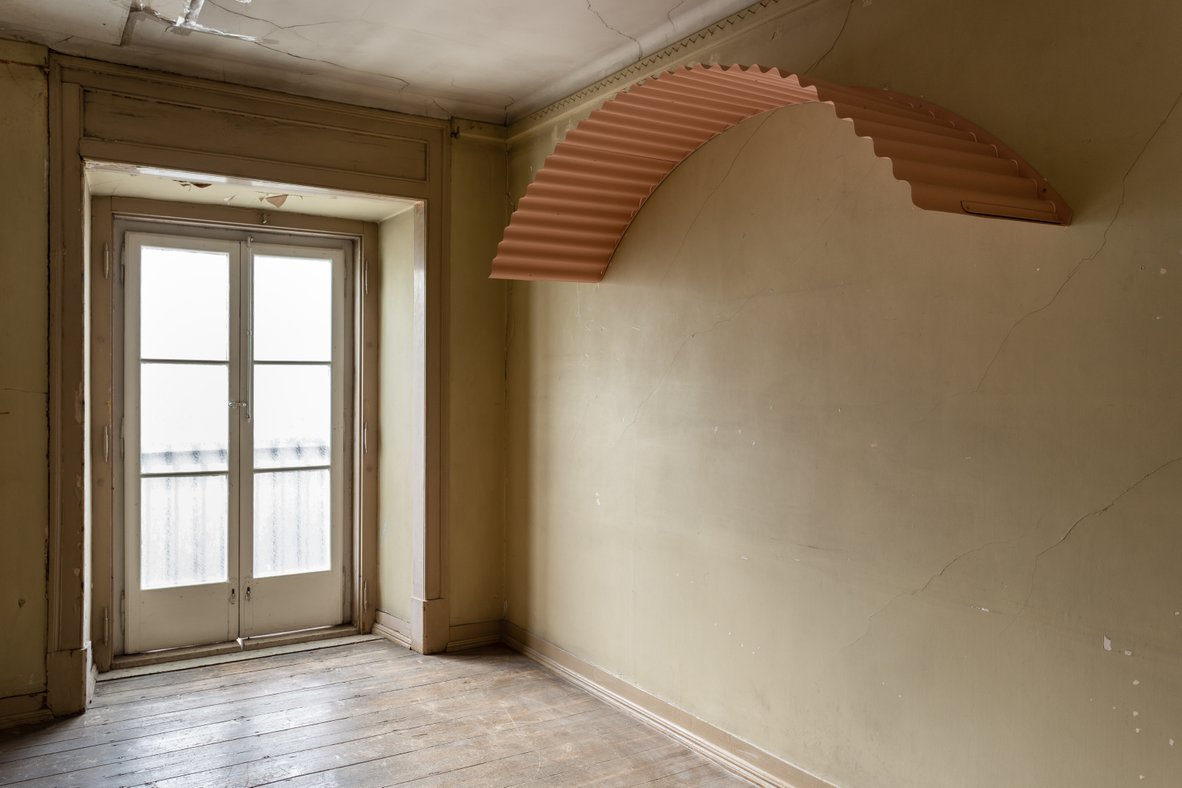
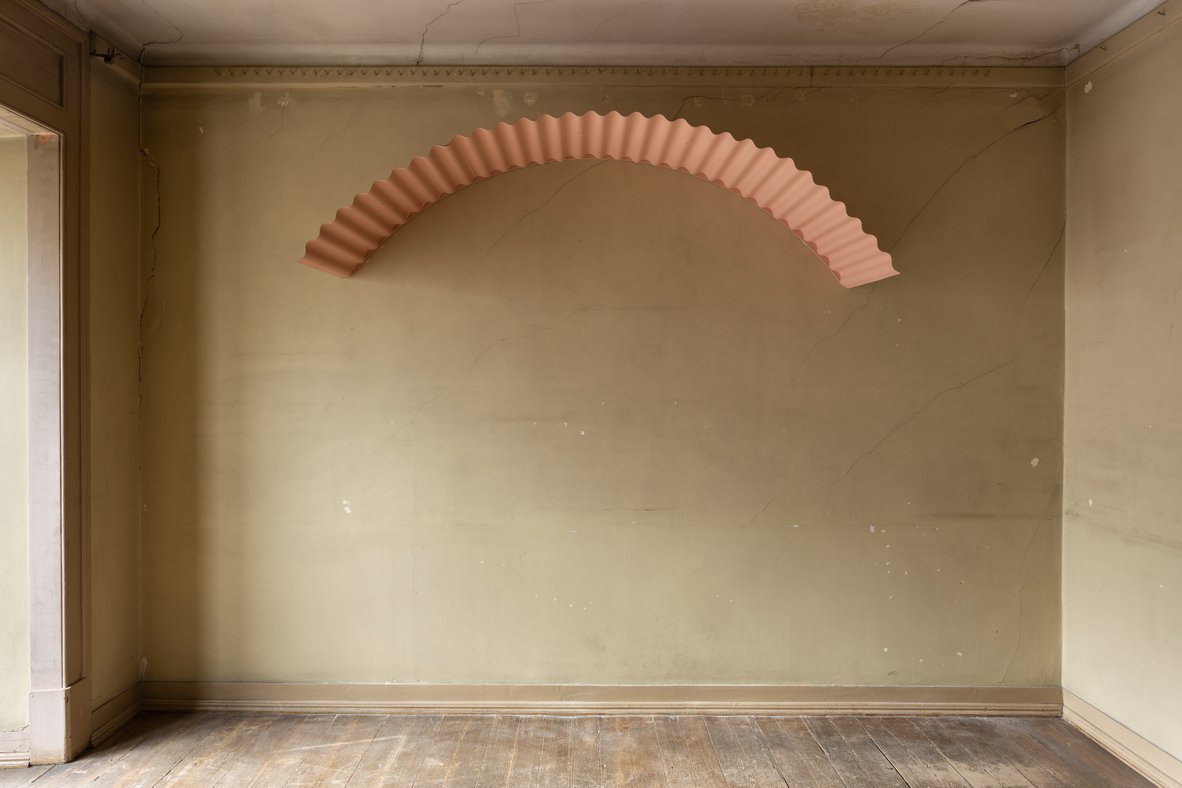
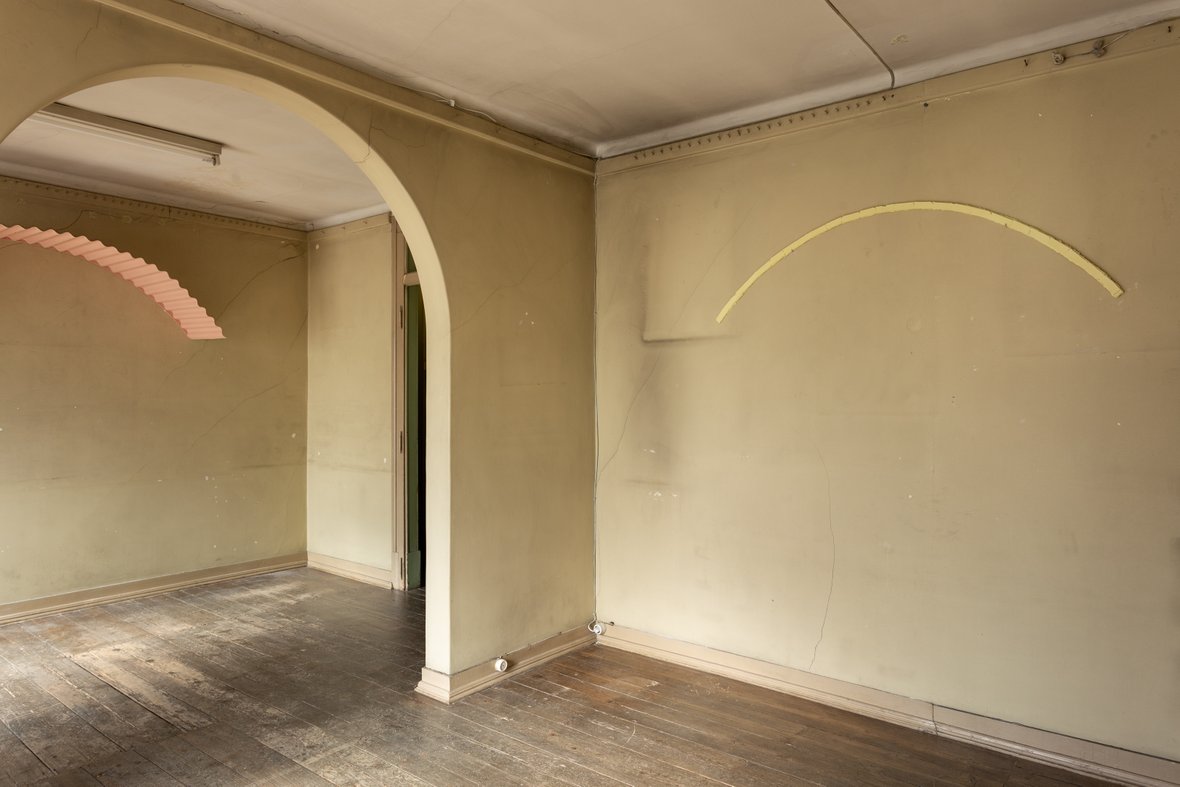
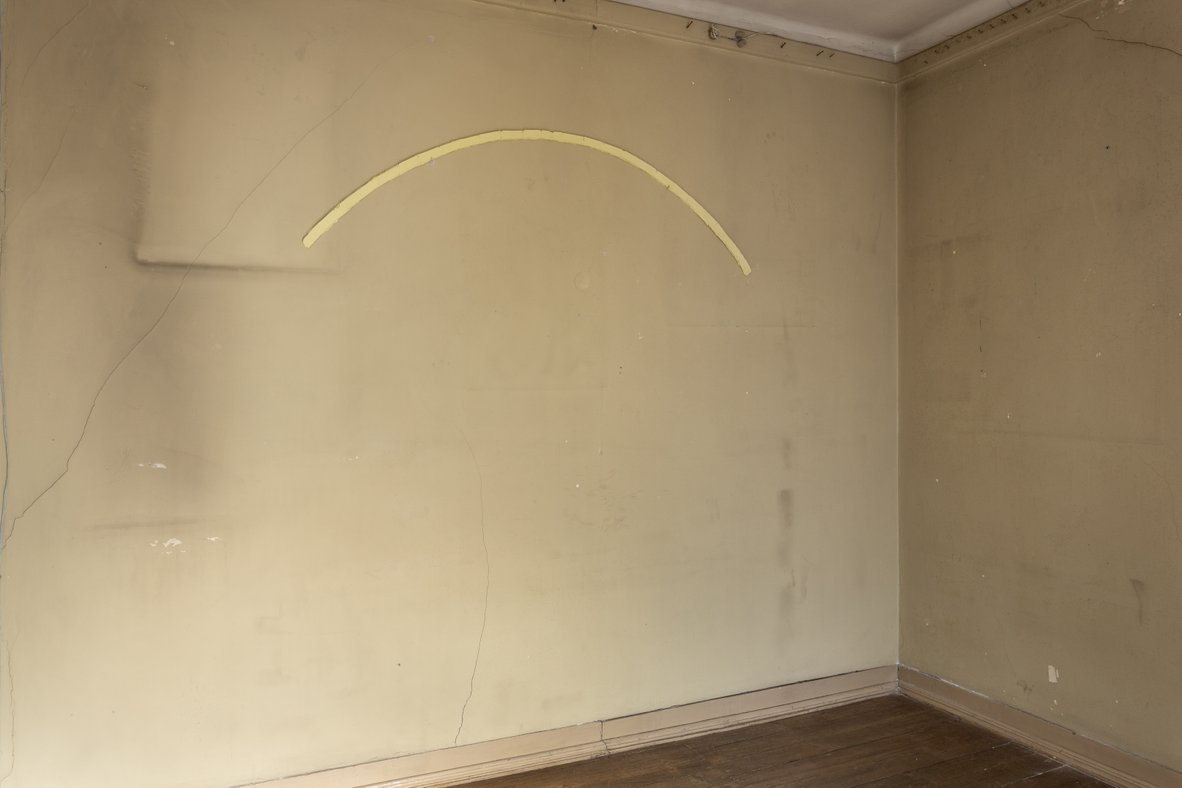
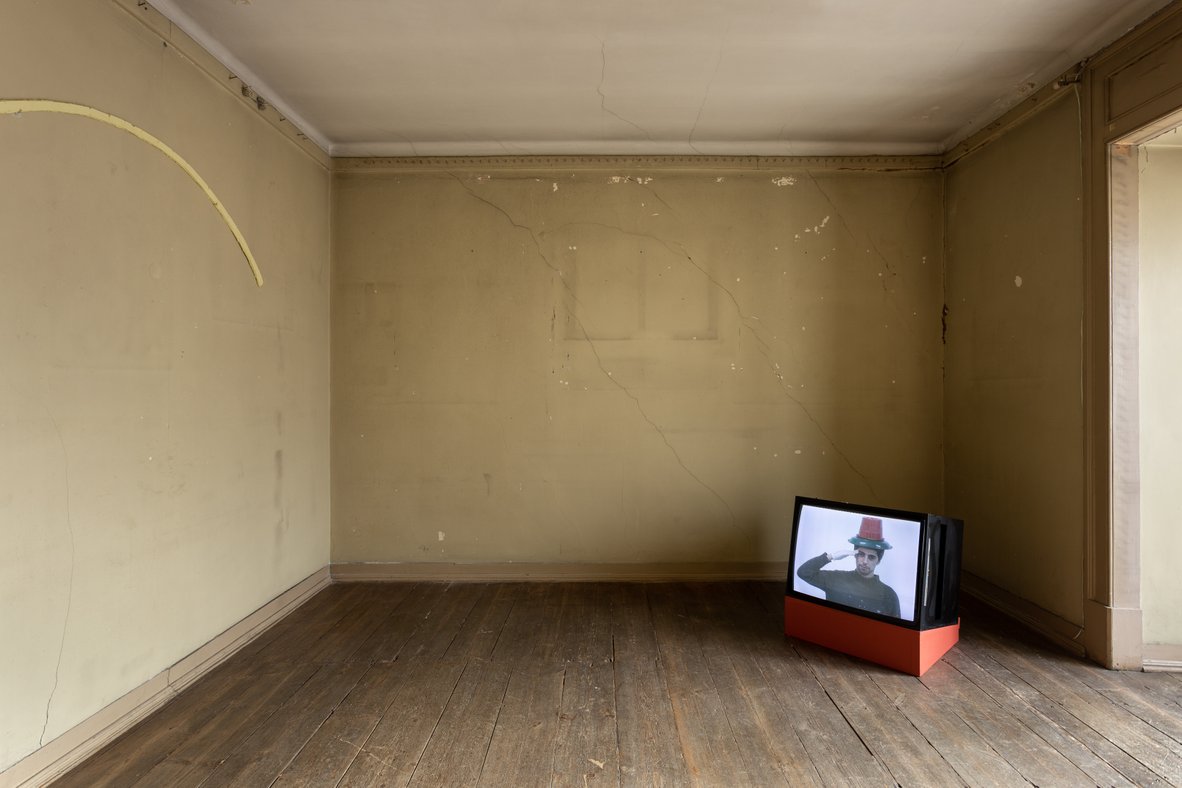
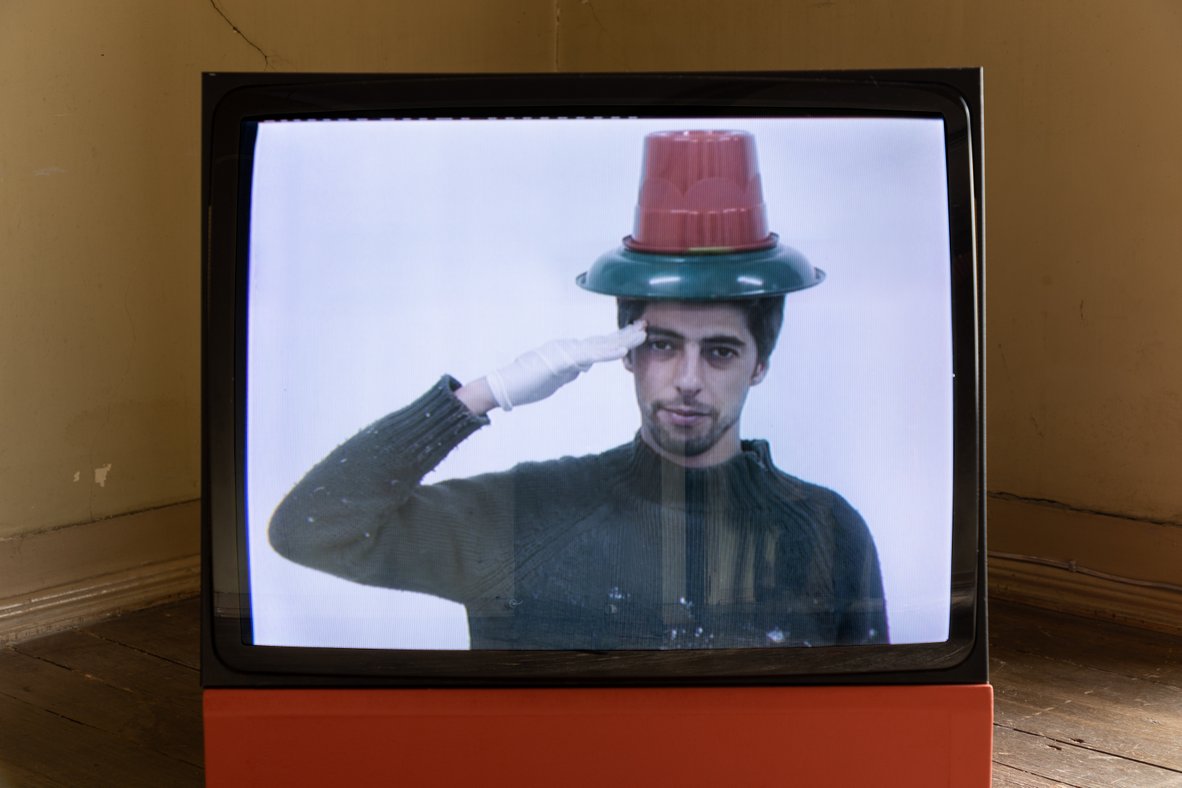
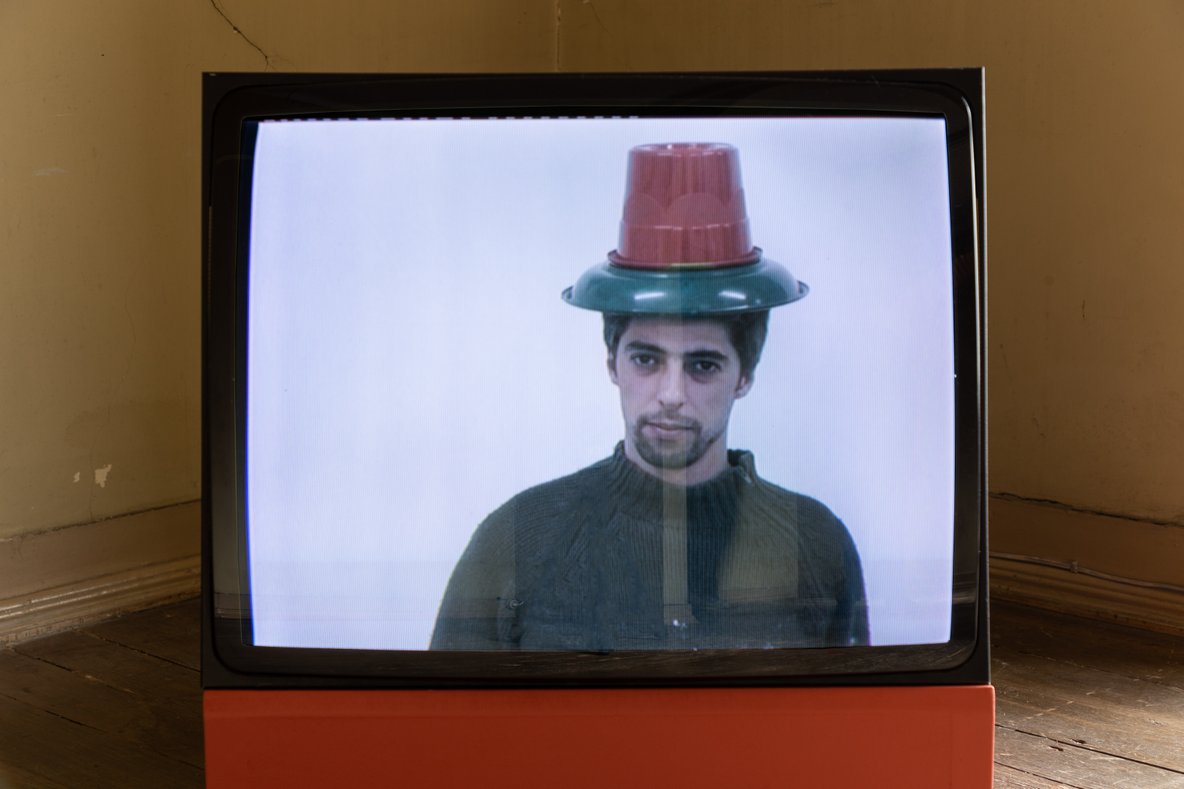
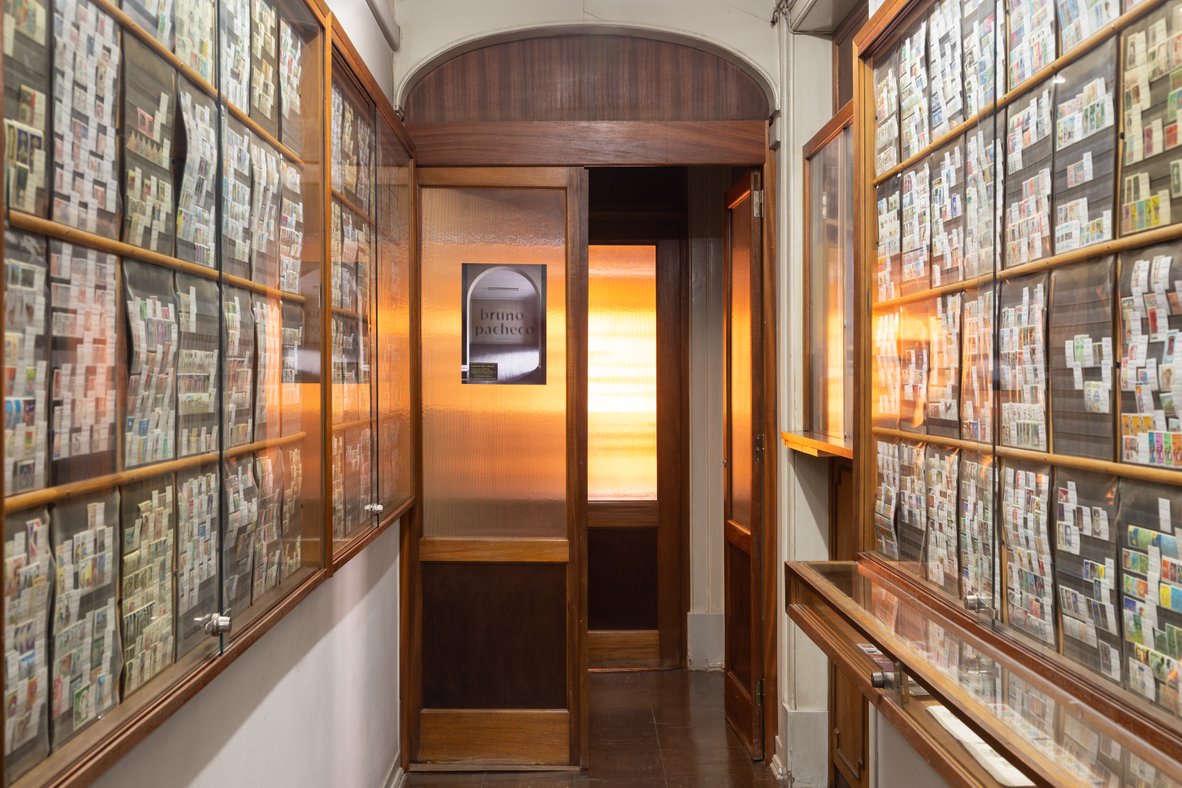
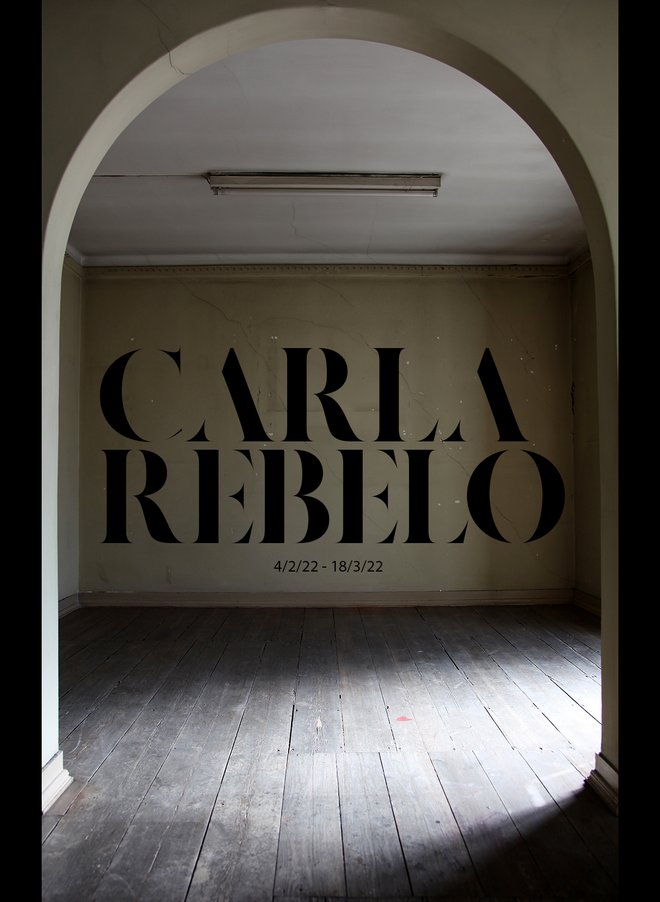
Carla Rebelo
Geology of a place
From the 4th February to
the 18th of March 2022
Opening: 4 February, from 15h30 to 19h00
Carla Rebelo (1973) is the artist featured in the Casa A. Molder Gallery’s eighth exhibition.
Geologia de um lugar [Geology of a place] is the title of the installation that occupies the two rooms that make up the Gallery and of the exhibition itself, which according to the artist is based on “a certain idea of the passage of time in this place”.
The lines of nails that can be seen on the rooms’ walls were once (when the shop was also a commercial art gallery) used to hang paintings and prints, and they provided a starting-point for Carla Rebelo, who usually creates site-specific installations and sculptures. On each wall, the artist counted 66 nails and stretched white strings from the floor, near the arch that separates the two rooms, to create two inclined planes that are supported by these lines of nails. The artist is quite precise: “66 nails on each wall, 132 in total. Each nail will hold two strings, each string will be tied to a 40-gram weight. 264 strings, 10,56 kilos. These are the space and time coordinates of the Geology of this place.”
Strictly speaking, this exhibition was defined by the particular features of these old rooms. They dictate the organisation of the strings that, though light and almost invisible, limit our movement across the space and are a force that generates structure, a structure that is both perennial and ephemeral.
Geology of a place also evokes drawing – through both the planes of strings and the shadows they cast across the space. On the other hand, we also observe the creation of a fabric, woven in a loom created from this space. A fabric of time that has already passed, that passed through us and what came before us. The history of a place. The time that comes before us is used by the artist to leave her own mark in the space, adding to the history of this place. Like a crafty spider, Carla Rebelo captures us in her web, which compels us to contemplate it; while doing so, we are confronted by our own time and existence.
The exhibition is open to the public on weekdays, during the shop’s afternoon schedule, i.e. from 3h30pm to 7pm; visits on weekends and holidays can be made by previous appointment. Access to the Gallery is through the shop.
Covid-19
To enter the shop, mask-wearing and hand-sanitising are mandatory.
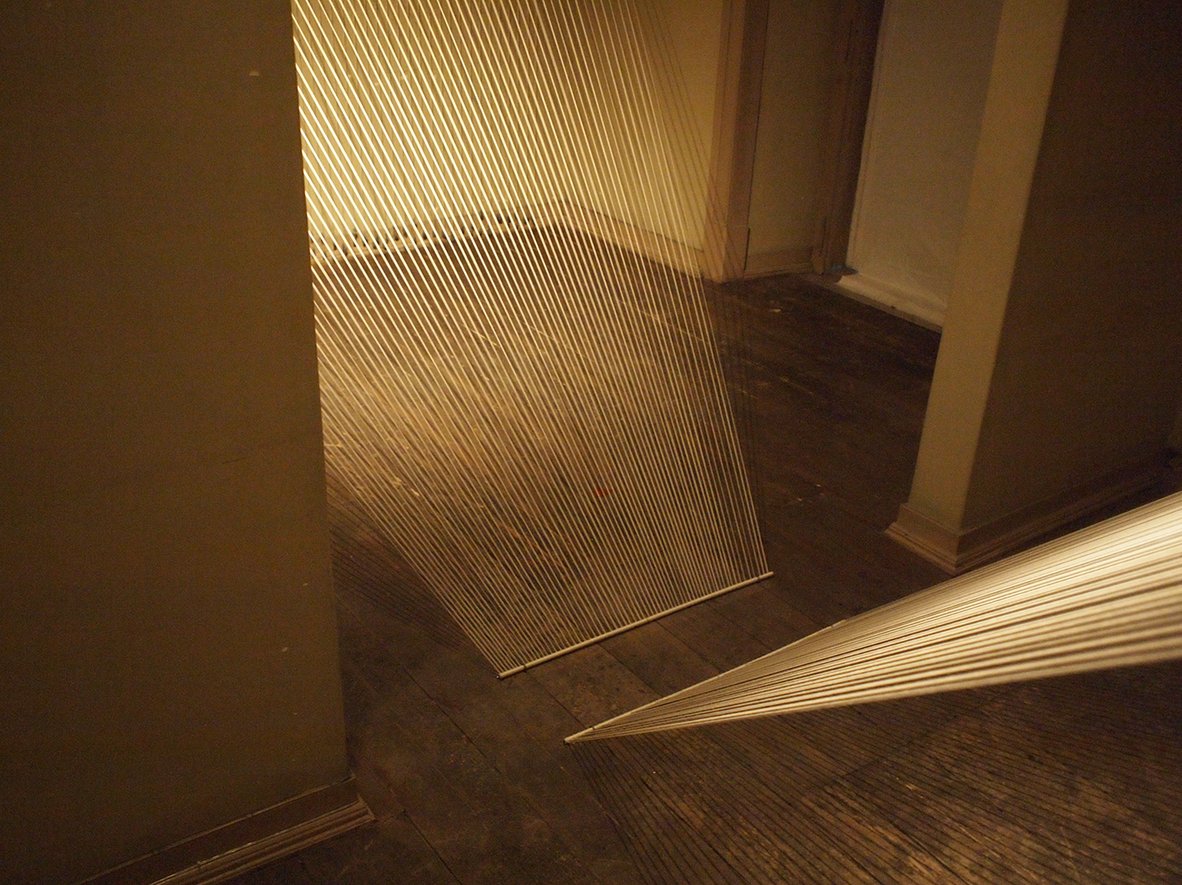

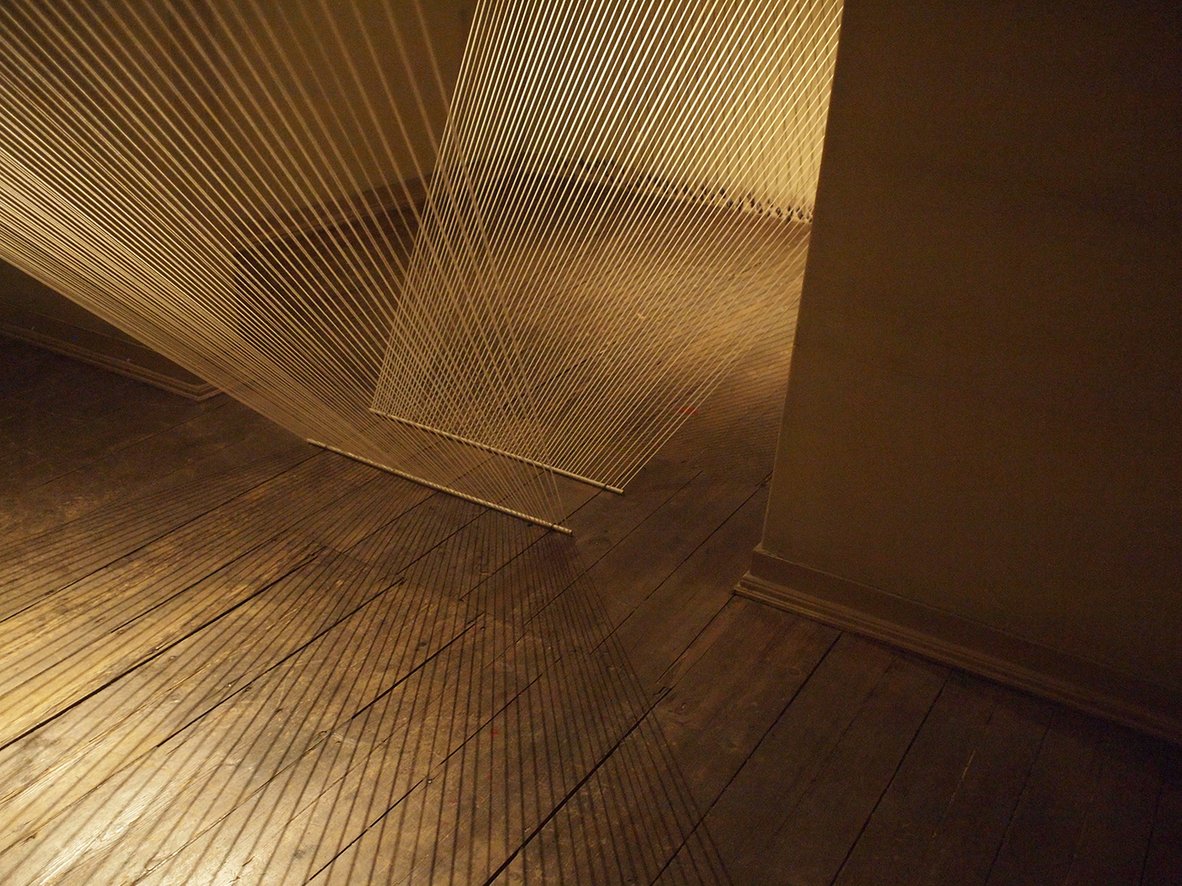
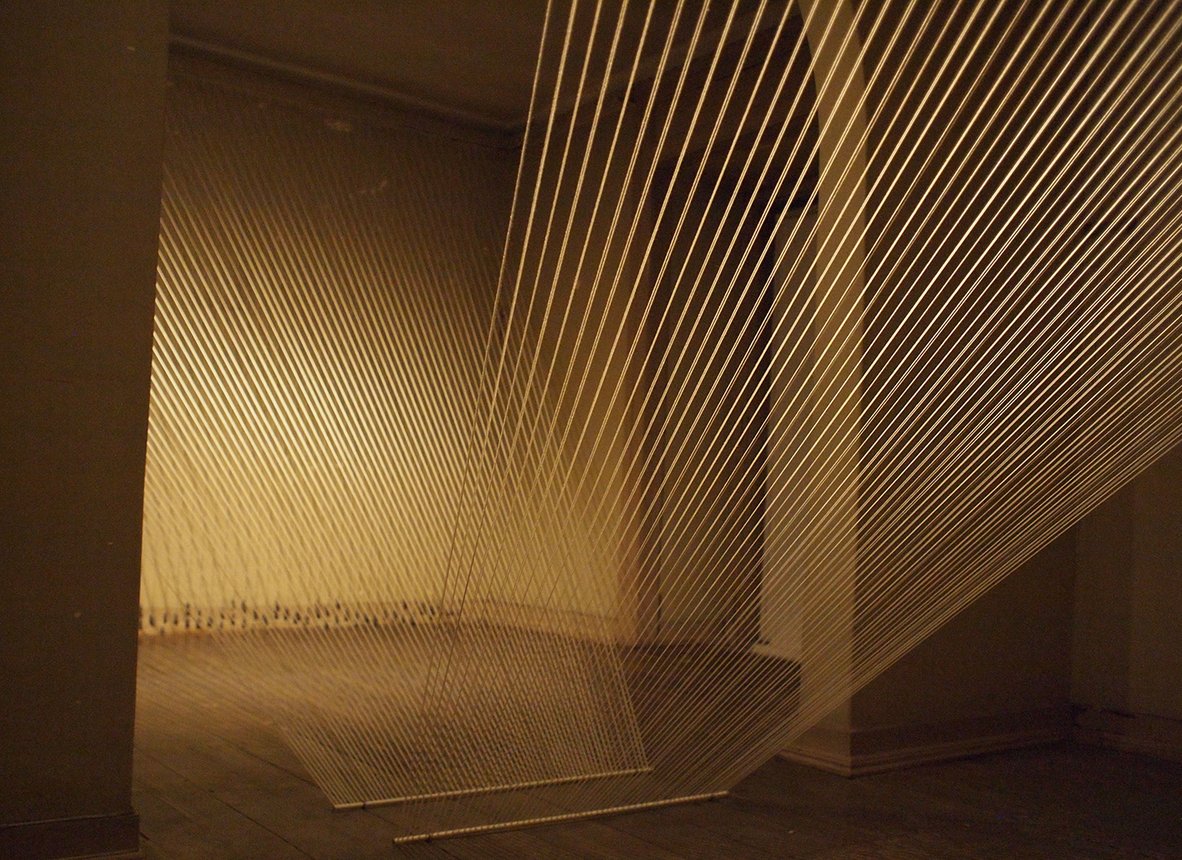
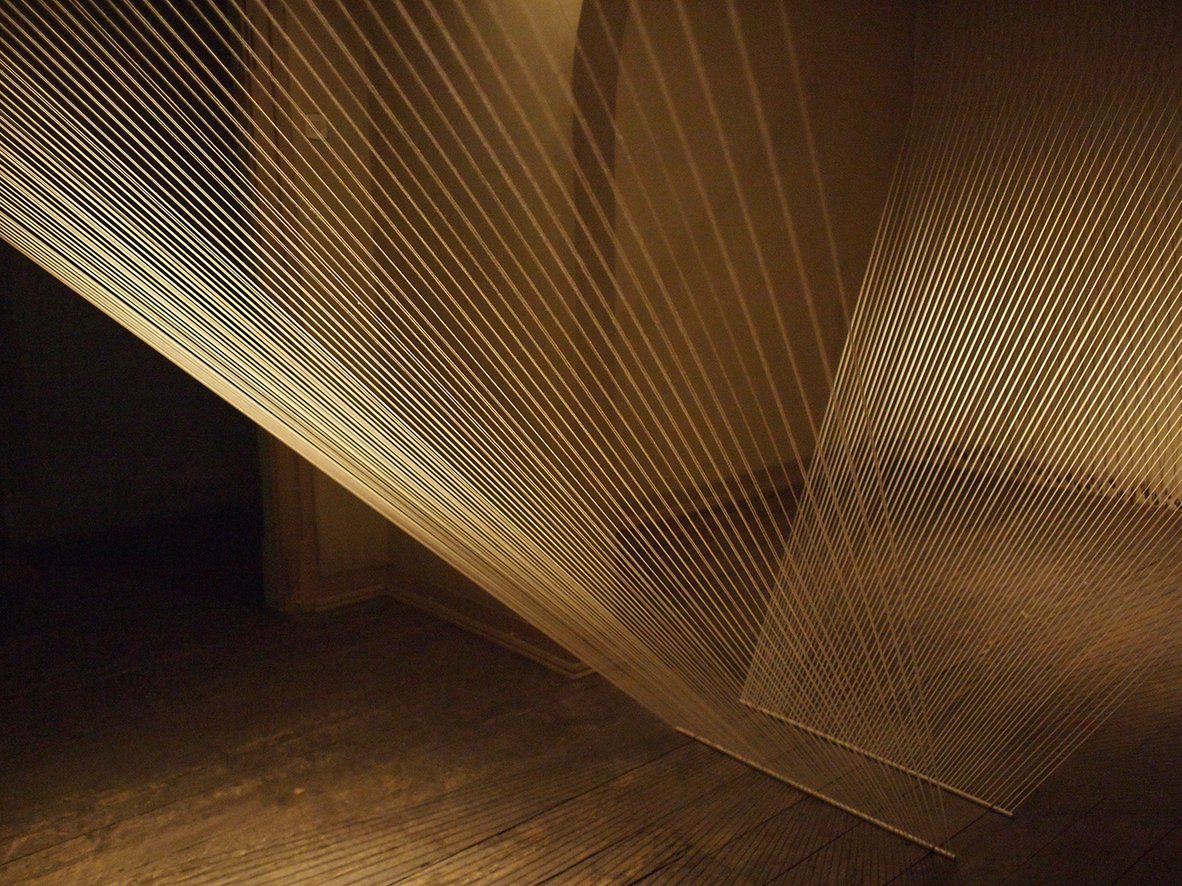
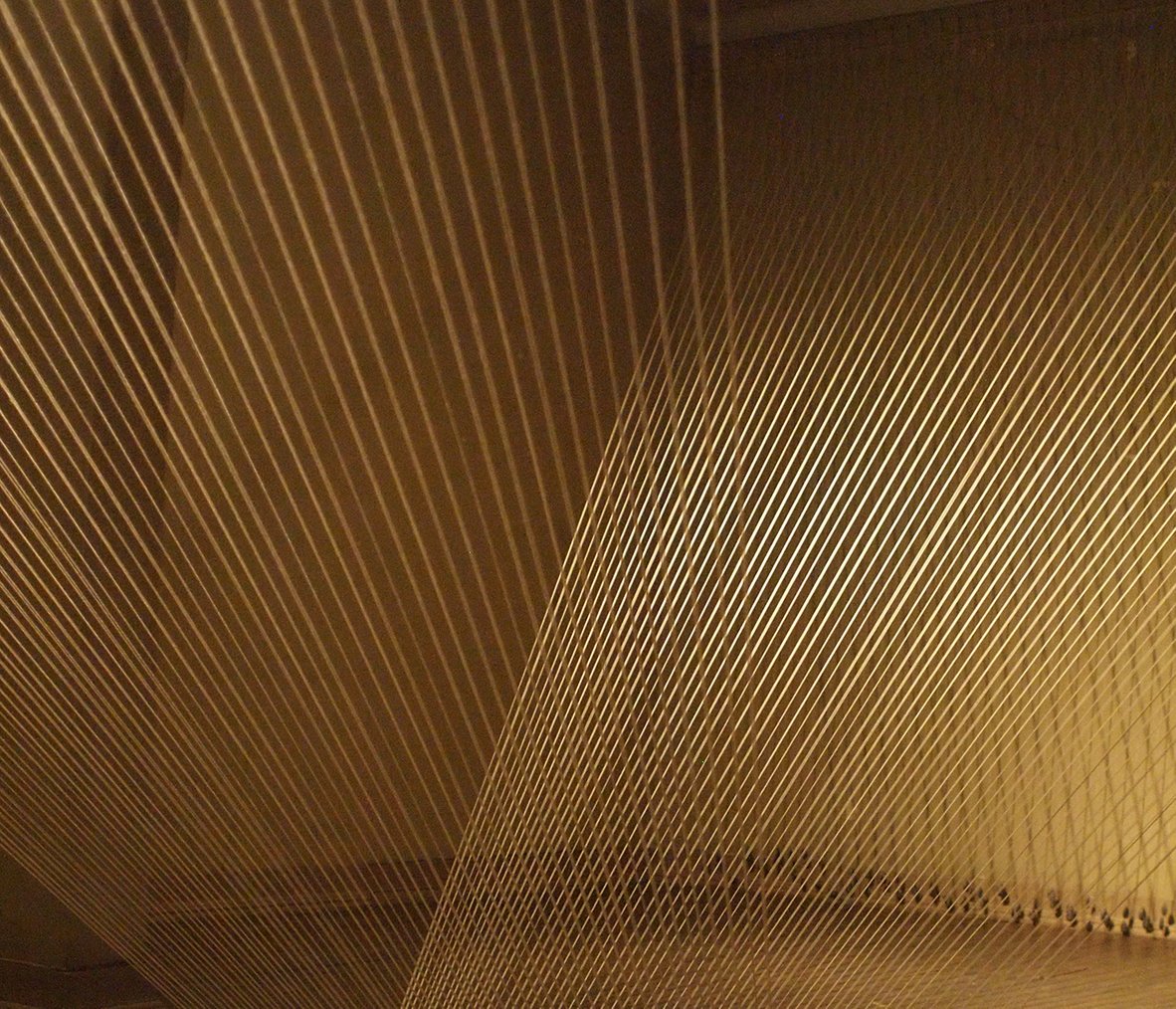
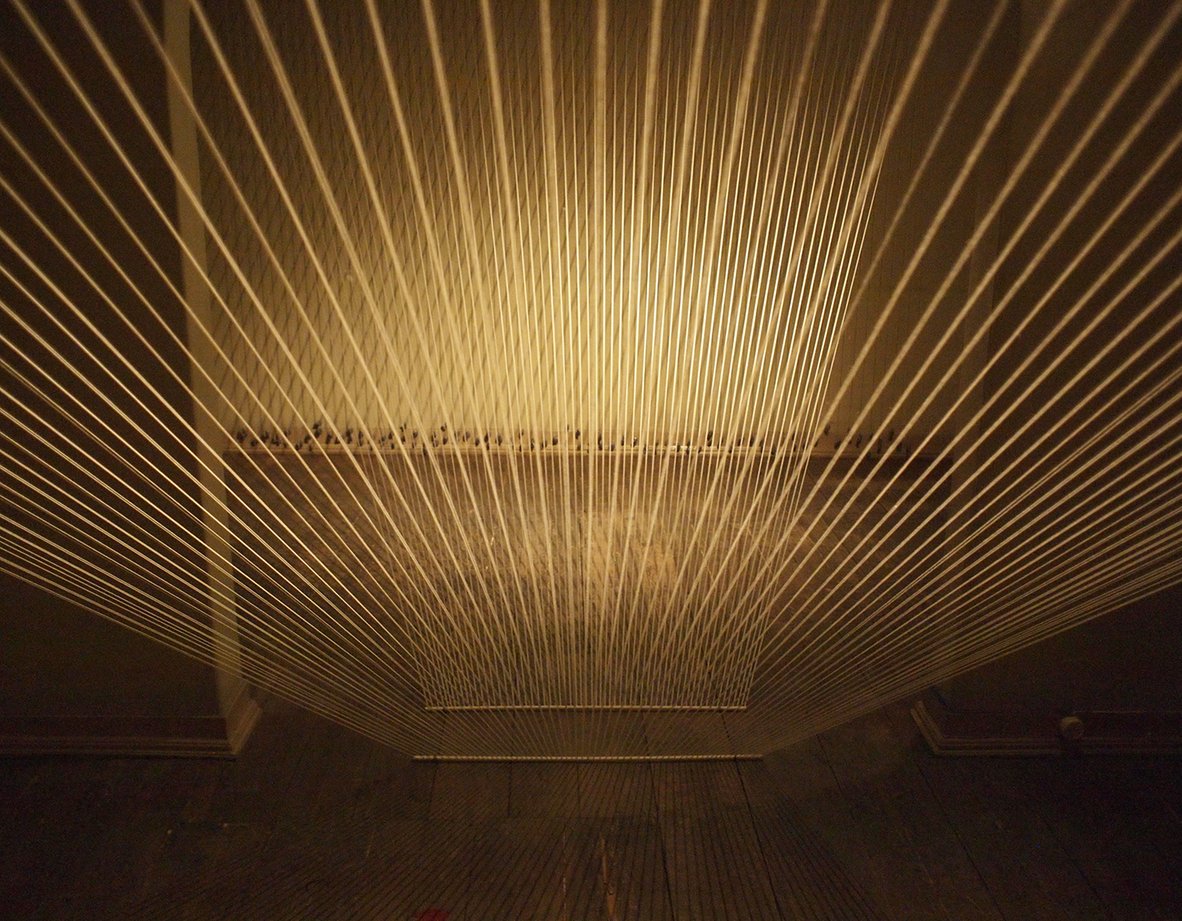
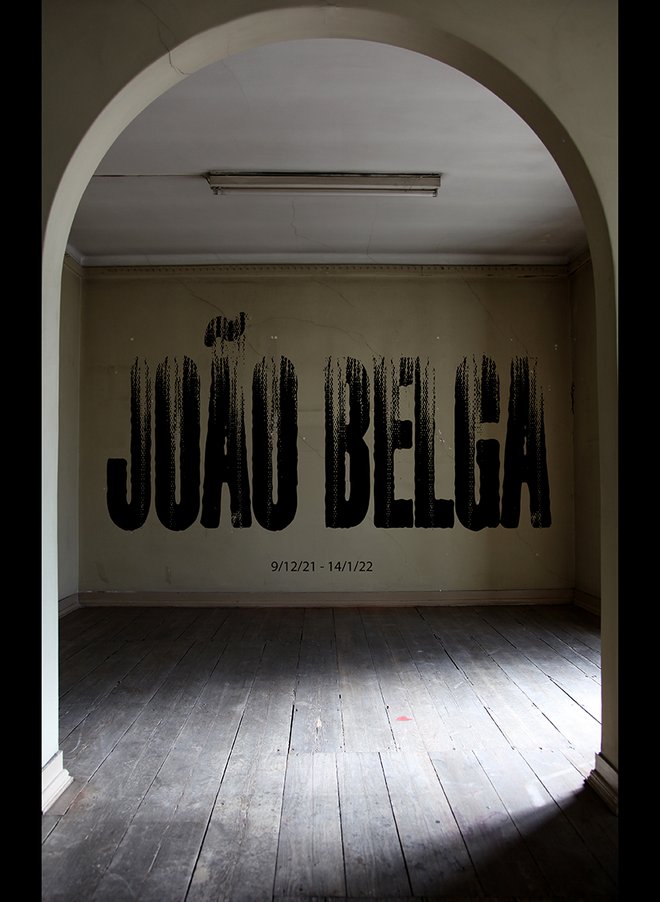
João Belga
I'm Alive - Yet I'm Not Alive
de 9 de Dezembro de 2021
14 de Janeiro de 2022
Opening: 9 December, from 15h30 to 19h00
João Belga (1968) is the artist featured in the Casa A. Molder Gallery’s seventh exhibition, I’m Alive – Yet I’m Not Alive. These words, which give the exhibition its title, are drawn on a small black-and-white canvas with all the graphic skill that defines his work as a draughtsman. Writing as drawing, the destruction of writing, the frightening symbolic value of all the images and texts that surround us – advertising as our manipulative established order –, all these themes from João Belga’s drawing and painting work are also present in this show.
“Contamination” is the word the artist chose to describe the works exhibited here. Works that were contaminated by the 2020-2021 timespan, by lockdown after lockdown, by the fear, failure and chaos we have all experienced collectively.
João Belga secluded himself in his Caldas da Rainha studio, whence three series of small-format paintings emerged over time, not so much, we might say, as a reaction to these troubled days, but rather as an extension of them. In these series there is so much darkness and (faux) chaos that the artist appears to have been not just contaminated by the times, but has shaman-like contaminated the world itself, and that by letting ourselves be enfolded by his works we fall into a dark, unredeemable territory.
But that is only a first impression; actually, the three series of paintings (two in black on white unpainted canvas and one in white on black-painted canvas), in spite of being all “contaminated”, offer us a number of clues:
In the Paleta Series, which often resorts to the process of automatic drawing, we can recognise letters, skulls and the vestiges of quite precise drawings, which have been destroyed and transformed by a succession of dense layers laid over time, as well as by the fact that the artist has used some of these canvases as palettes while creating other works. The ones here have survived, and they give us some answers and a measure of redemption when we consider their titles, such as “White Light from the Mouth of Infinity” (the title of a 1991 Swans album) or “On Some Faraway Beach” (the title of one of the songs in Brian Eno’s Here Come the Warm Jets). In the series Luz Negra [Dark Light] the density of noise is gone, but there is a visual deceptiveness that causes us to see characters, false symbols and even landscapes in its pictures. The third series is a lot less tumultuous as a whole, being drawn from models and featuring clearly defined compositions, which strangely does not bring us to a less sombre world than the previous ones. Still, there is noise, music and humour here.
This relationship with music, a defining feature of João Belga’s work, is also present in the white canvas that shares the title I’m Alive - Yet not Alive: a palimpsest whose ninety-one layers are slowly revealed, as in a slide show of the paintings that make up this work, in the video piece that accompanies it. The video, which shows all that has been concealed in the white canvas, has a cadence that allows us to see each one of the hidden images, while hypnotising and manipulating us. The sound that envelops the whole exhibition, created by DAS COOL ensemble, a group of which João Belga is a member, is also used to soundtrack his studio work, thus making us artists as well as viewers.
The exhibition is open to the public on weekdays, during the shop’s afternoon schedule, i.e. from 3h30pm to 7pm; visits on weekends and holidays can be made by previous appointment. Access to the Gallery is through the shop.
Covid-19
To enter the shop, mask-wearing and hand-sanitising are mandatory.
I'm Alive Yet I'm Not Alive by João Belga exhibition views
© Adriana Molder
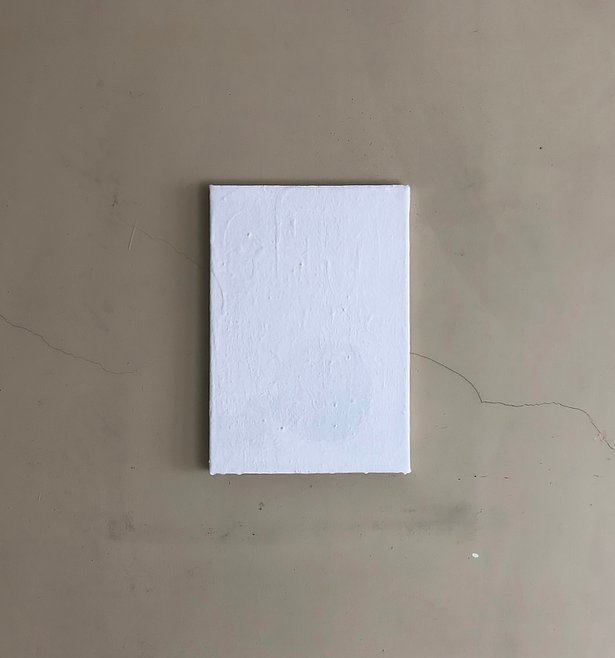
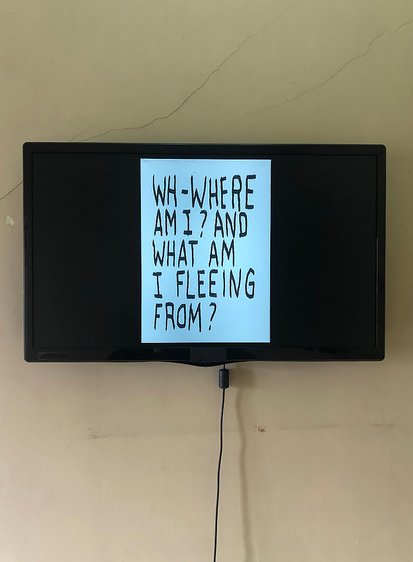
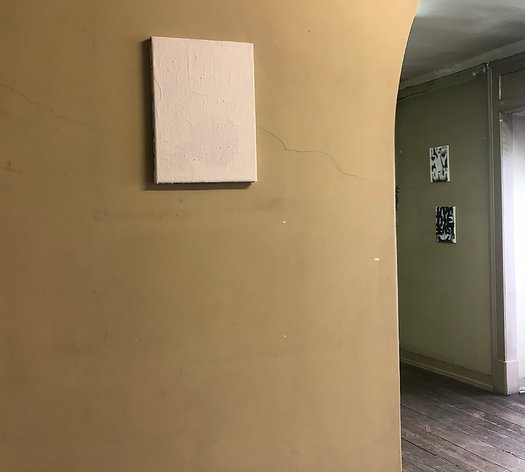
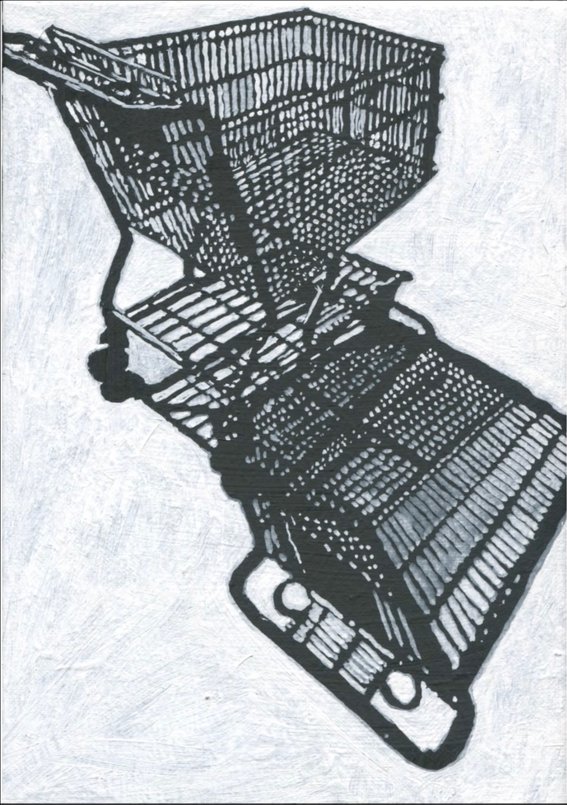
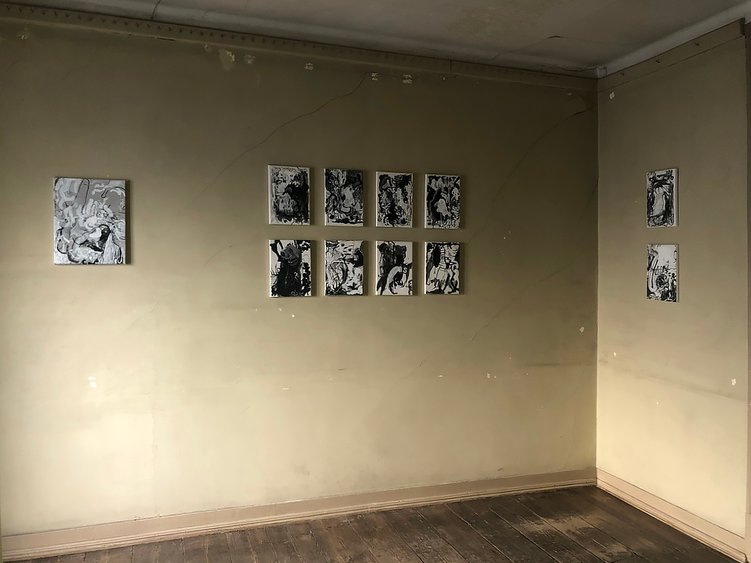

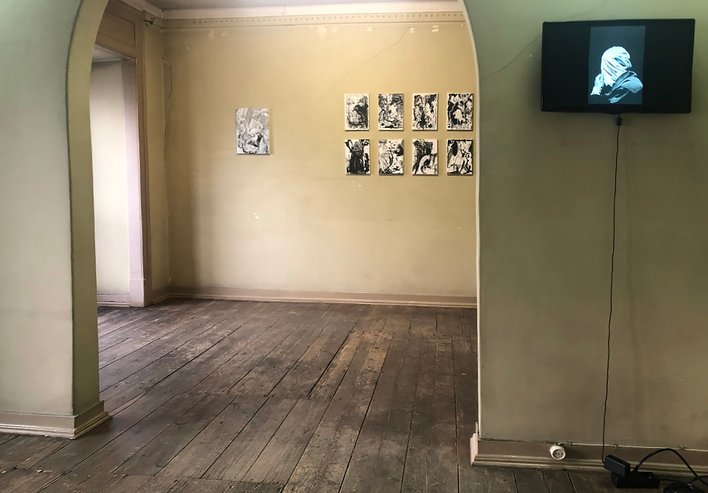
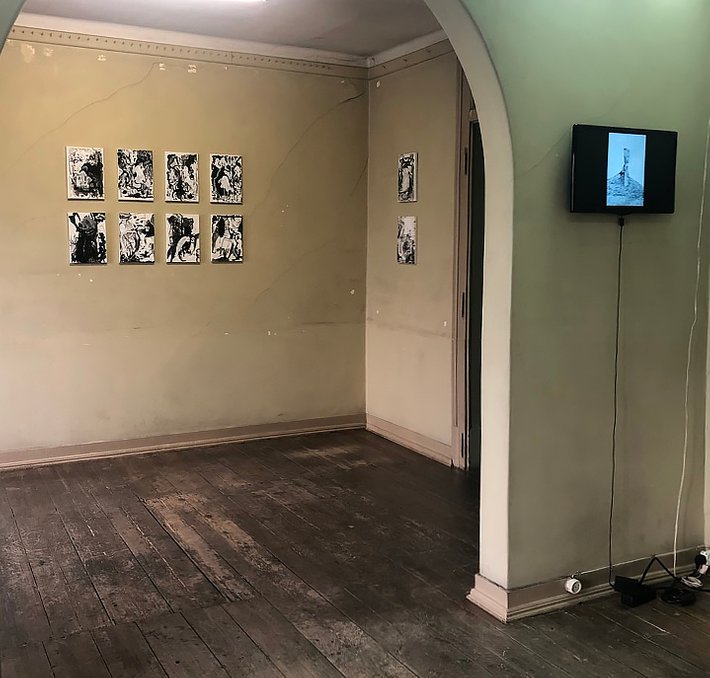
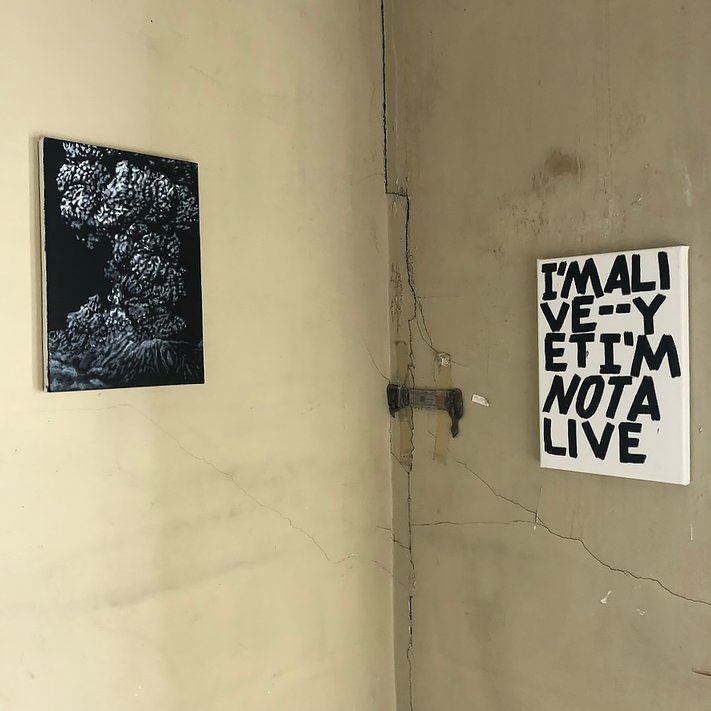
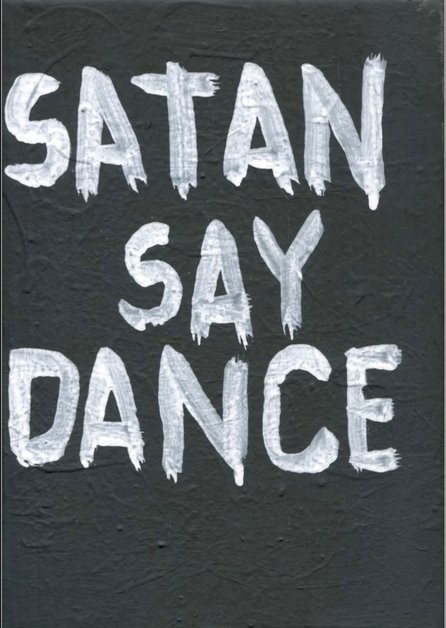
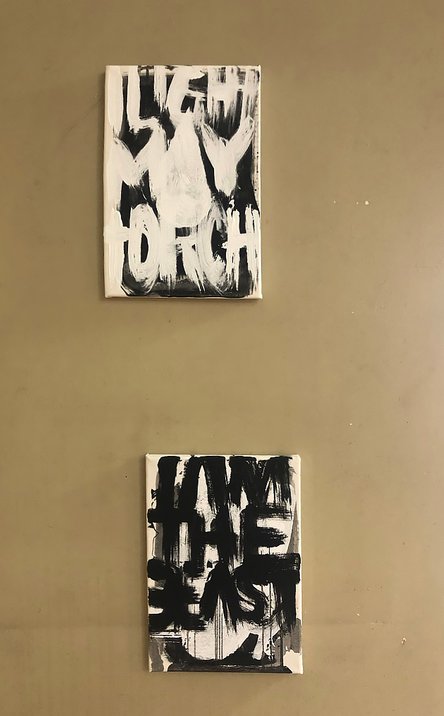
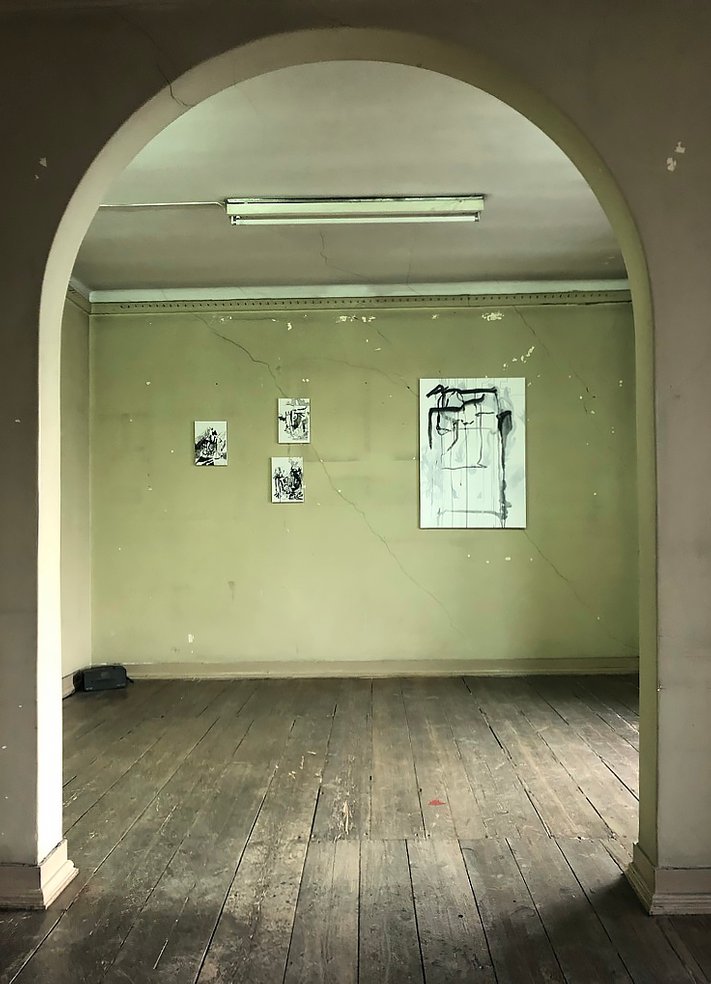
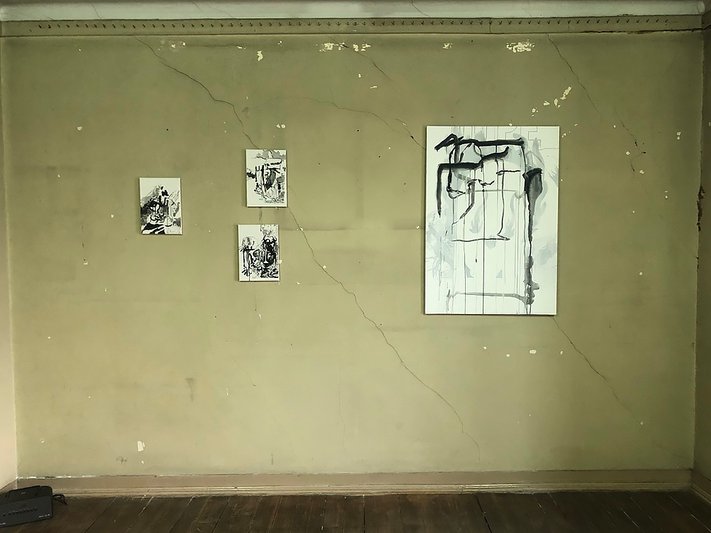
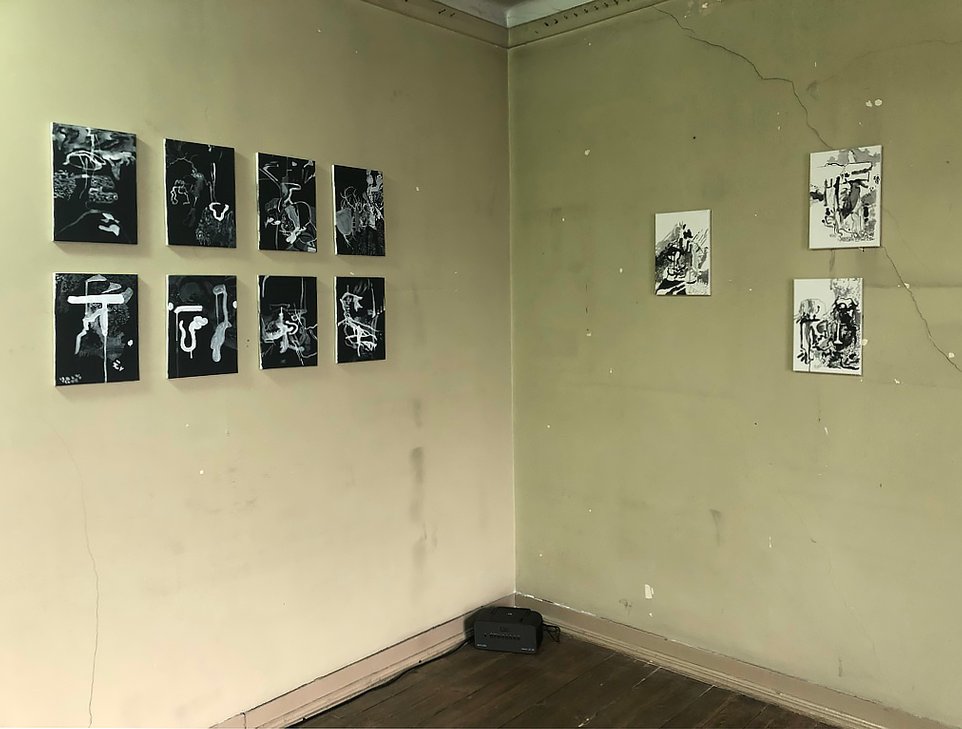
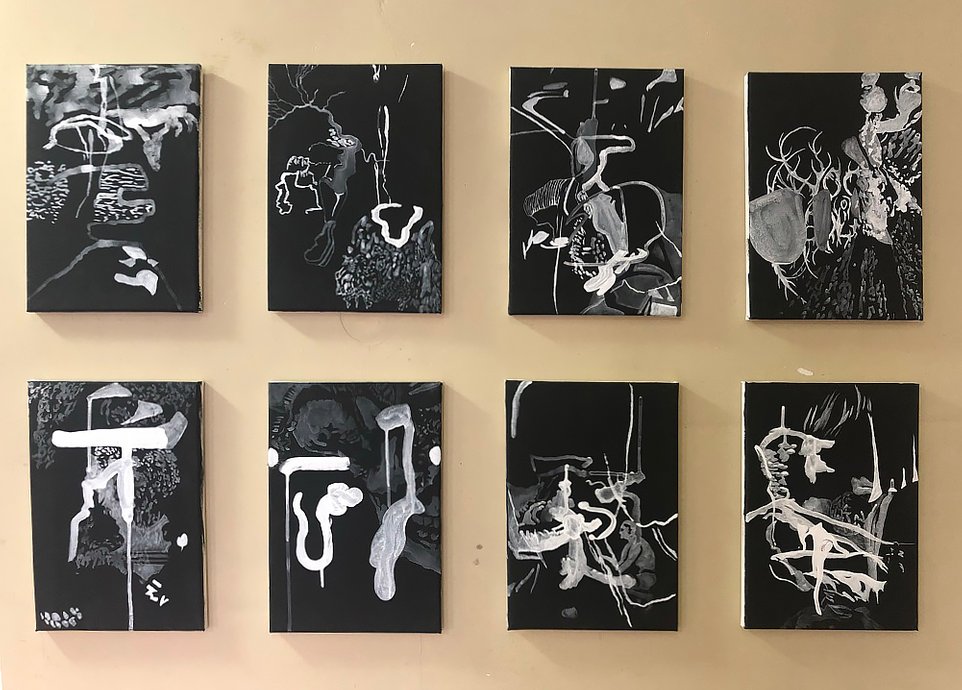
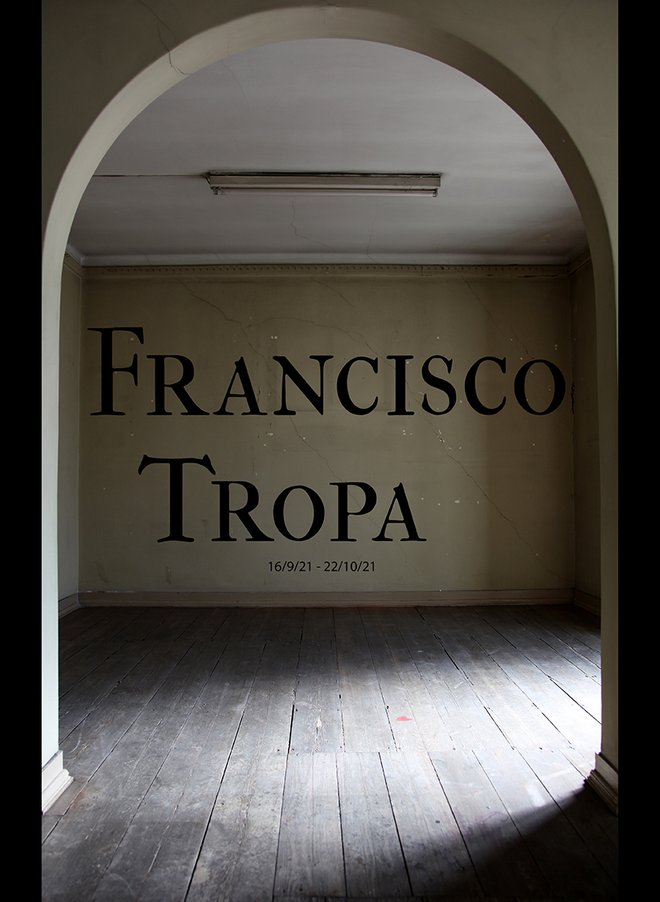
Francisco Tropa
Polaris
From the 16th of September to the 22nd of October 2021
Opening: 16 September, from 15h30 to 19h00
Francisco Tropa (1968) is the artist featured in the fifth exhibition at the Casa A. Molder Gallery.
Polaris is the title of his sculpture, as well as of the exhibition.
Polaris is the scientific name of the North Star or Pole Star, the star that seems to remain fixed while the other stars rotate around it, the star that has been guiding seafarers from times immemorial, the star that guides us.
At first glance, Francisco Tropa’s sculpture appears to offer us no guidance at all, such is the astonishment that this irregular-shaped (its front a section of wall and its back suggesting a cloud or a piece of clay), light-emitting object, inspires in us. Here, the hole in the wall is not something to peek through, but a means to irradiate light. The intermittent light is a cold, hypnotic force that adds a surface shine to the sculpture, while also dazzling us.
It can even be said that Polaris, as it lies on its painted plinth, like an extension of the wall, displayed like an artefact that has fallen from the sky, befuddles us: Is that piece of wall light or heavy? Is it made of clay, concrete, bronze?
Is it a prop from a play, the greatness of which transcends us, being life itself? Will it remain there permanently, while conducting us with a luminous cadence, reminding us that art can never be explained, only experienced?
According to the artist, the answer is a poem by John Keats:
“Bright star, would I were stedfast as thou art”
Bright star, would I were stedfast as thou art—
Not in lone splendour hung aloft the night
And watching, with eternal lids apart,
Like nature's patient, sleepless Eremite,
The moving waters at their priestlike task
Of pure ablution round earth's human shores,
Or gazing on the new soft-fallen mask
Of snow upon the mountains and the moors—
No—yet still stedfast, still unchangeable,
Pillow'd upon my fair love's ripening breast,
To feel for ever its soft fall and swell,
Awake for ever in a sweet unrest,
Still, still to hear her tender-taken breath,
And so live ever—or else swoon to death.
The exhibition is open to the public on weekdays, during the shop’s afternoon schedule, i.e. from 3h30pm to 7pm; visits on weekends and holidays can be made by previous appointment. Access to the Gallery is through the shop.
Covid-19
To enter the shop, mask-wearing and hand-sanitising are mandatory. Access to the gallery space is limited to three persons at a time.
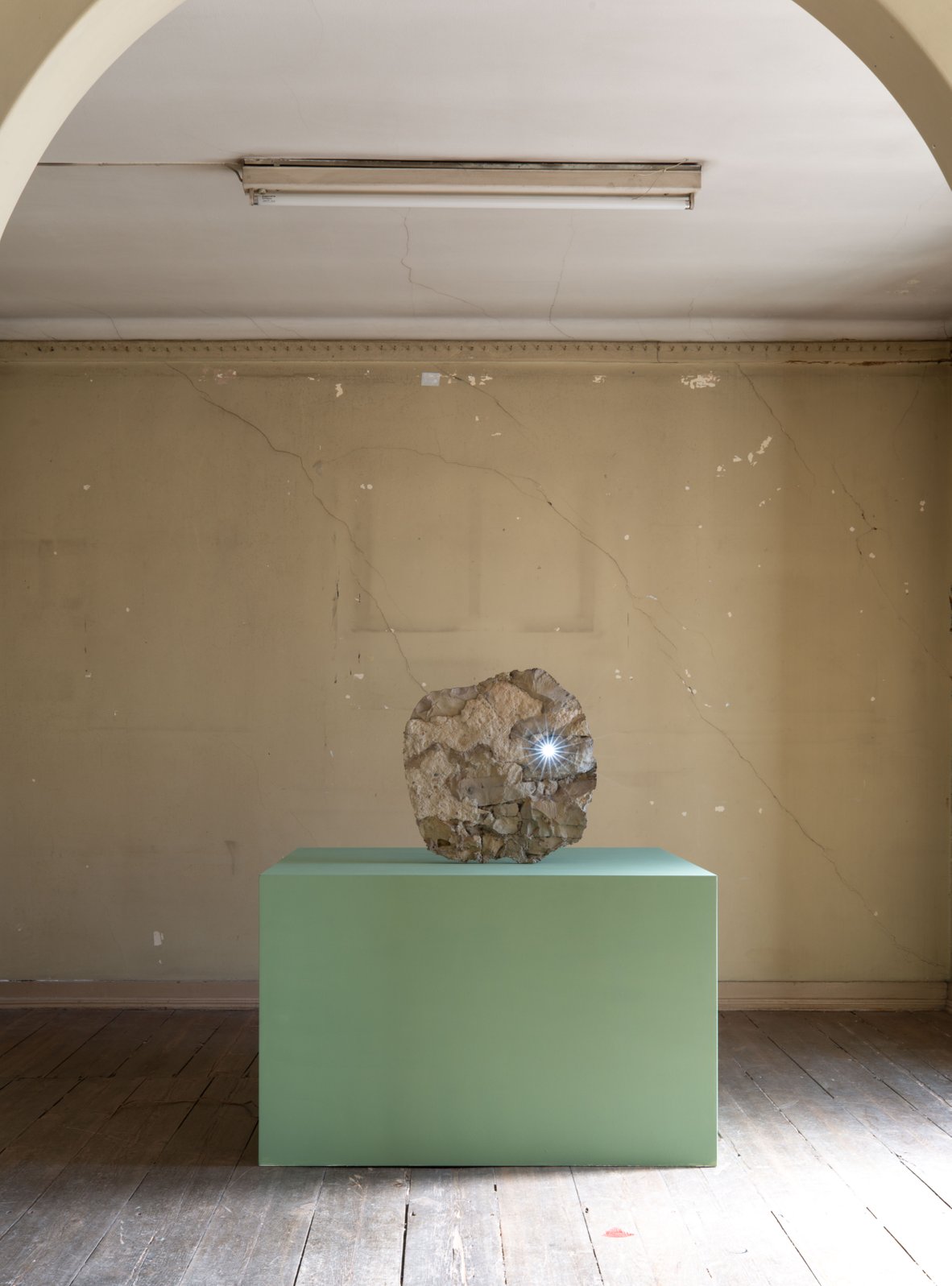
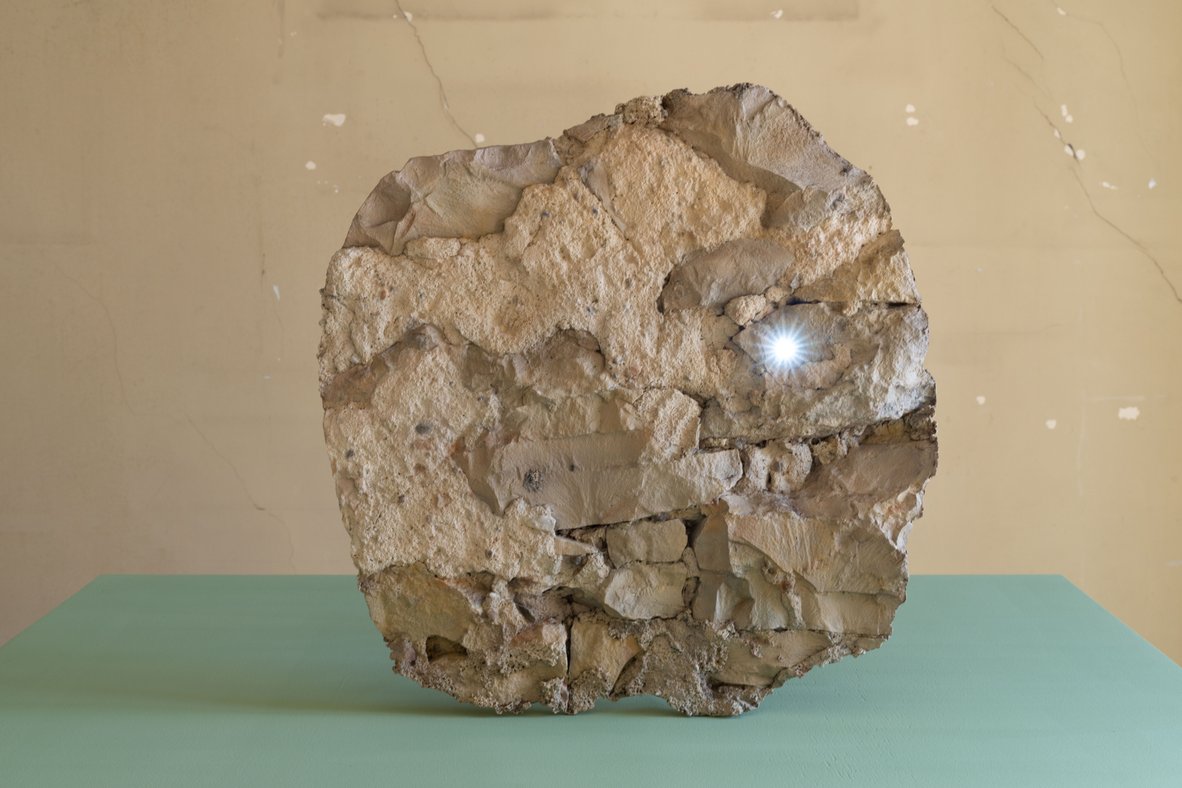
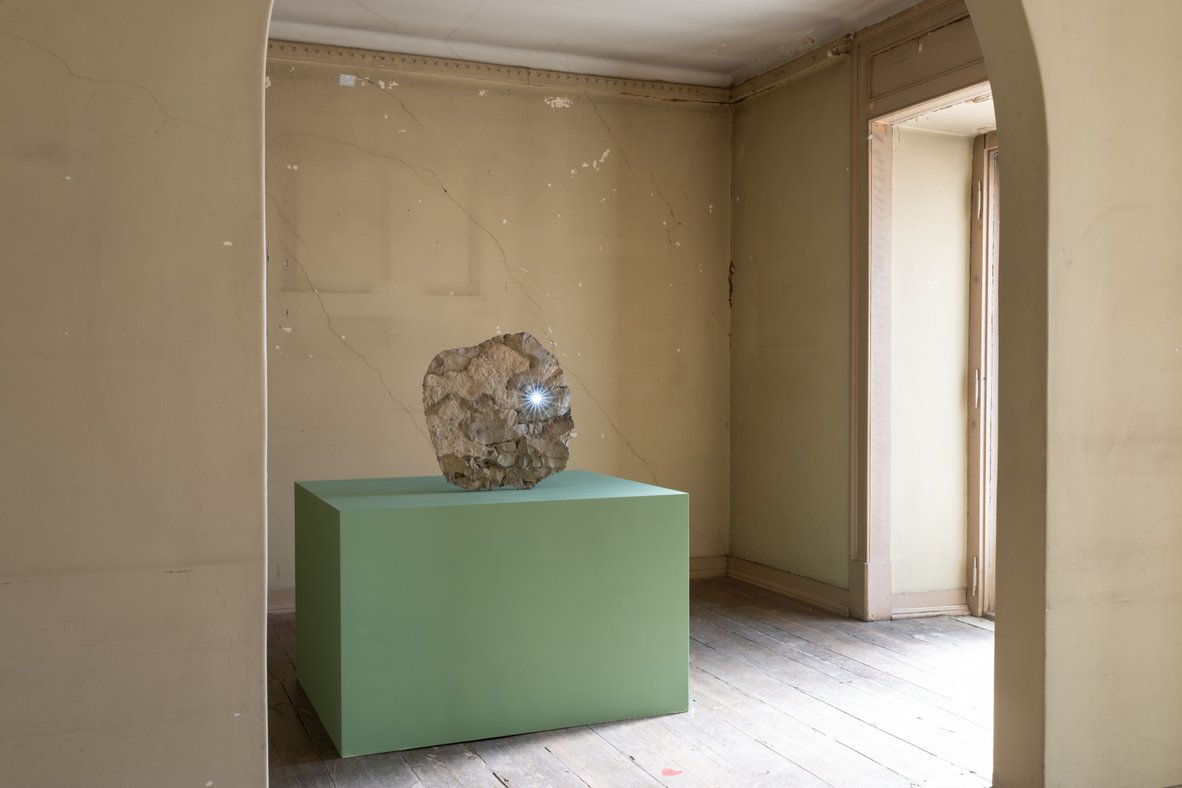
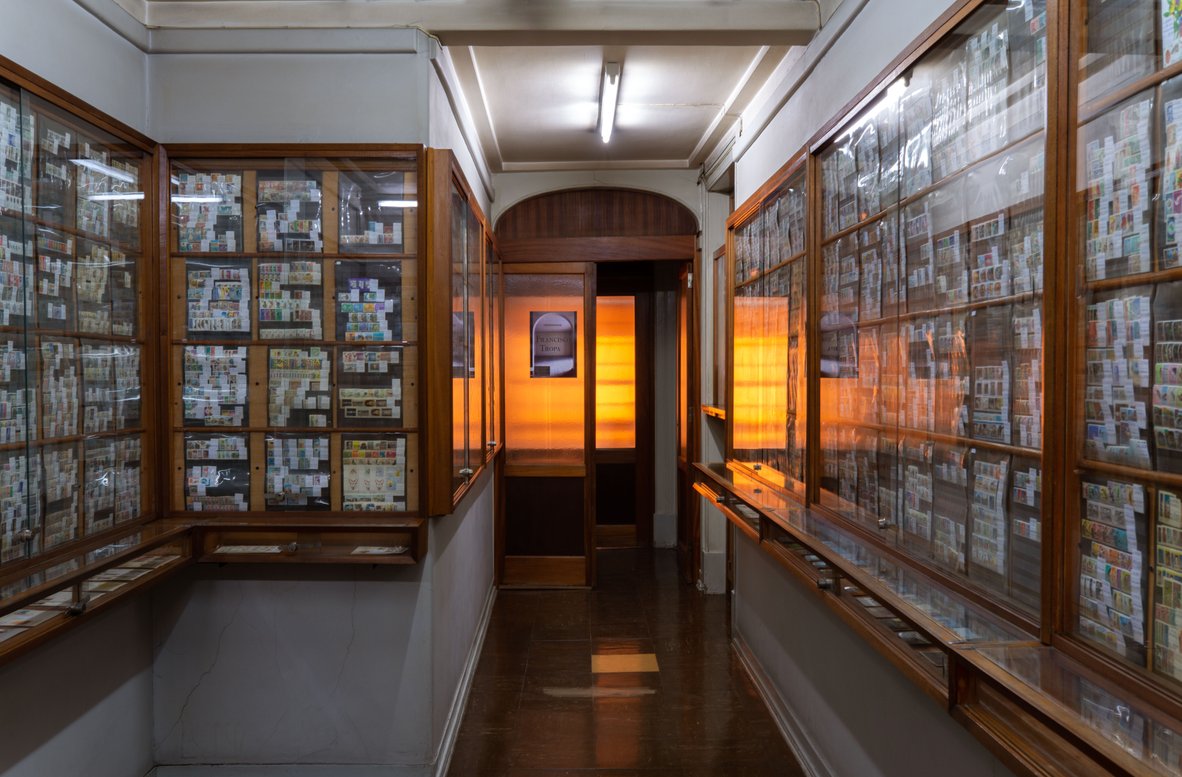
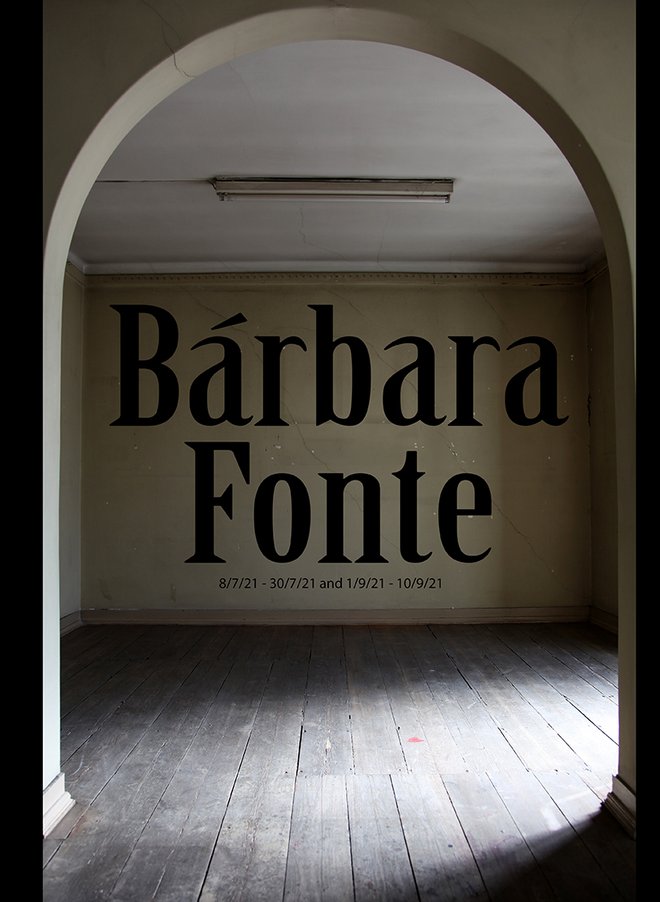
BÁRBARA FONTE
Pustule
From the 8th to the 30th of July and from the 1st to the 10th of September 2021
Opening: 8 July, from 15h30 to 19h00
Bárbara Fonte (1981) is the artist featured in the fourth exhibition at the Casa A. Molder Gallery.
Pústula [Pustule] is the title of the video piece that was specifically created for the Gallery’s space, and also the title of the exhibition. This video, which stemmed from the artist’s desire to “bring the rural world (Bárbara Fonte’s studio is in Paredes de Coura) to the centre of the city”, quickly became, as is usual with her video work, a personal narrative in which the everyday life of a body (always the artist’s) develops, through various actions, which appear innate, such is the intimacy we feel between the body and the camera, the construction of a time.
In these actions, we find allegory, religious rituals, deconstructed cinematic images, the artist’s love for late medieval Western paintings and sensuality, among other elements. Bárbara Fonte’s visual lexicon is quite precise, and the same can be said of her props, made by the artist herself, who shares with them her working space, a sort of cabinet of curiosities where the props are kept in small display cases, filled with inspiring, poetic objects.
In Pustule, the solemnity in Bárbara Fonte’s filmed actions sometimes becomes comic, like the work of a serious clown. Out of the solemn act a burst of laughter comes. That burst of laughter is liberating, but it also makes us vulnerable, revealing the artist’s strength. It could be said that Bárbara Fonte’s work vomits, while ripping out the norm and turning it inside out, offering a strange and distressing visual rawness.
This also applies to the drawings in this exhibition, done with a brush in Indian ink on Canson paper; in them, smiling mouths mix with a variety of largely organic forms, in which we see whatever we want or manage to see: from wombs to teddy bears, still lifes or vulvae, among many other things. Created from memories or small models, they are certainly an important part of this artist’s work, where drawing plays a central role, alongside her videos and photographs.
The exhibition is open to the public on weekdays, during the shop’s afternoon schedule, i.e. from 3h30pm to 7pm; visits on weekends and holidays can be made by previous appointment. Access to the Gallery is through the shop.
Covid-19
To enter the shop, mask-wearing and hand-sanitising are mandatory. Access to the gallery space is limited to three persons at a time.
Exhibition images from Pustule by Bárbara Fonte. Drawings Varible dimentions, Indian ink on Canson paper, 2021. Video: Videostills from Pústula, vídeo 16:9 (Digital Image), 1´21´´, Braga and Paredes de Coura, 2021. © Bárbara Fonte
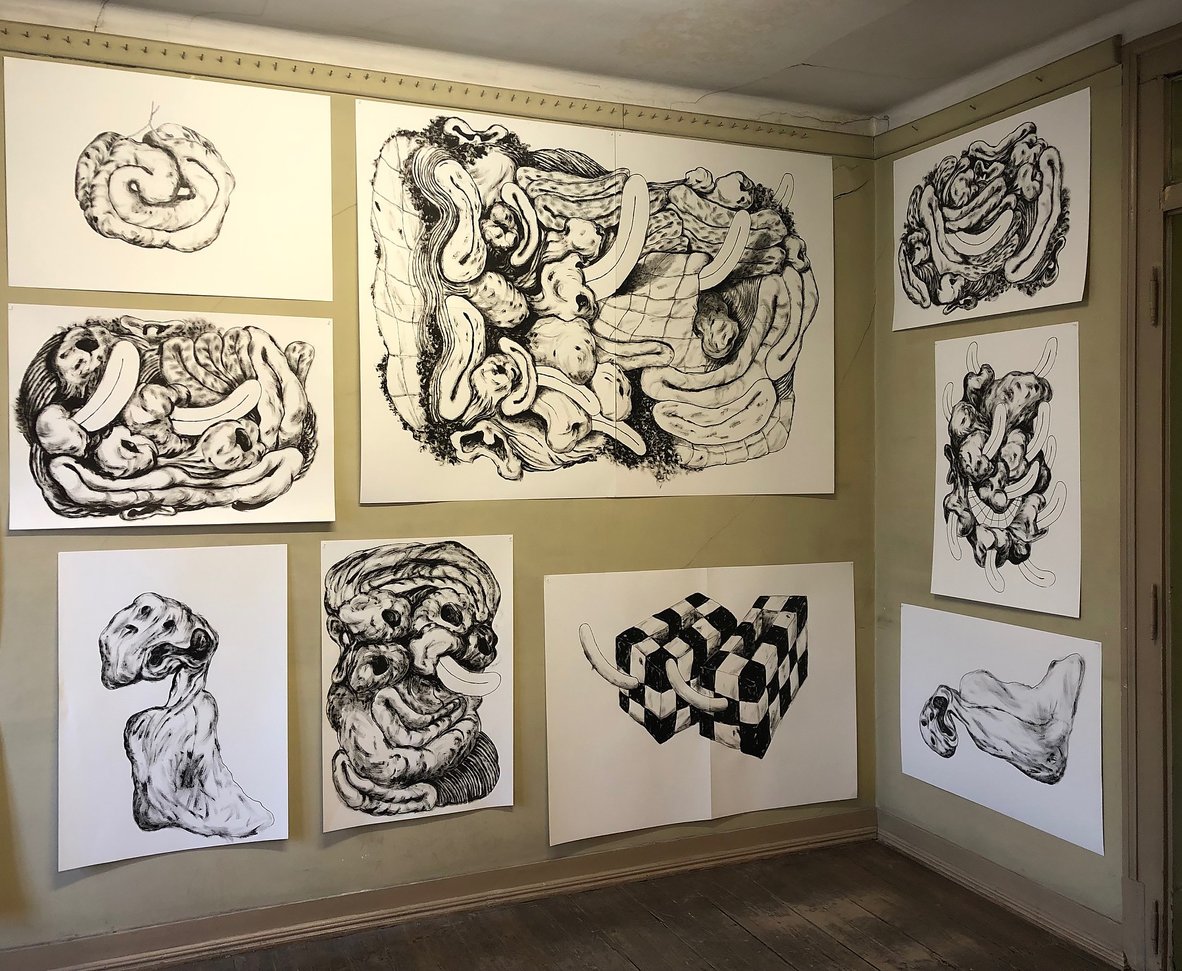
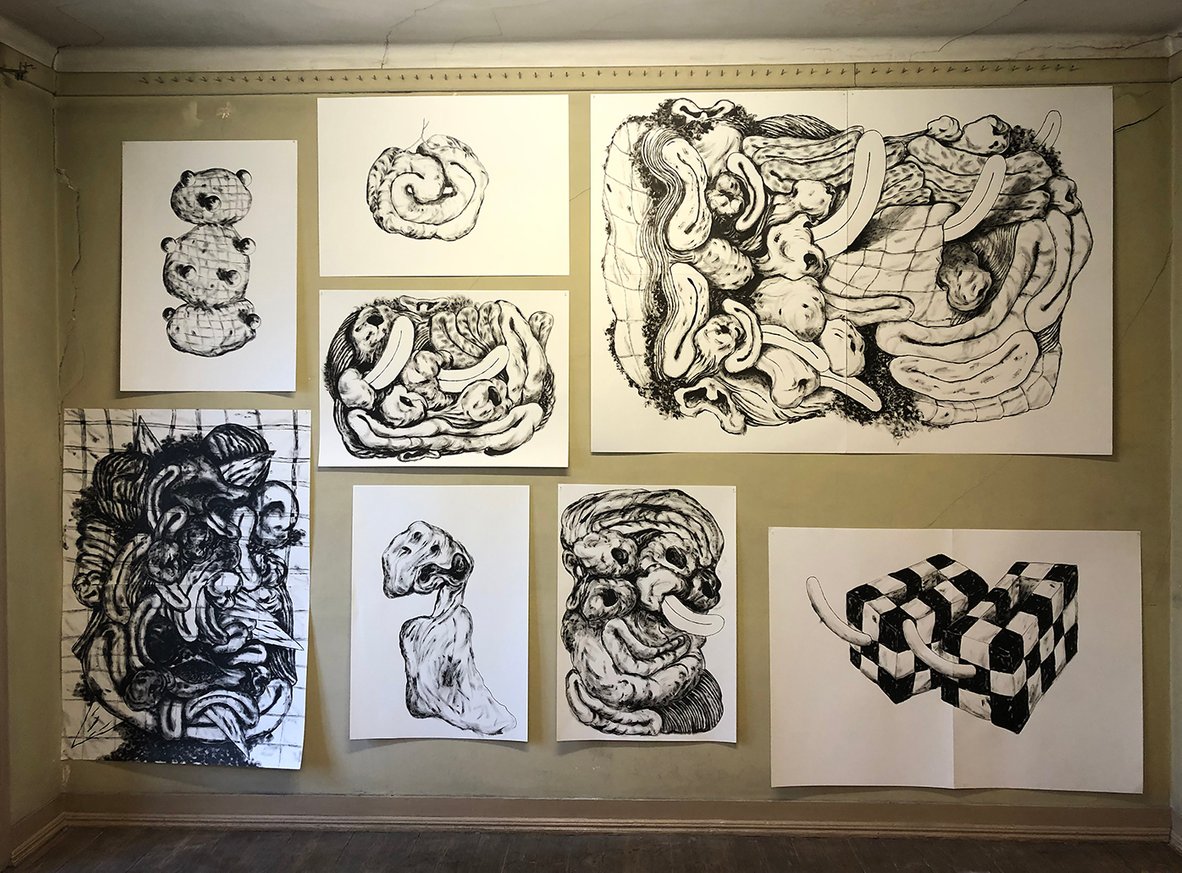
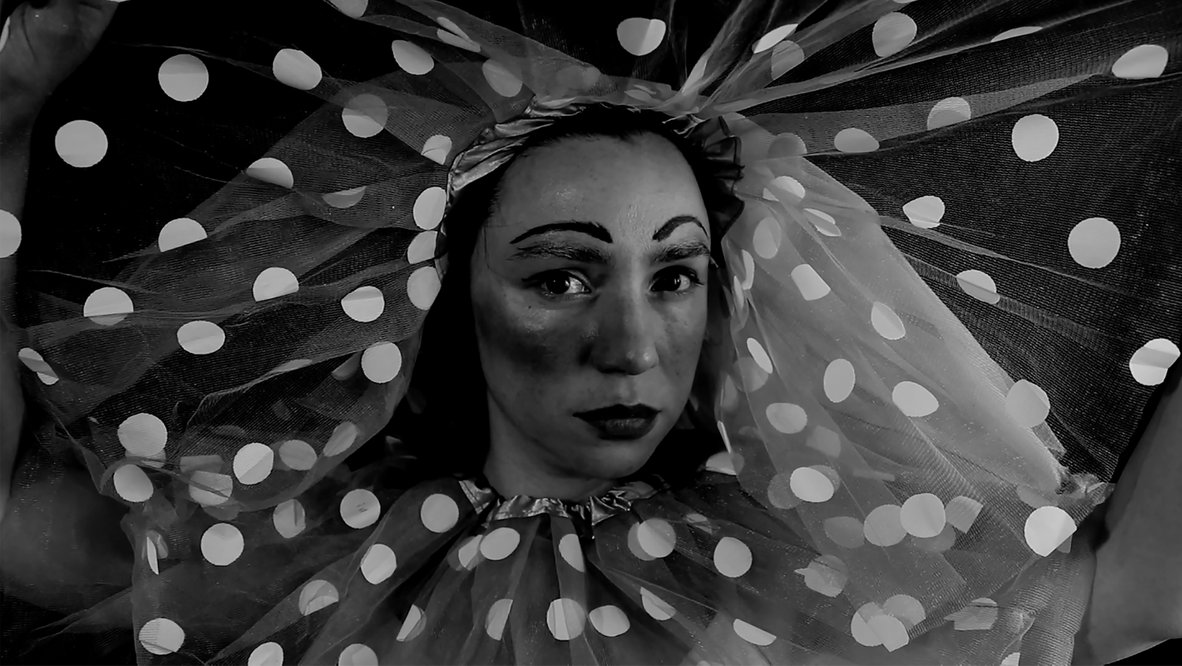
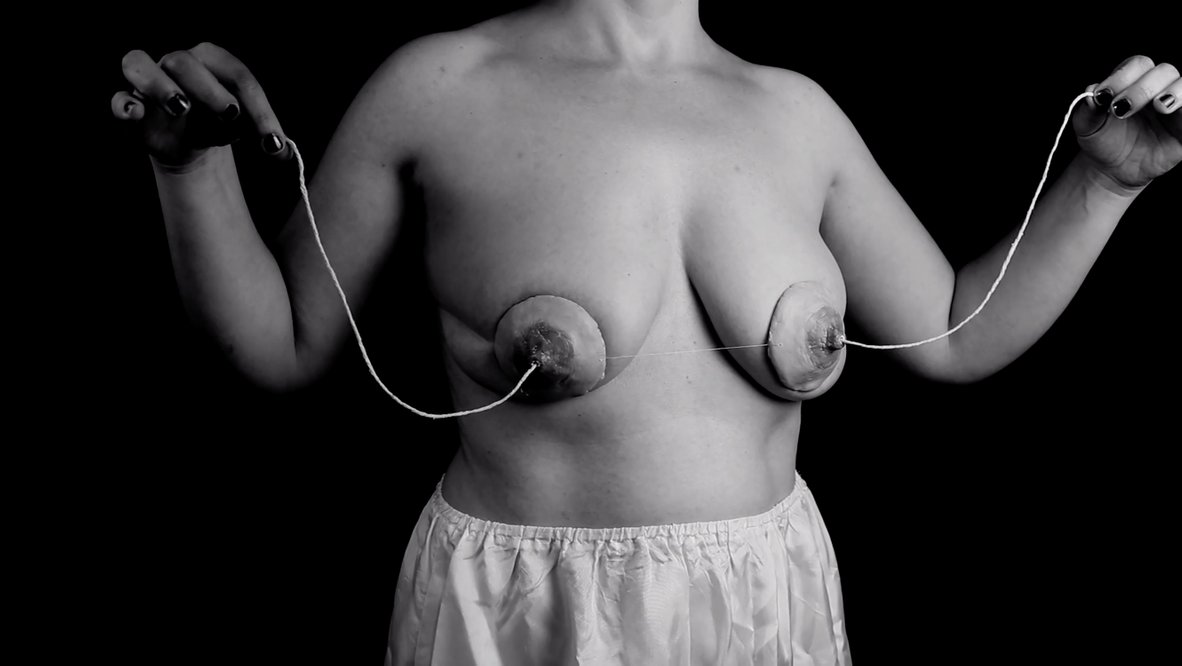
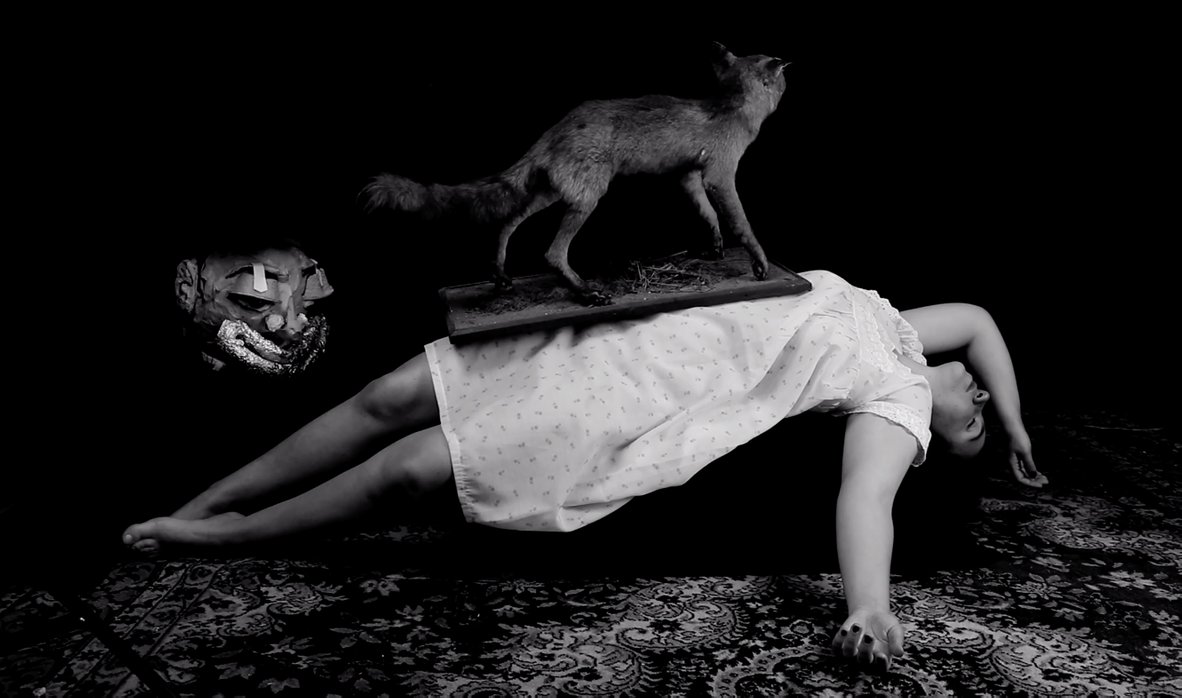
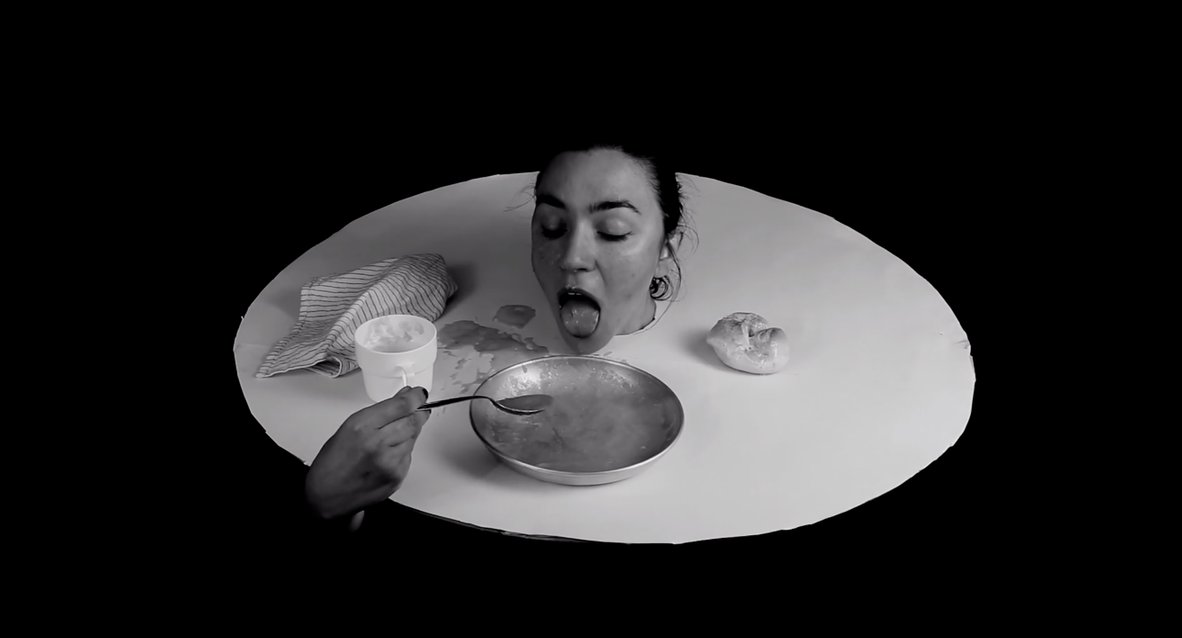
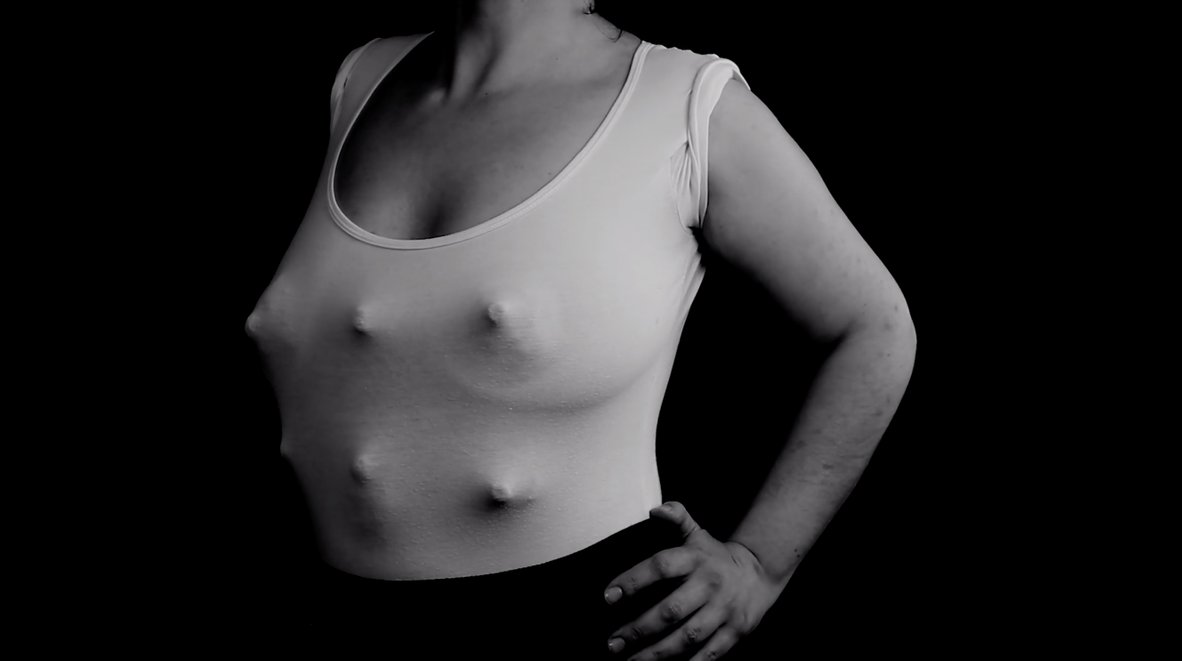
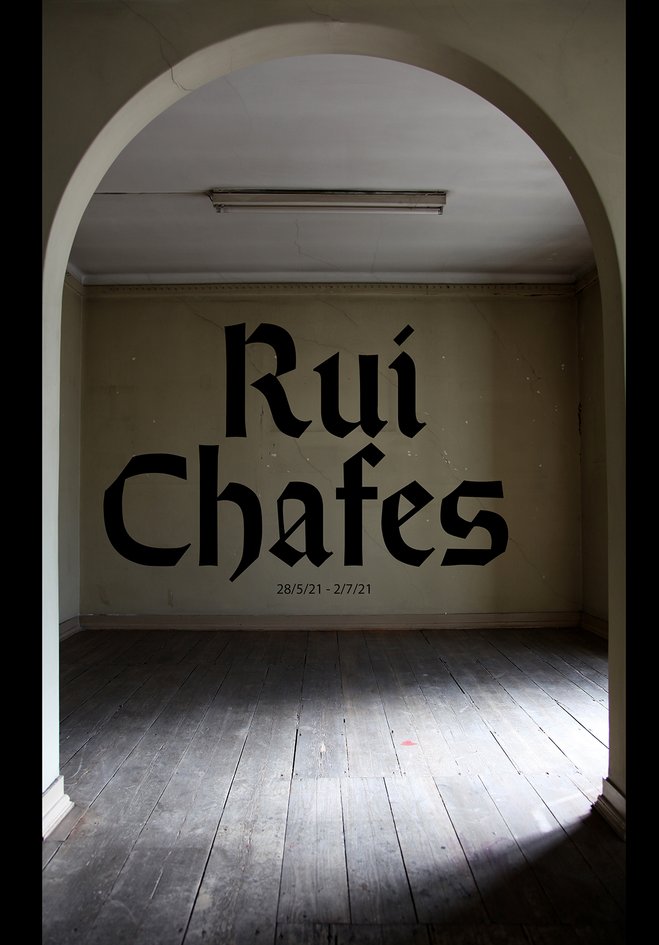
RUI CHAFES
Permanent beginning
From the 28th of May until the 2nd of July 2021
Opening: 28 May, from 15h30 to 19h00
Rui Chafes (1966) is the artist featured in the third exhibition at the Casa A. Molder Gallery.
Início permanente [Permanent beginning] is the title of the iron sculpture that names the exhibition and was created specifically for the gallery’s space. According to the artist, “Permanent beginning is that suspended time in which life and non-life, death and non-death find their source, their starting-point.”
The iron sculpture lies on the wooden floor, in semi-darkness. It is the female form of the origin of the world, but now it is dark, heavy and we do not know if it carries life in it. It could be a rotting skull inside a suit of armour that emerges out of the earth, like a germinating seed, several days after the battle. There is hope that it might be a portal, a spectre that will take us to another world or, better still, that will bring us back to this one.
Rui Chafes’ work is of this world. A work of fire and iron. This sculptor, who works in series that stretch across time and sees his pieces as shadows, believes that the origin of art was the tension between the sacred and the profane and that we must know what our destiny on earth is. With Permanent beginning, he brings us a new sculpture, and thus an expansion in the language of art.
The exhibition is open to the public on weekdays, during the shop’s afternoon schedule, i.e. from 3h30pm to 7pm; visits on weekends and holidays can be made by previous appointment. Access to the Gallery is through the shop.
Covid-19
To enter the shop, mask-wearing and hand-sanitising are mandatory. Access to the gallery space is limited to three persons at a time.
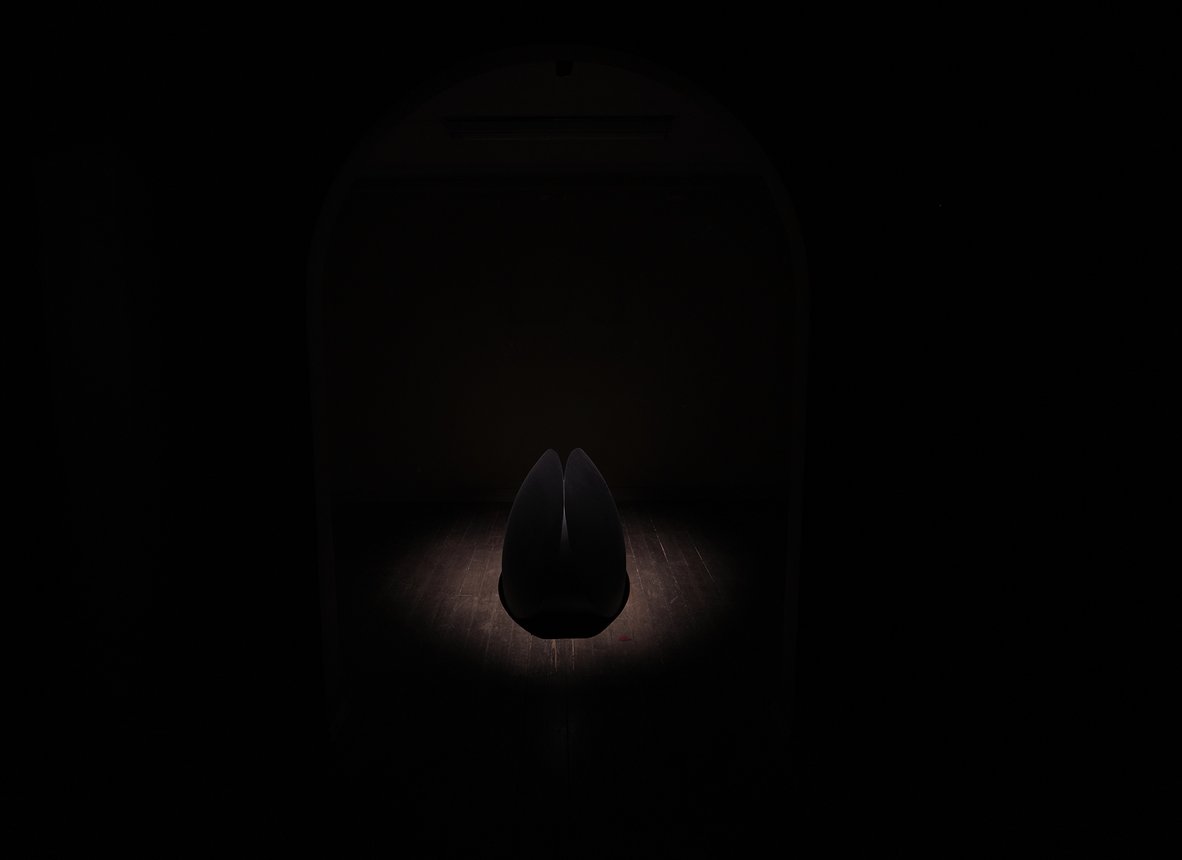
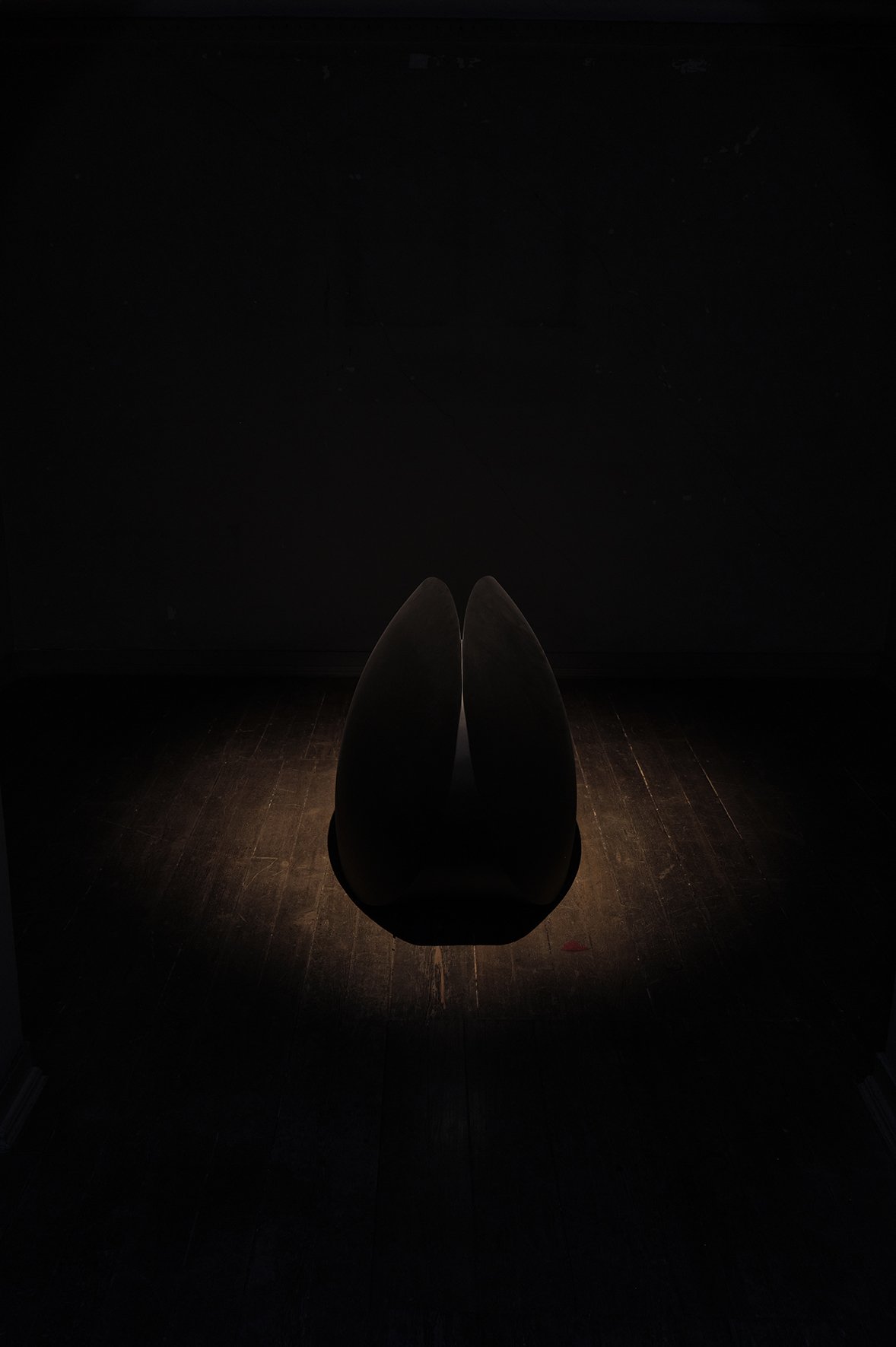
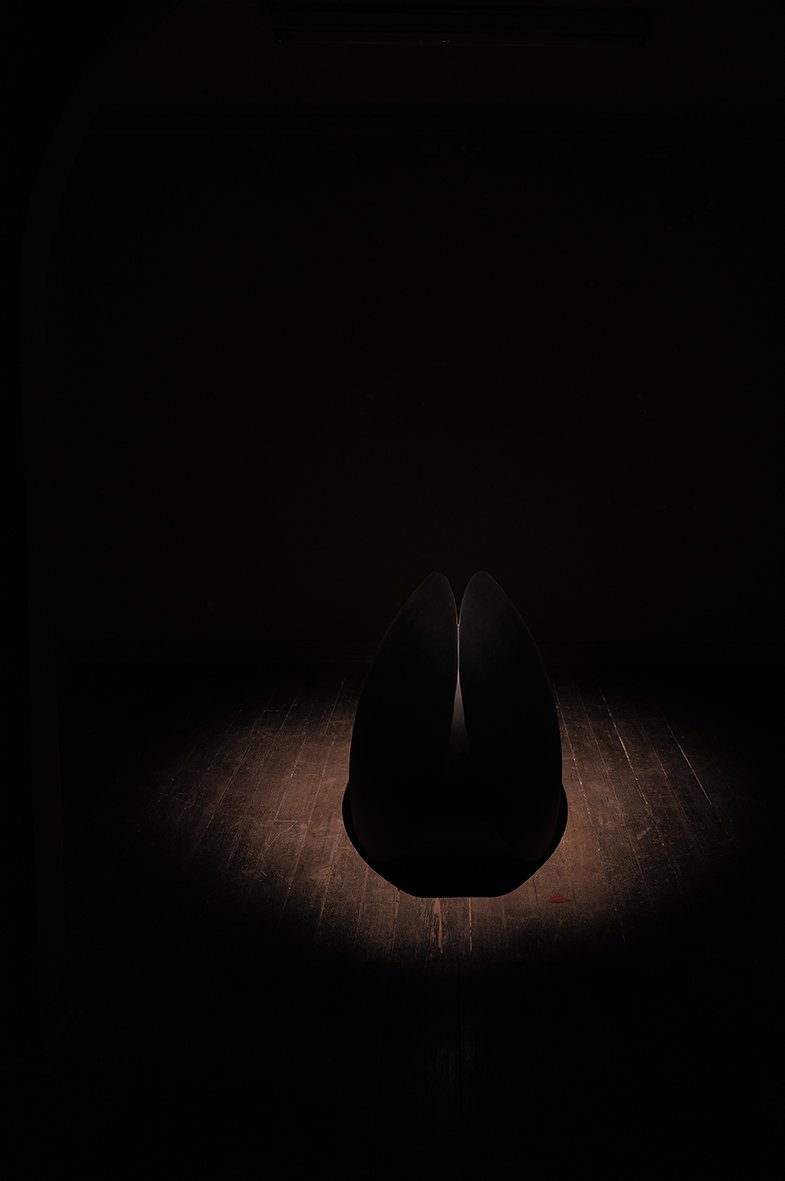
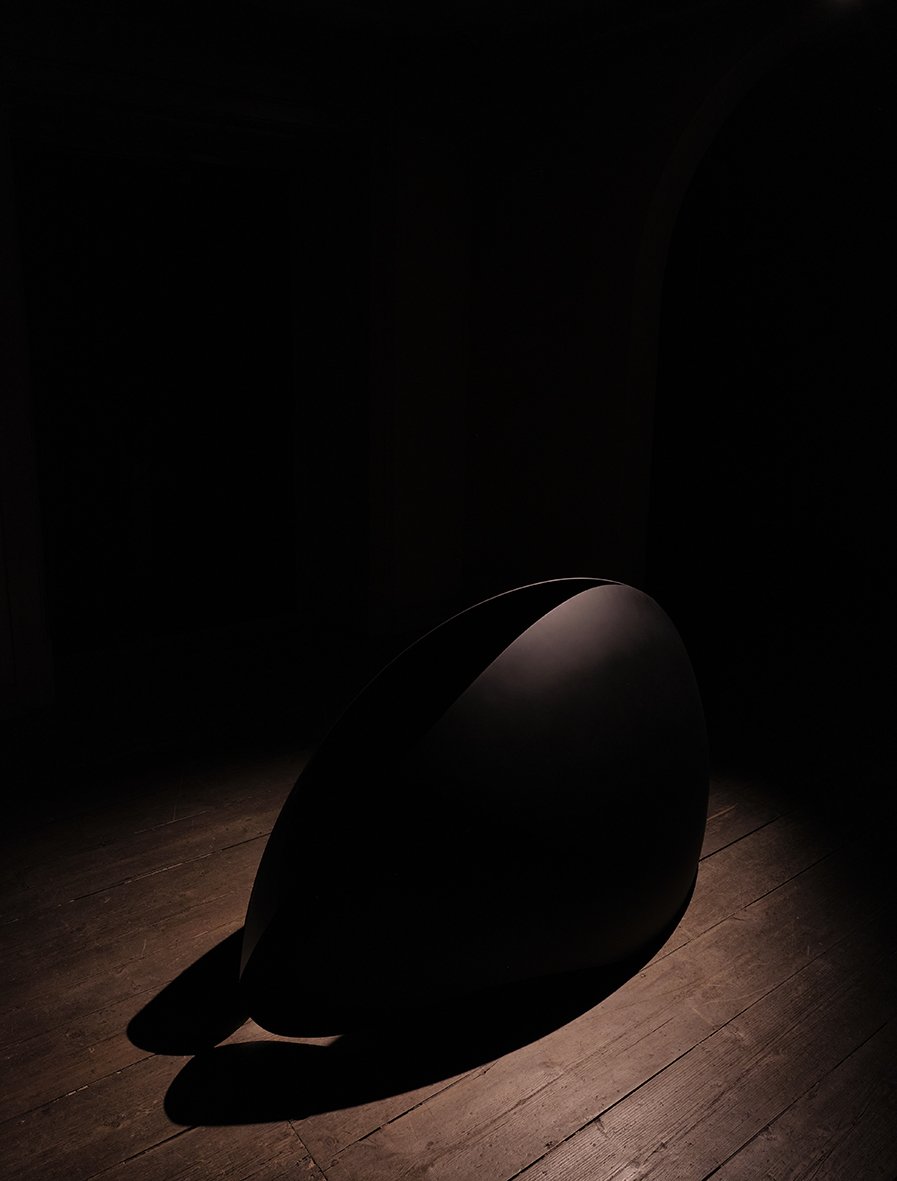
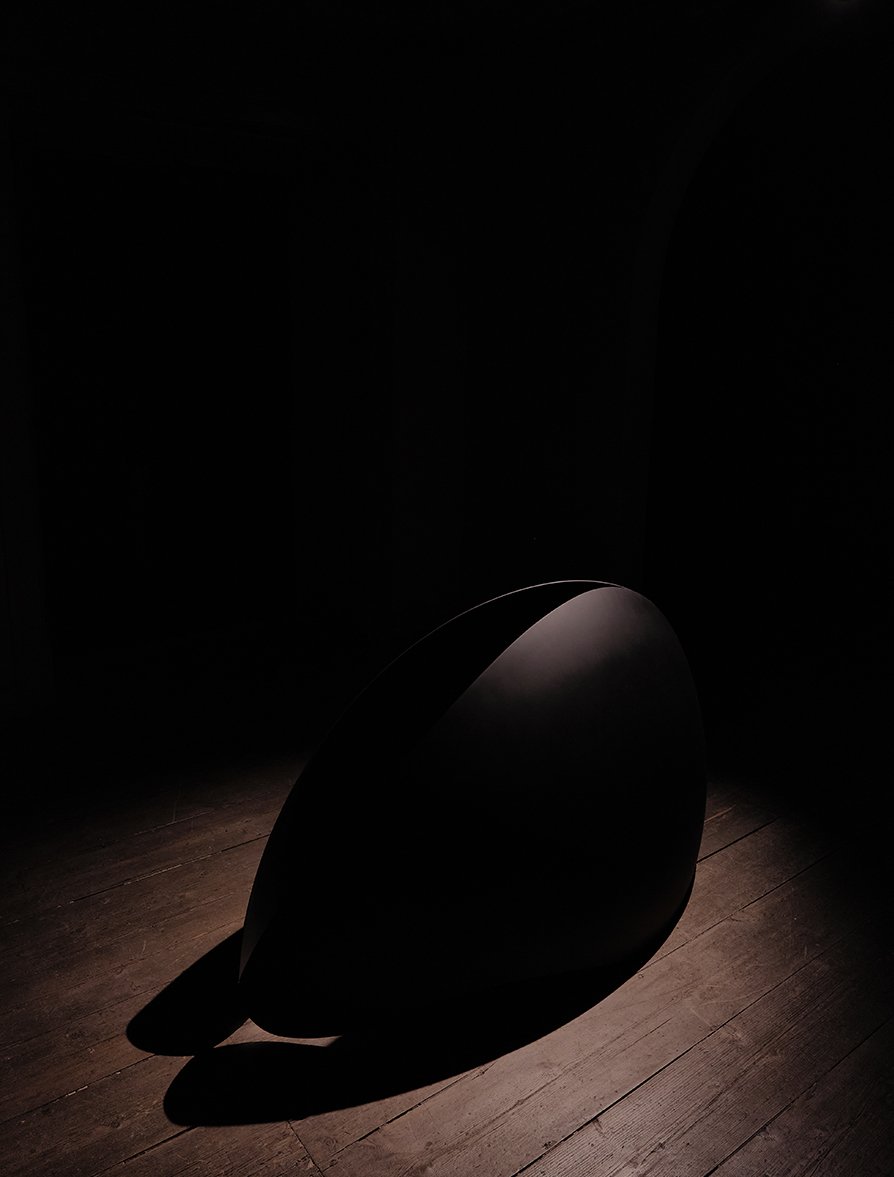
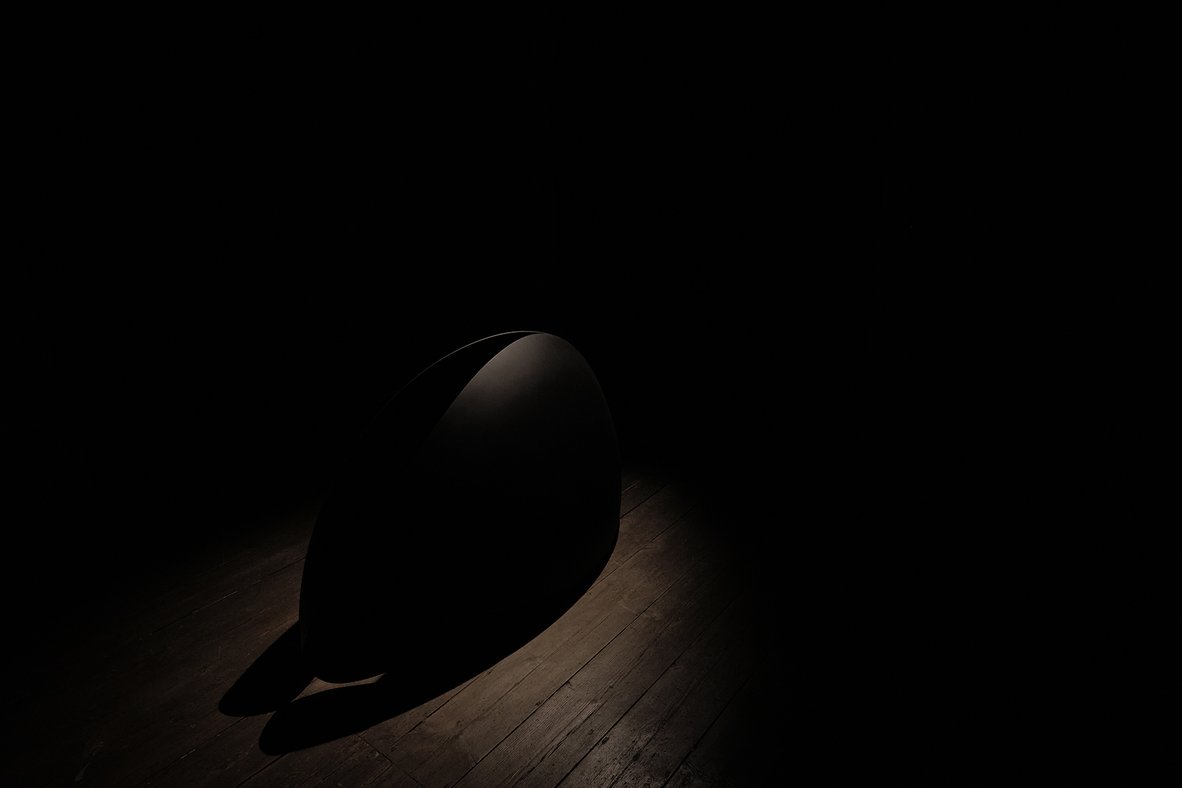
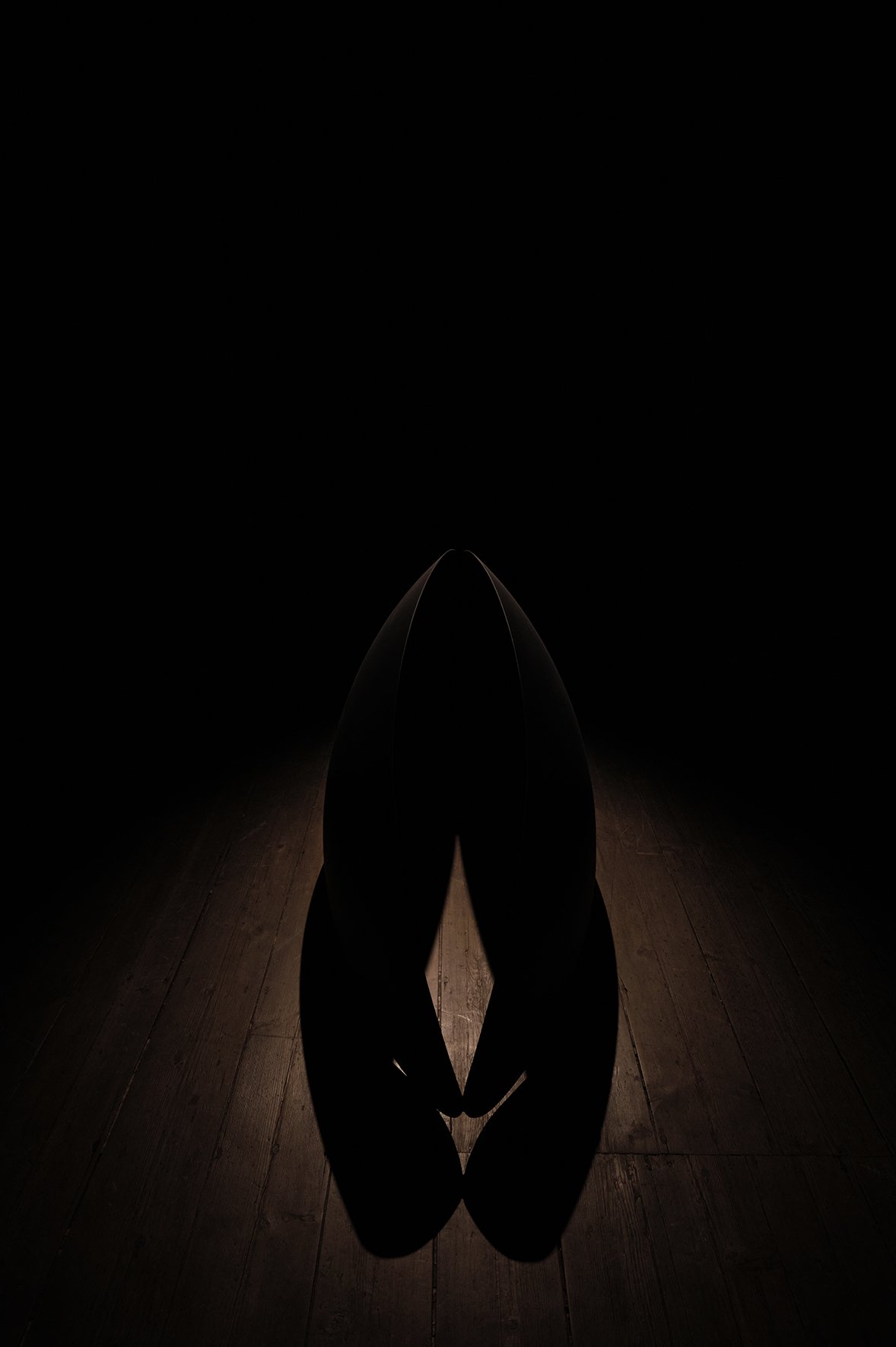
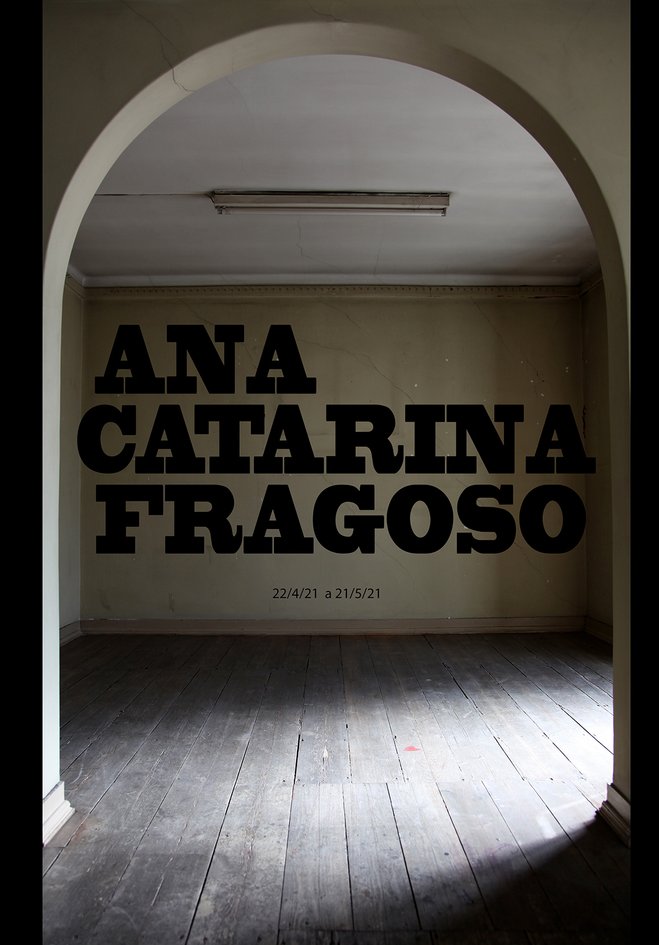
ANA CATARINA FRAGOSO
Mountains Running Through Our Fingers
From the 22nd of April until the 21st of May 2021
Opening: 22 April, from 15h30 to 19h00
The Casa A. Molder Gallery’s second exhibition brings to us the work of Ana Catarina Fragoso (1984). According to the artist, “As montanhas por entre os dedos” [Mountains running through our fingers] – the exhibition’s title – “is a painting installation that was conceived for the space of the Casa A. Molder Gallery.
It is a movement between two dunal landscapes, between day and near night, as we walk from the sea to the land.”
There is a confrontation in these landscapes, one sandy, the other overgrown, in two very definite moments in time, noon and incandescent sunset. The dazzling daylight and the approaching dusk, which, instead of blinding us, allows us to see, for one short moment, a whirlwind of colours and memories. It is a confrontation between aridity and abundance, between metal and paper. The mouldable aridity of the depiction of those sand mountains, erotic under that full light, set on the solidity of metal, can cause us to wander, while the abundance of the light that dwindles, set on the lightness of paper, is a spectacle that compels us to remain there.
These paintings are representations of landscapes chosen by Ana Catarina Fragoso. The artist finds her models during walks she takes with her camera, with that goal in mind. Then, on a luminous screen, her fingers enlarge those landscapes, revealing colours imperceptible to the naked, untrained eye. Painted while laid horizontally on the floor, in acrylic, one on metal and the other on paper, these previously unshown paintings find here, in the space of the Casa A. Molder Gallery and in their final vertical position, a new confrontation and relationship with our bodies and gazes.
The exhibition is open to the public on weekdays, during the shop’s afternoon schedule, i.e. from 3h30pm to 7pm; visits on weekends and holidays can be made by previous appointment. Access to the Gallery is through the shop.
Covid-19
To enter the shop, mask-wearing and hand-sanitising are mandatory. Access to the gallery space is limited to three persons at a time.
Mountains Running Through Our Fingers
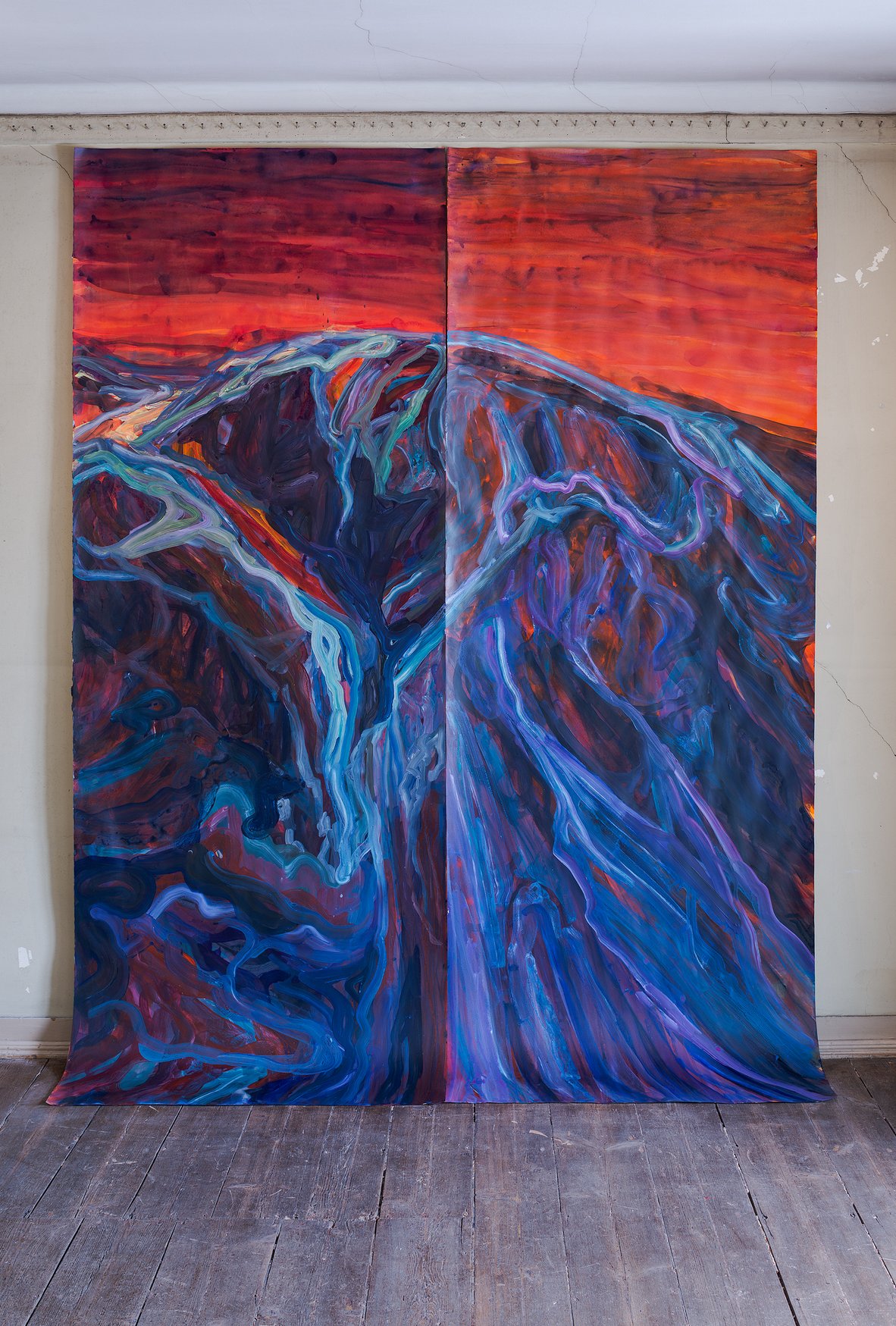
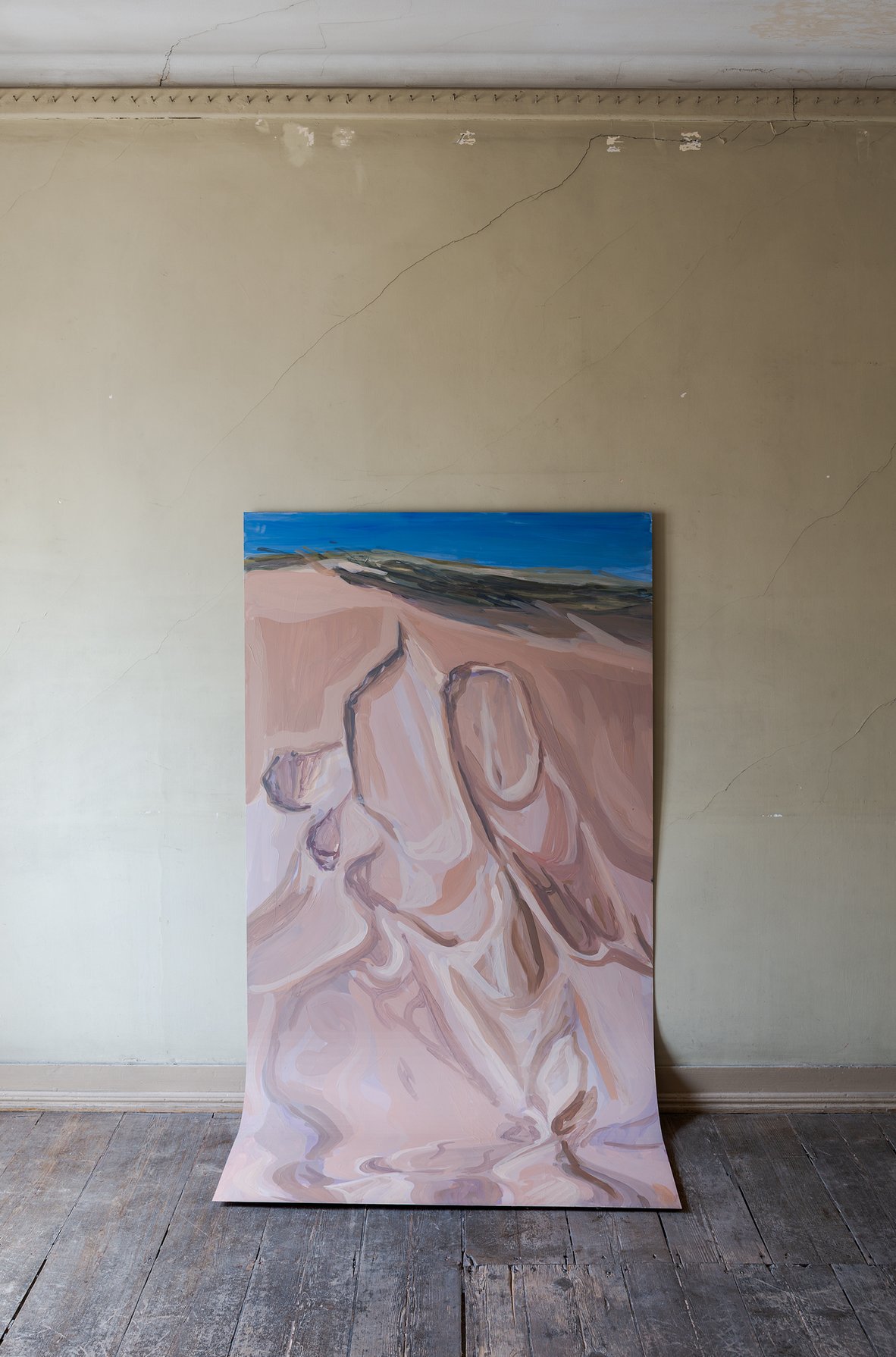
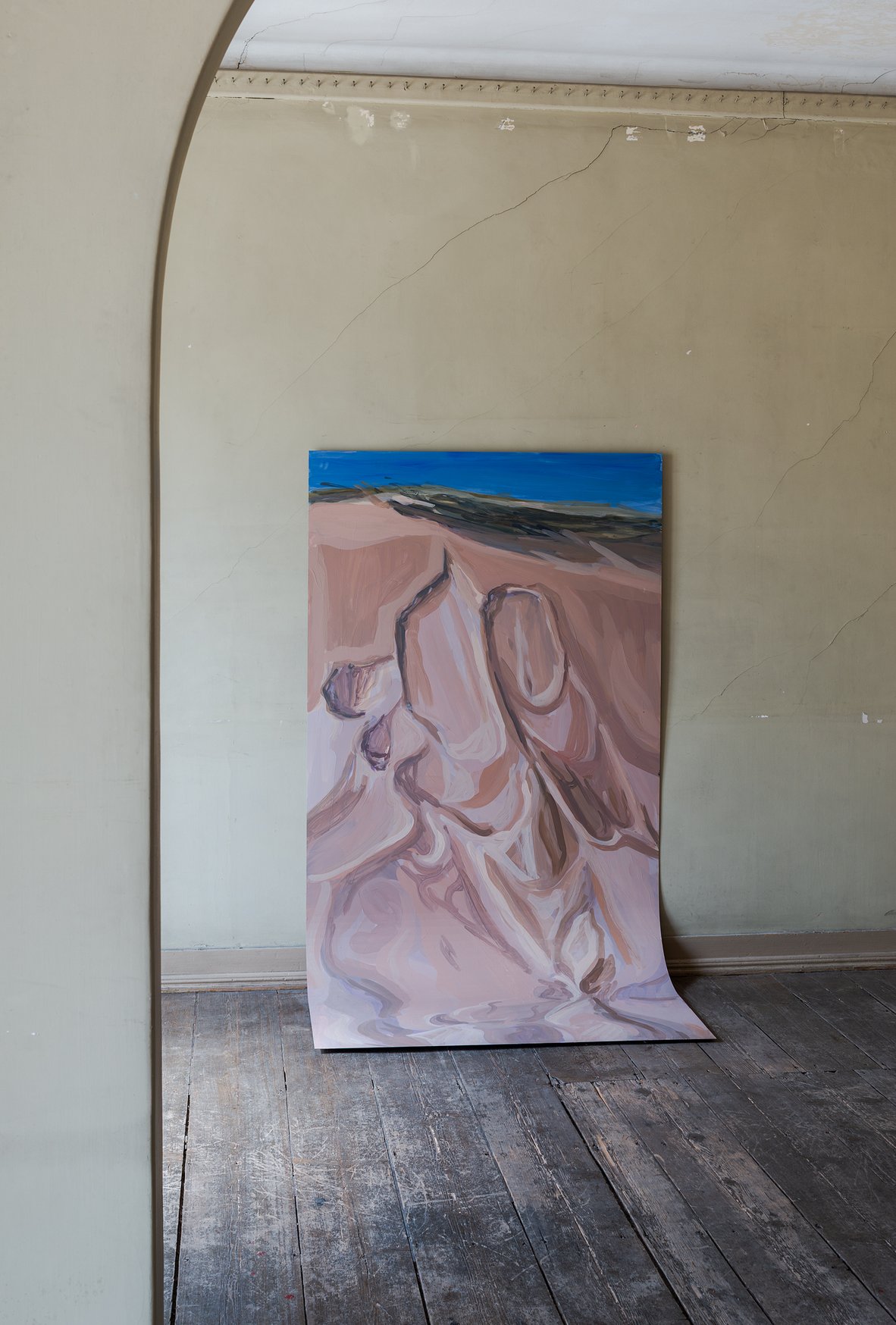
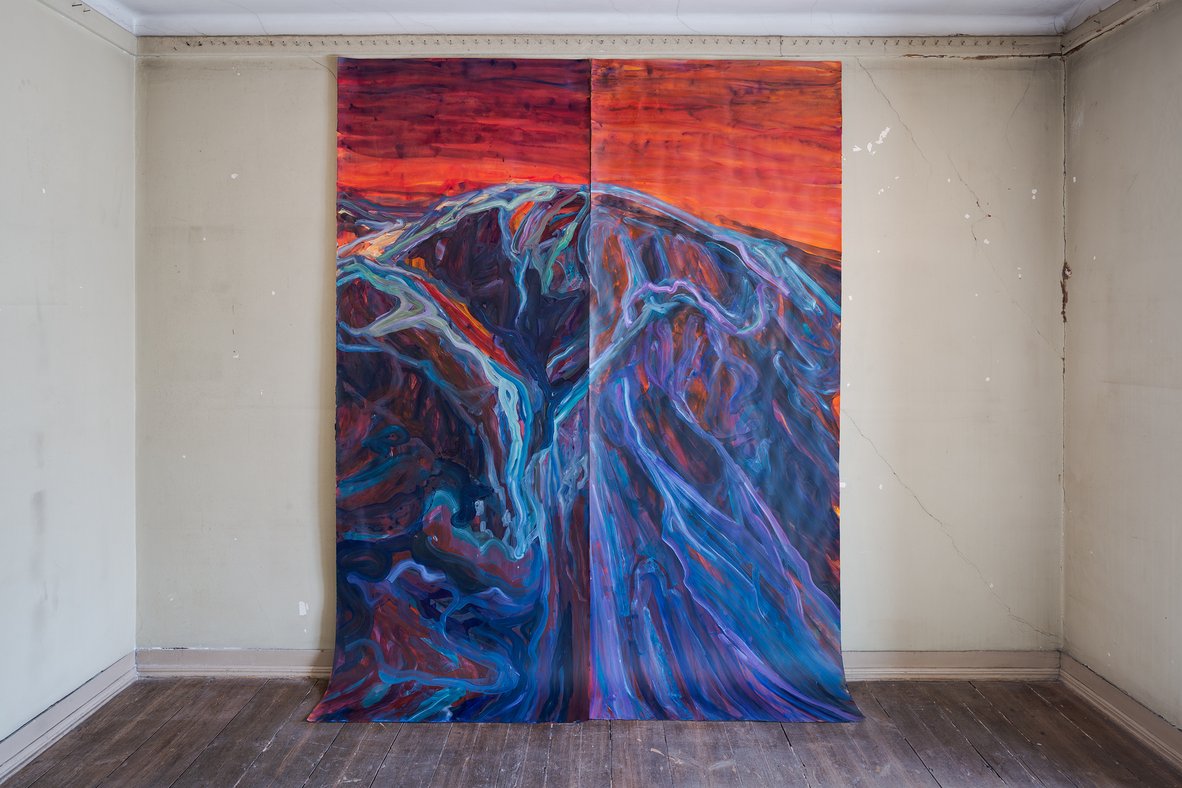
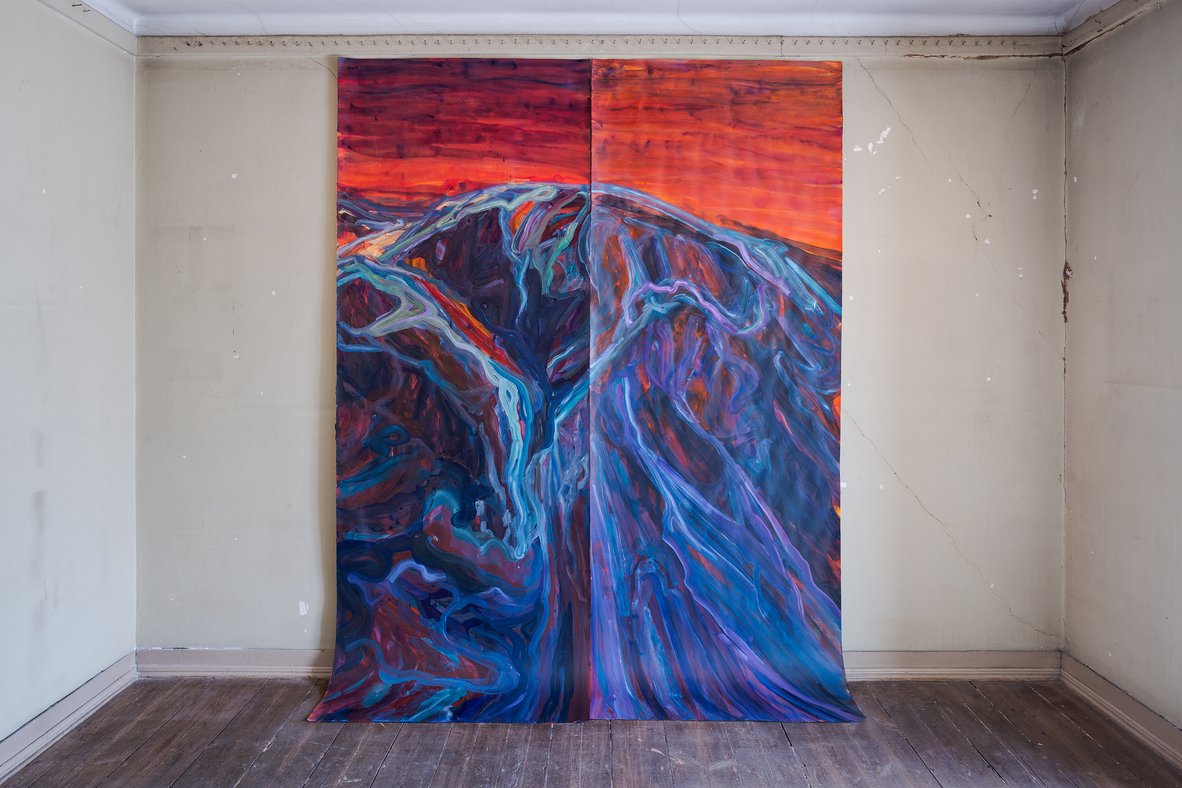
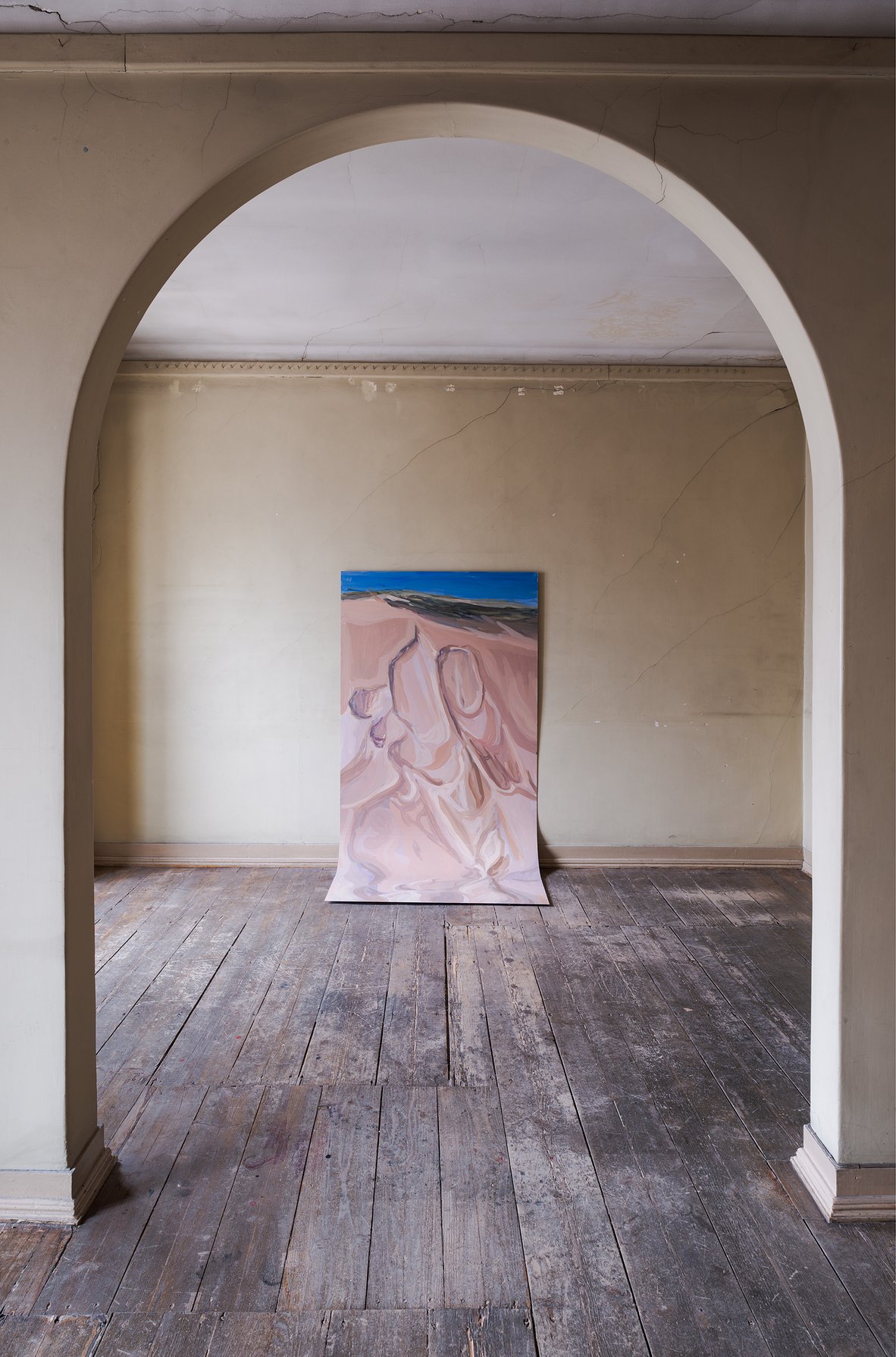

GUSTAVO SUMPTA
Luto
From the 19th of November 2020
until the 8th of January 2021
Opening: 19 November, from 15h30 to 19h00
The Casa A. Molder Gallery opens its doors with Luto, an exhibition by Gustavo Sumpta (1970).
Luto is also the title of the ephemeral sculpture that was specially created for the premises of the Casa A. Molder Gallery. The piece envelops and delimits the gallery’s space, inviting the viewer to attentively interact with it. In the words of the artist, who frequently uses in his sculptures tapes from VHS cassettes, an obsolete magnetic recording material: “This sculpture is presented like it was a residue from a performance art piece. It is a celebration of continuous, repeated movement. Here, Mourning [Luto] is the metamorphosis of lamenting”.
The exhibition is open to the public on weekdays, during the shop’s afternoon schedule, i.e. from 3h30pm to 7pm; visits on weekends and holidays can be made by previous appointment. Access to the Gallery is through the shop.
Covid-19
To enter the shop, mask-wearing and hand-sanitising are mandatory. Access to the gallery space is limited to three persons at a time.
Adriana Molder© All Rights Reserved